September 10, 2023
Martha O'Kennon
Dear Friends, would you believe me if I told you that Autumn decided to come to Albion a bit early? We have had several dark days, mostly not rainy, but certainly damper than we had gotten used to over the short but eventful Summer. The major characteristic of the scenery has been the gorgeous Goldenrod, which ripened all at once and threatens to finish its tour of beauty very soon. The other plant which was so exciting to see bloom better than in any other year since I put it in is the Japanese Anemone. That too is decorated with a few sprays of the Golden stuff.
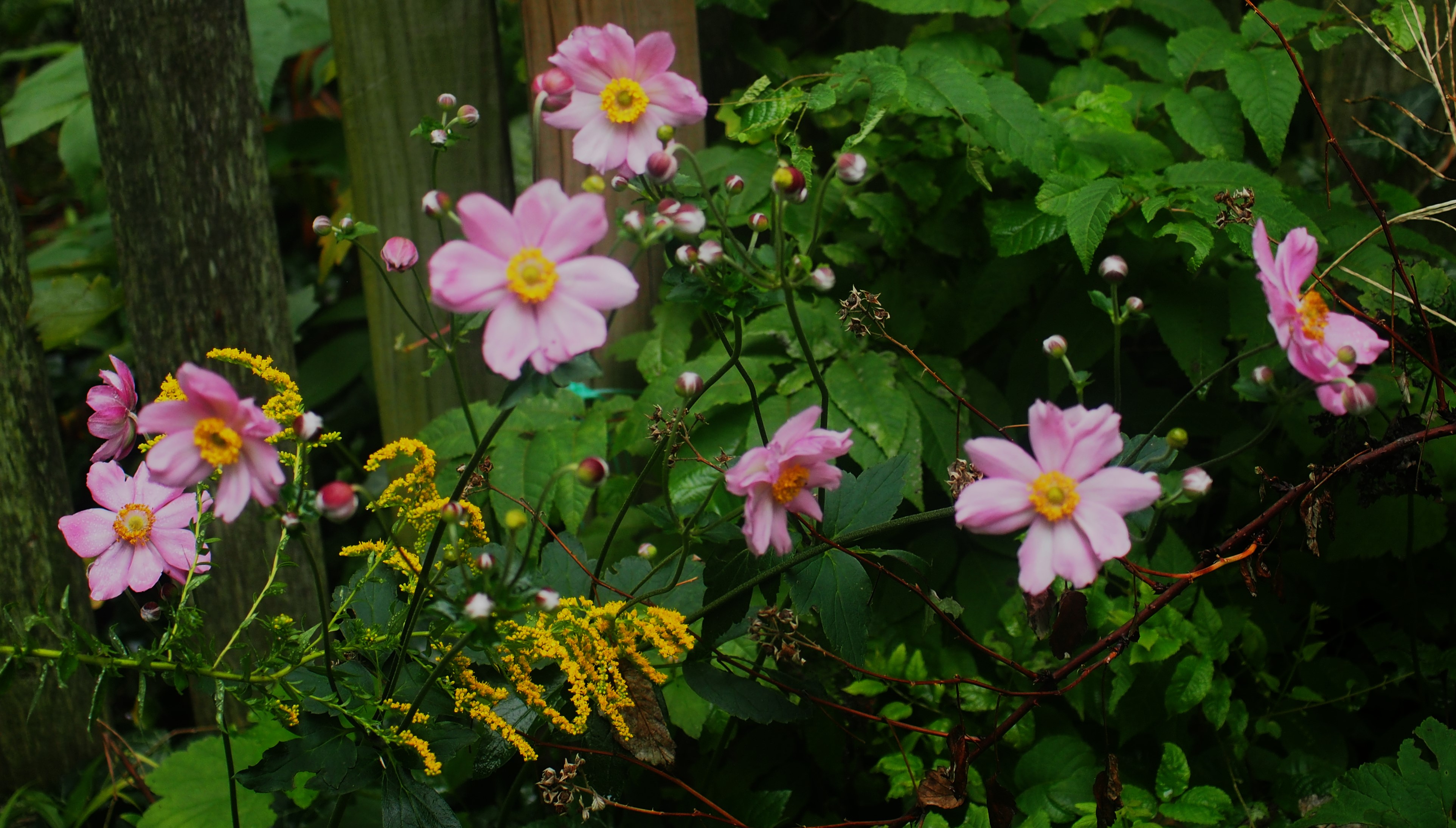
While the whole front yard, stretching the length of the driveway, is a riot of Goldenrod, with Asters of magenta and purple dotting the field of gold.

Remember that there is information in the name of the file for each image. You can see it by mousing over the image - look at the lower left of the screen. Or you can
click on the image to get to the (usually) larger image. Then the info is displayed in the address line above. Sometimes the second click will actually display a different view of the
original image.
No Ants - I don't think my brain registered one this week, but I did see a strange type of Aphid. It's a member of the subfamily of Woolly Aphids and Gall-making Aphids (Eriosomatinae). I've asked the lady who furnished this information where I should be looking for such Galls. Here's the picture of the Aphid itself, which I originally labeled as a Fly! The Goldenrod has been full of the buzz of Bees. Pictures 2 and 3 show one of the most common Bumblebees in Goldenrod season, the Common Southern Bumblebee.
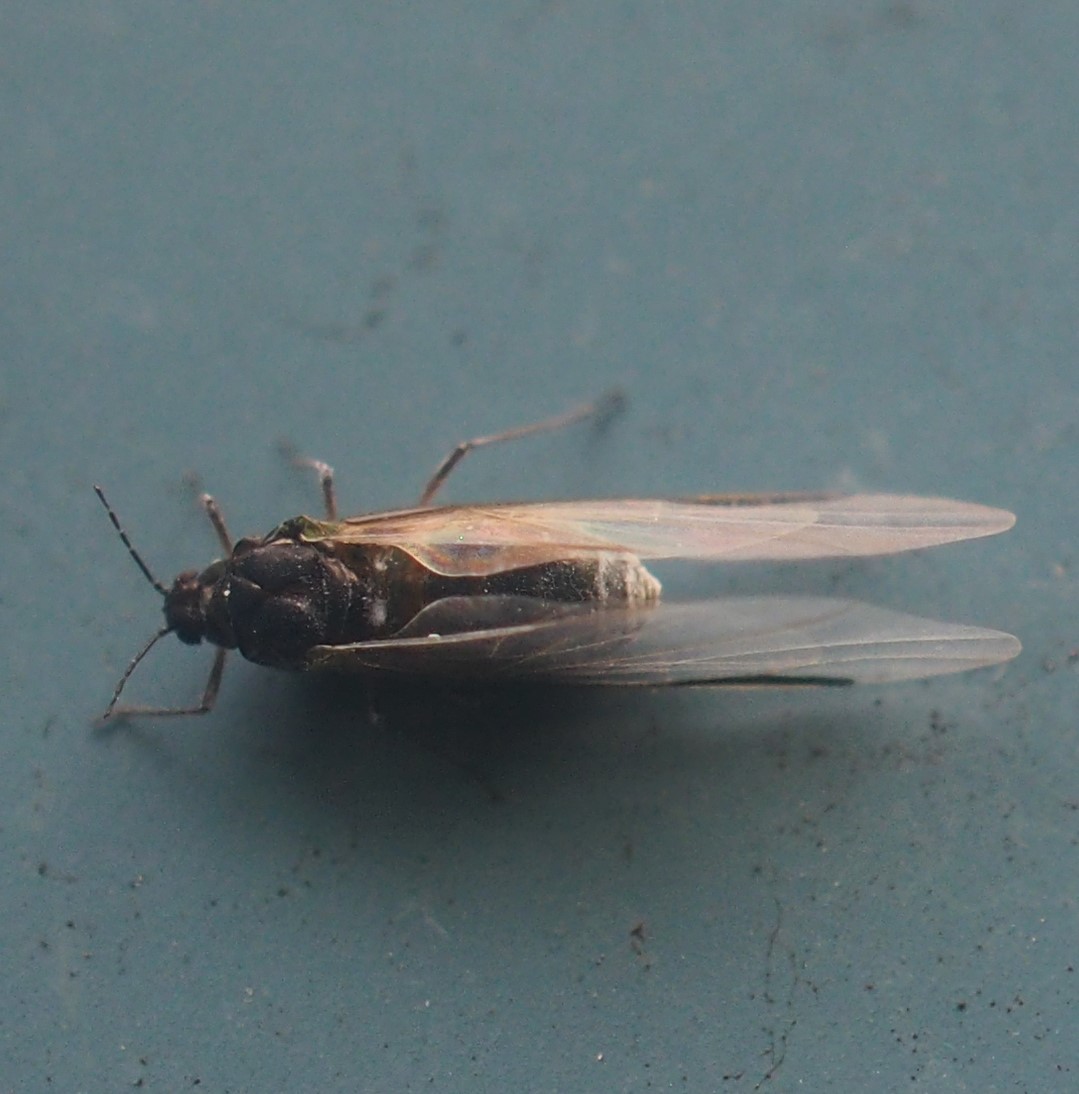
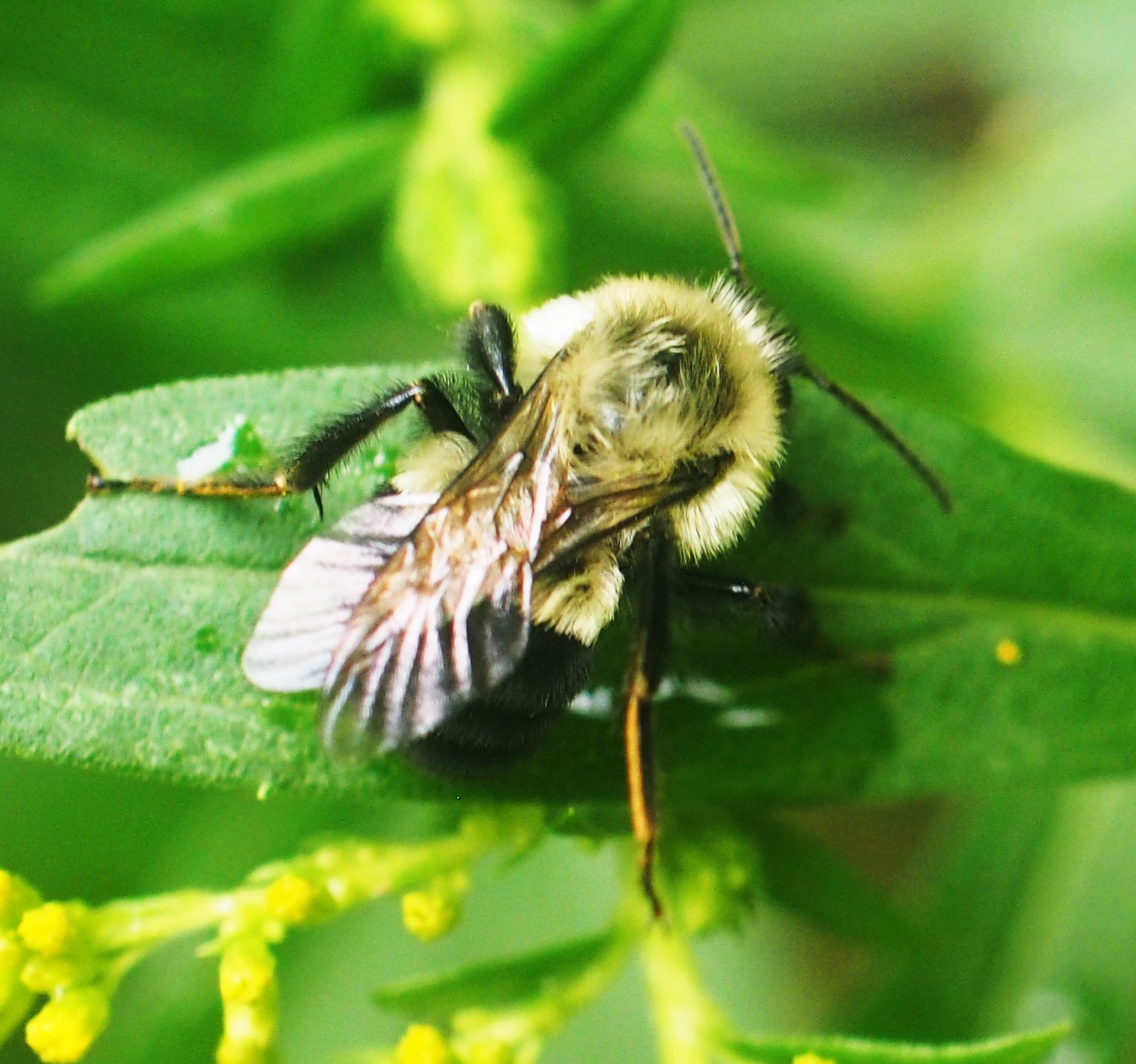
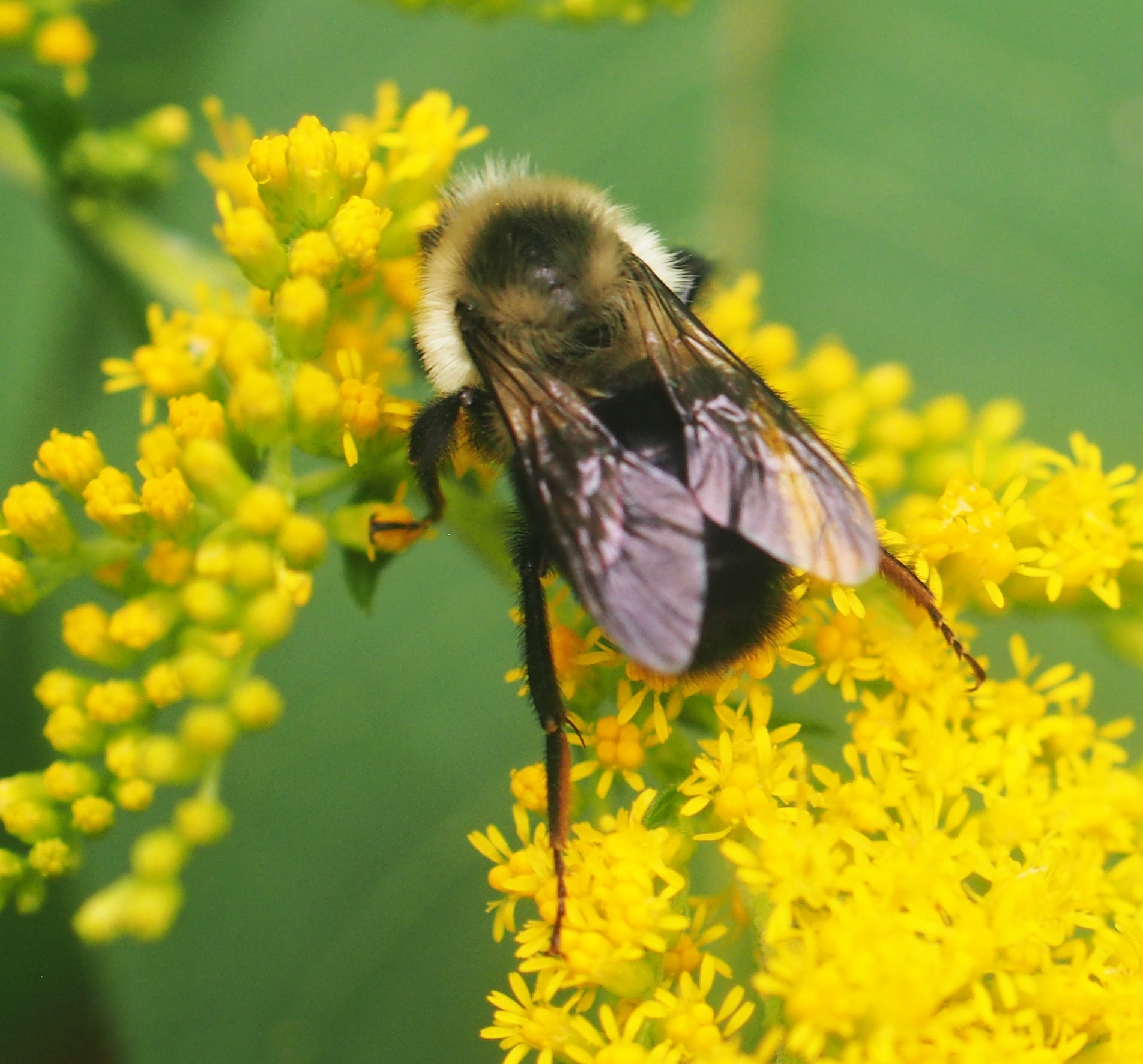
With the coming of the Goldenrod, we see more Bees than we've seen all Summer so far. A lot of them are still Bumblebees.
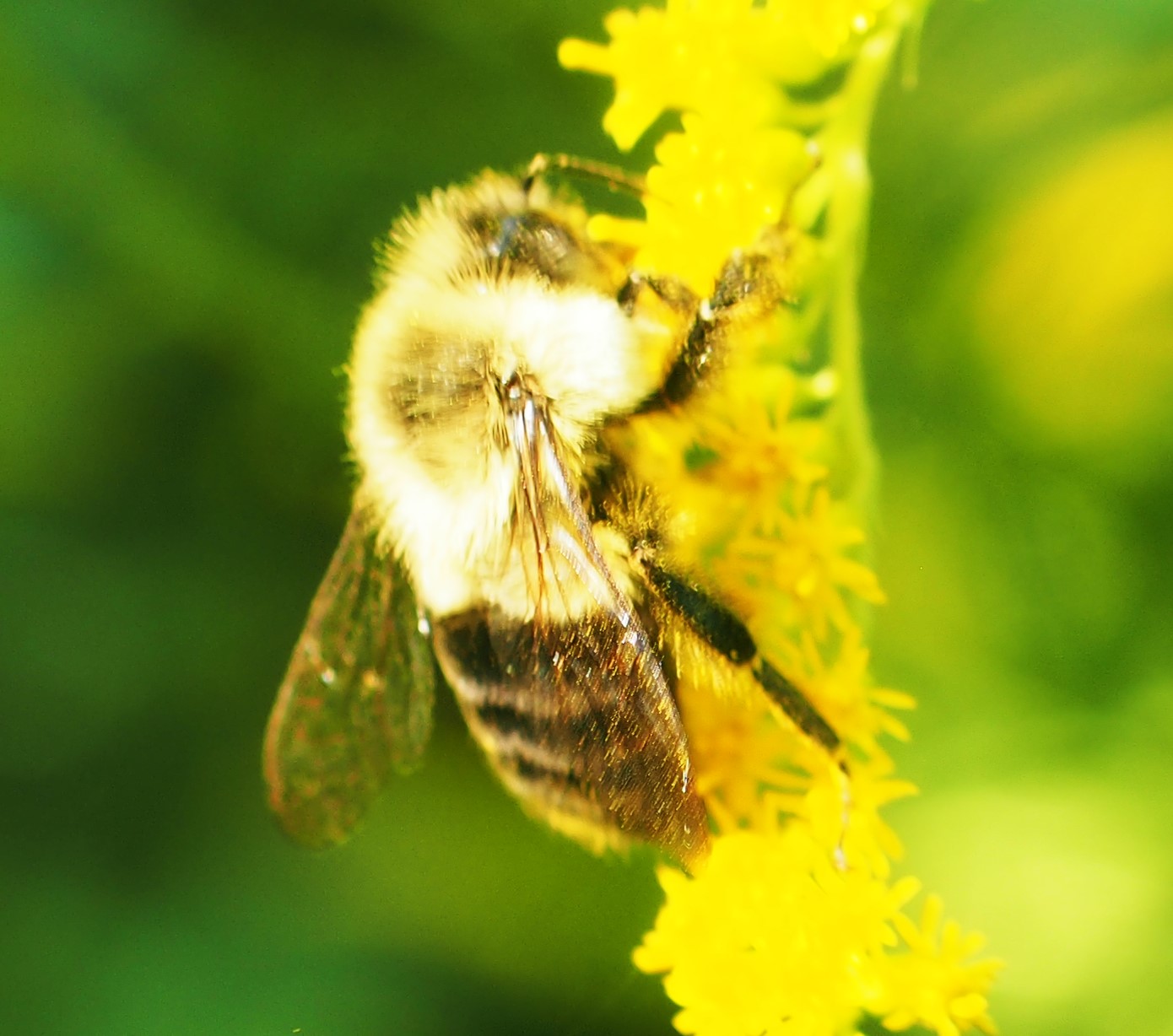
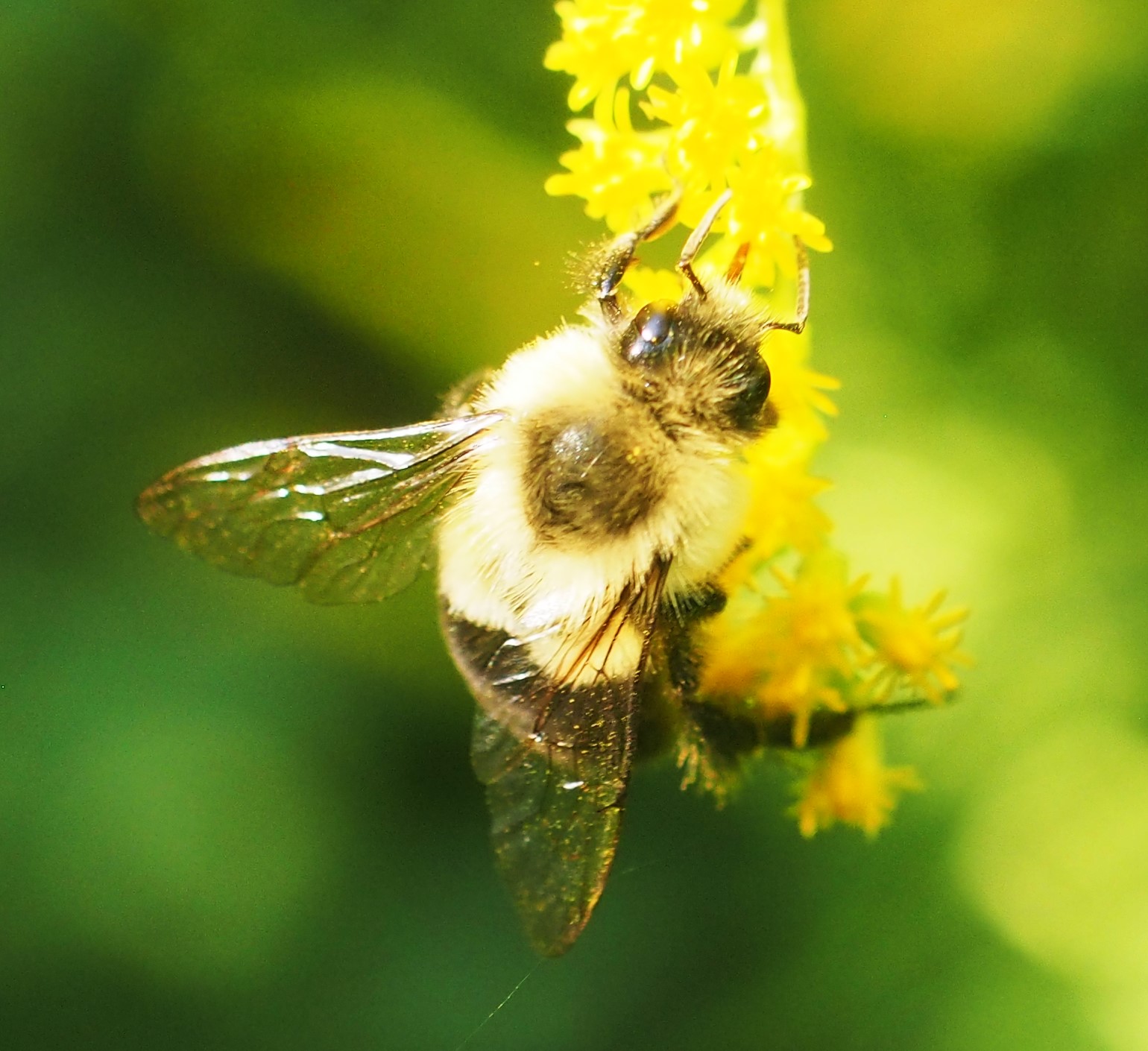
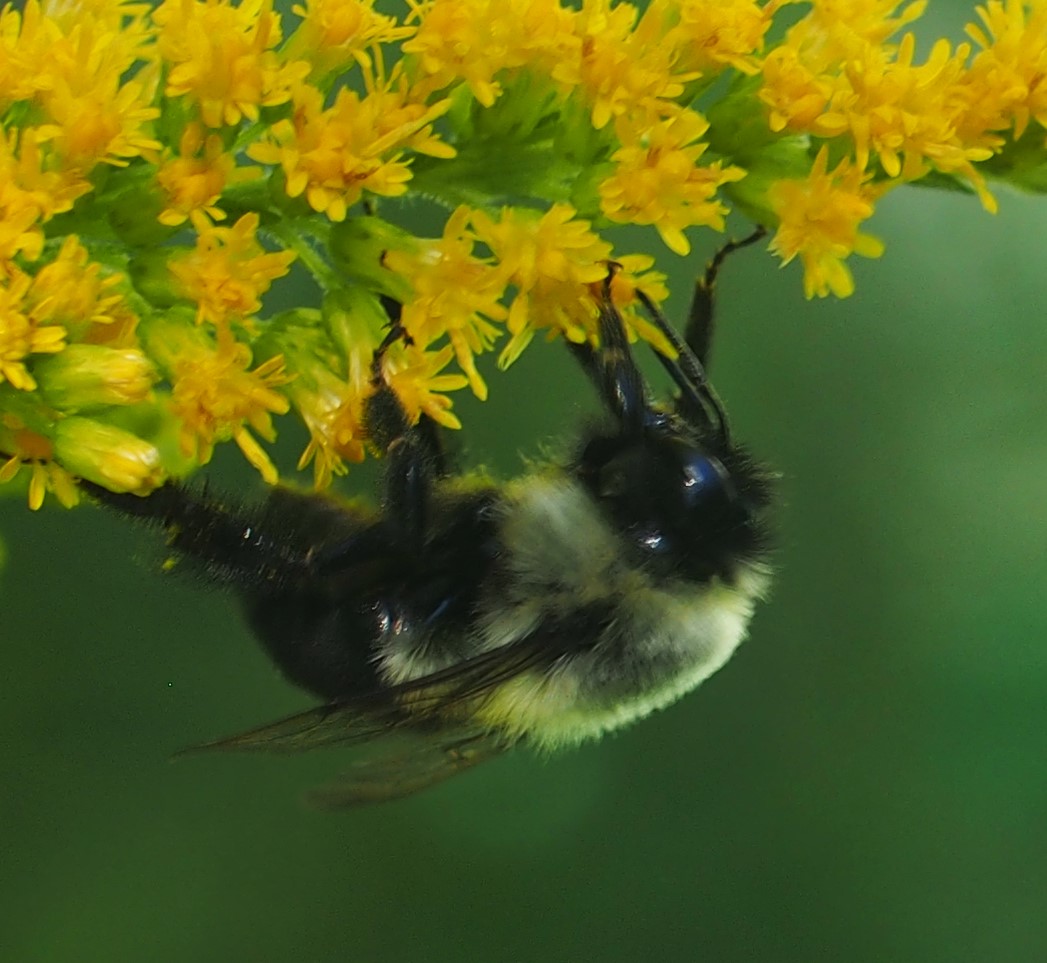
More Bees. I've mentioned before that all the Honey Bees in this region (and in picture number 1) turn out to be the Western Honey Bee. A goodly number of the shiny Bees on the Goldenrod and accompanying Asters are Sweat Bees. The one on the Magenta Aster is a Striped Sweat Bee, the next one in this section is a bright green Sweat Bee, and last is a Common Eastern Bumblebee.

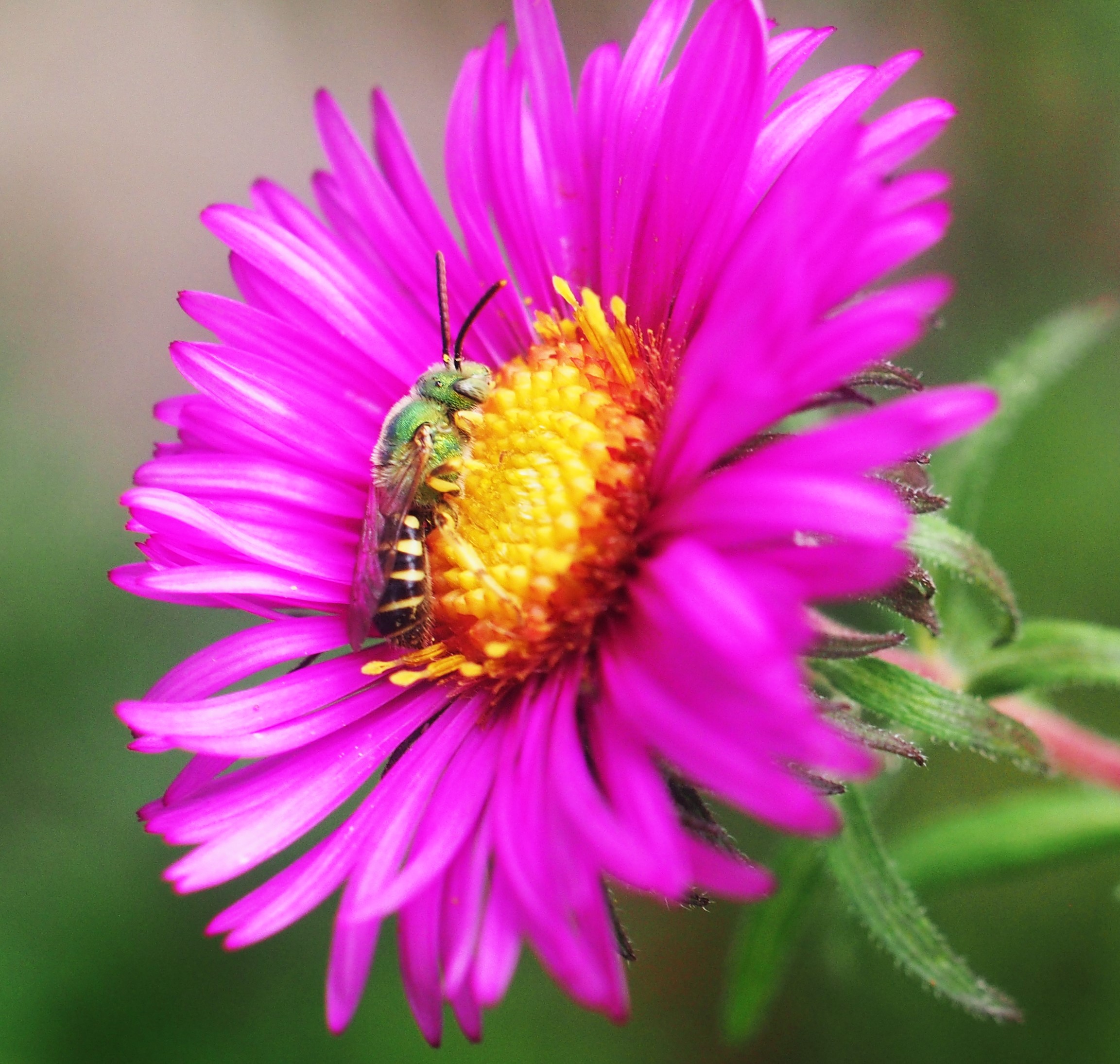
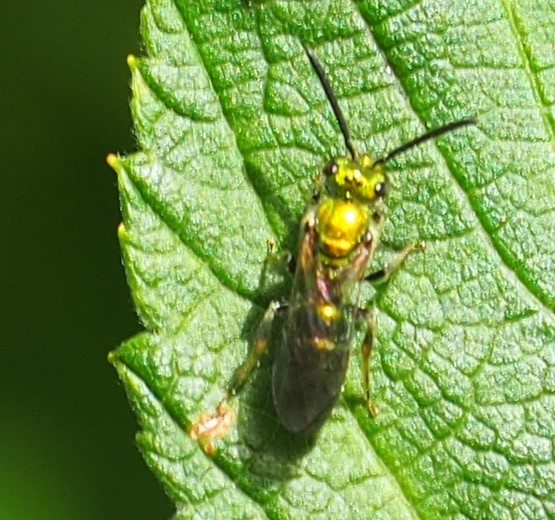
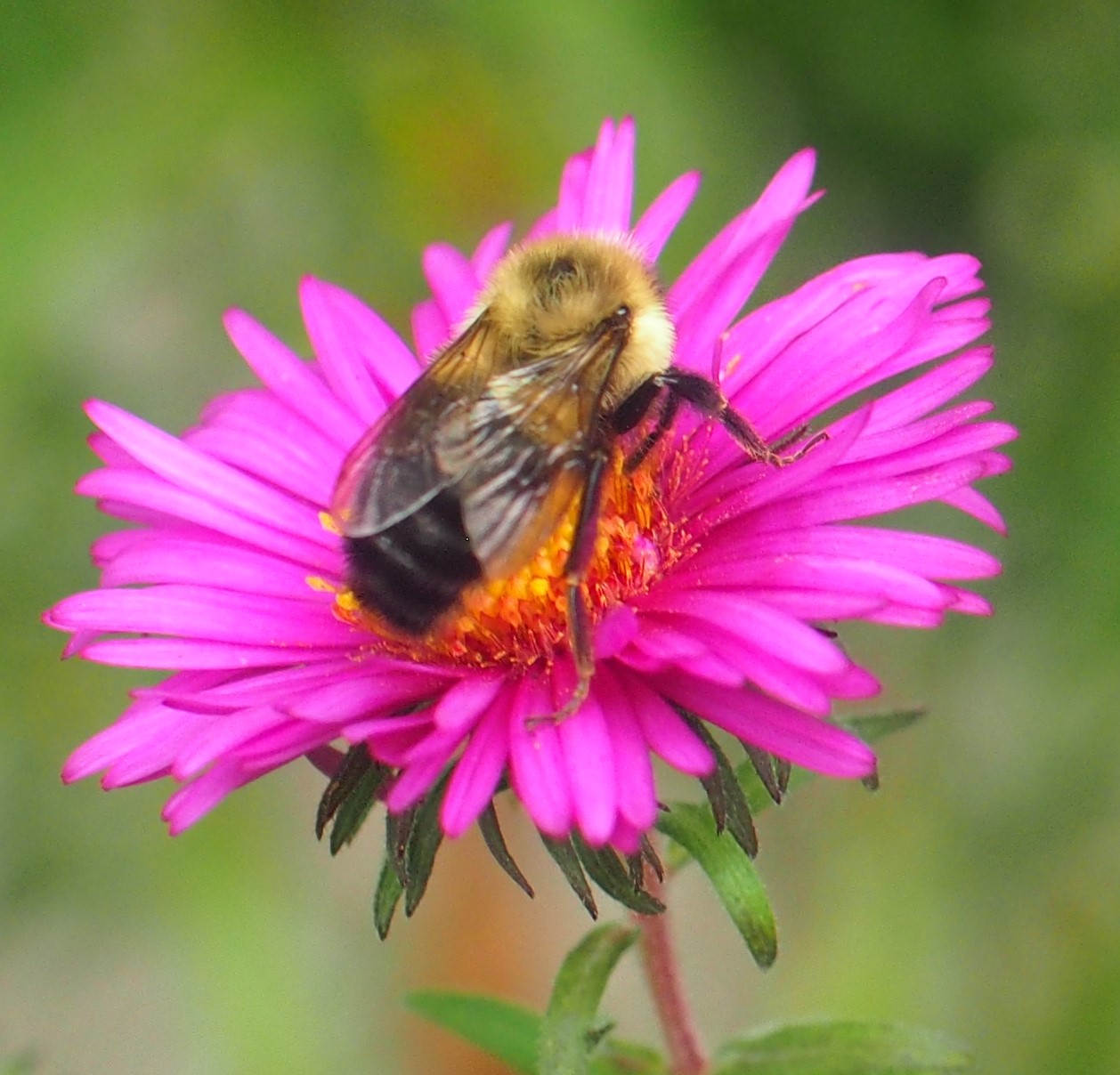
Last week we saw the Goldenrod Soldier Beetle and the Locust Borer Beetle, two of the first Beetles to arrive along with the Goldenrod. But only for a day. The Locust Borer Beetle (picture 1) must have sensed the huge Locust Tree across the street and hied itself thence. There are other plants around here that the Goldenrod Soldier Beetle (picture 2) loves, including several right on the Albion College campus. Picture 3 is an unorthodox view of the Redbud Seed Weevil or Redbud Bruchid. Actually it is a shot of the backside of the Beetle.
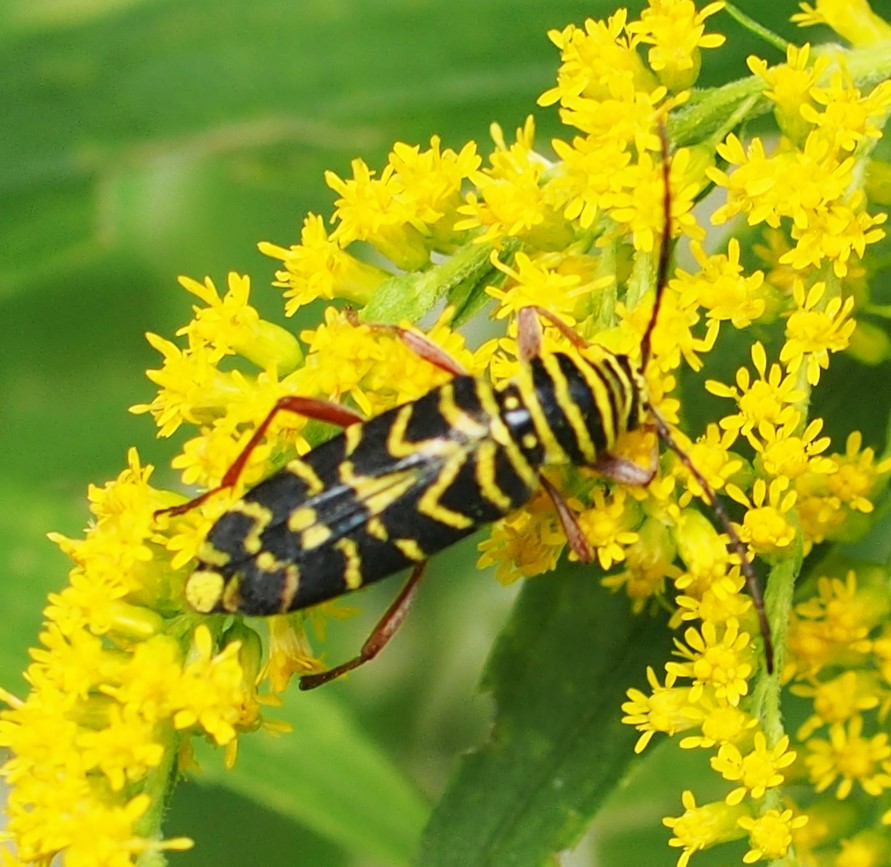
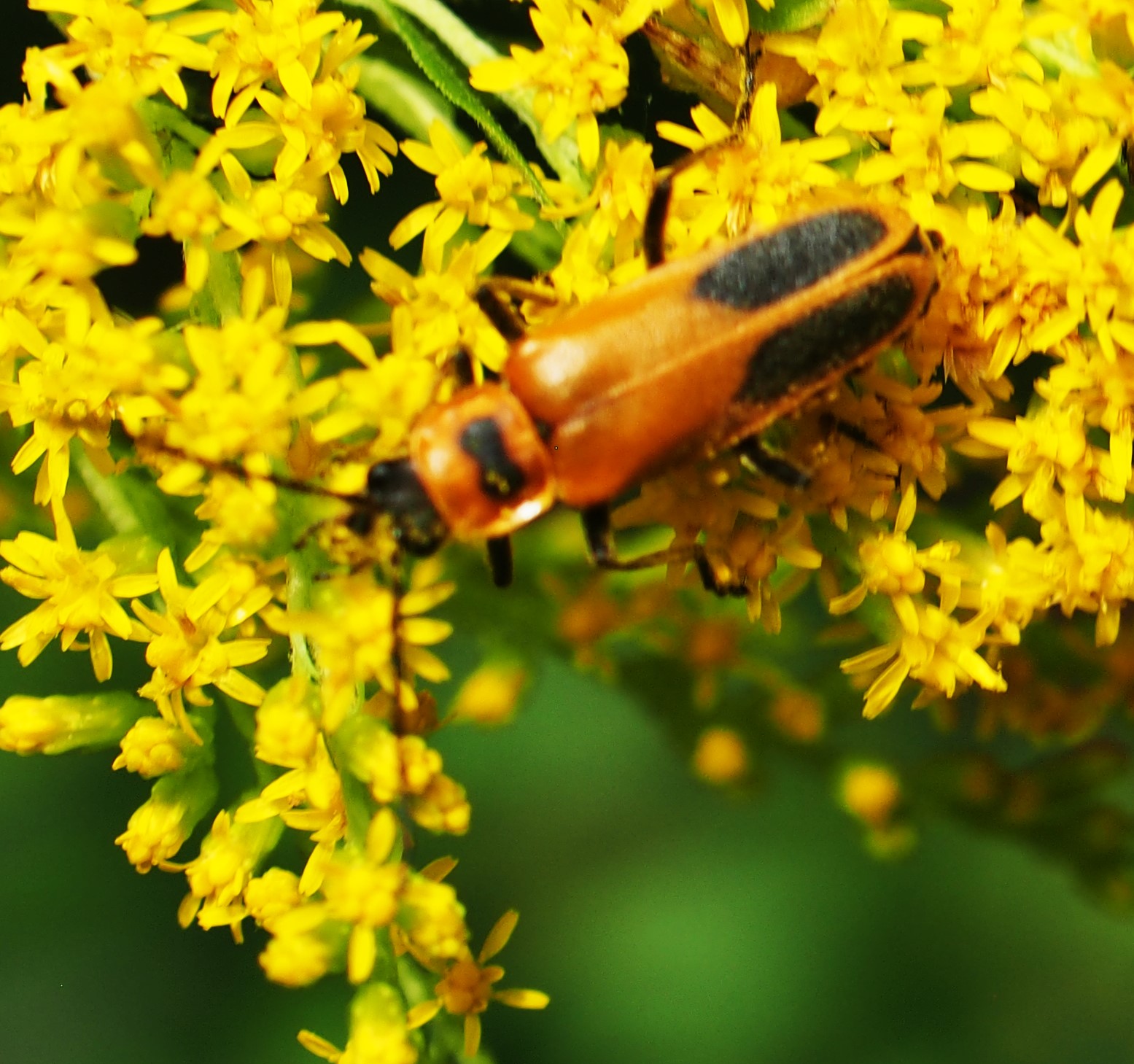

When I was first introduced to the Ambush Bugs, of which we seem to have only the one species, the Pennsylvania Ambush Bug, it seemed a strange creature that was particularly hard to photograph. That first year, I only managed to see one or two and sometimes a mating pair. But this year, there are so many of them on the Goldenrod (y'know, I've never seen one on anything BUT the Goldenrod) that I was privileged to see them from many angles. First, a dorsal view. Then a side view. Note the huge golden claws.

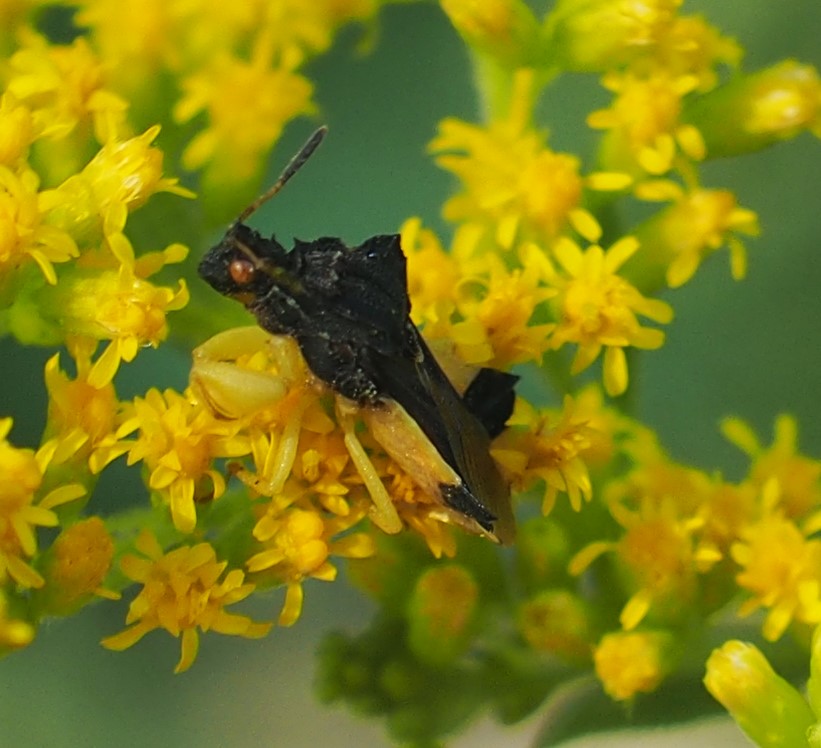
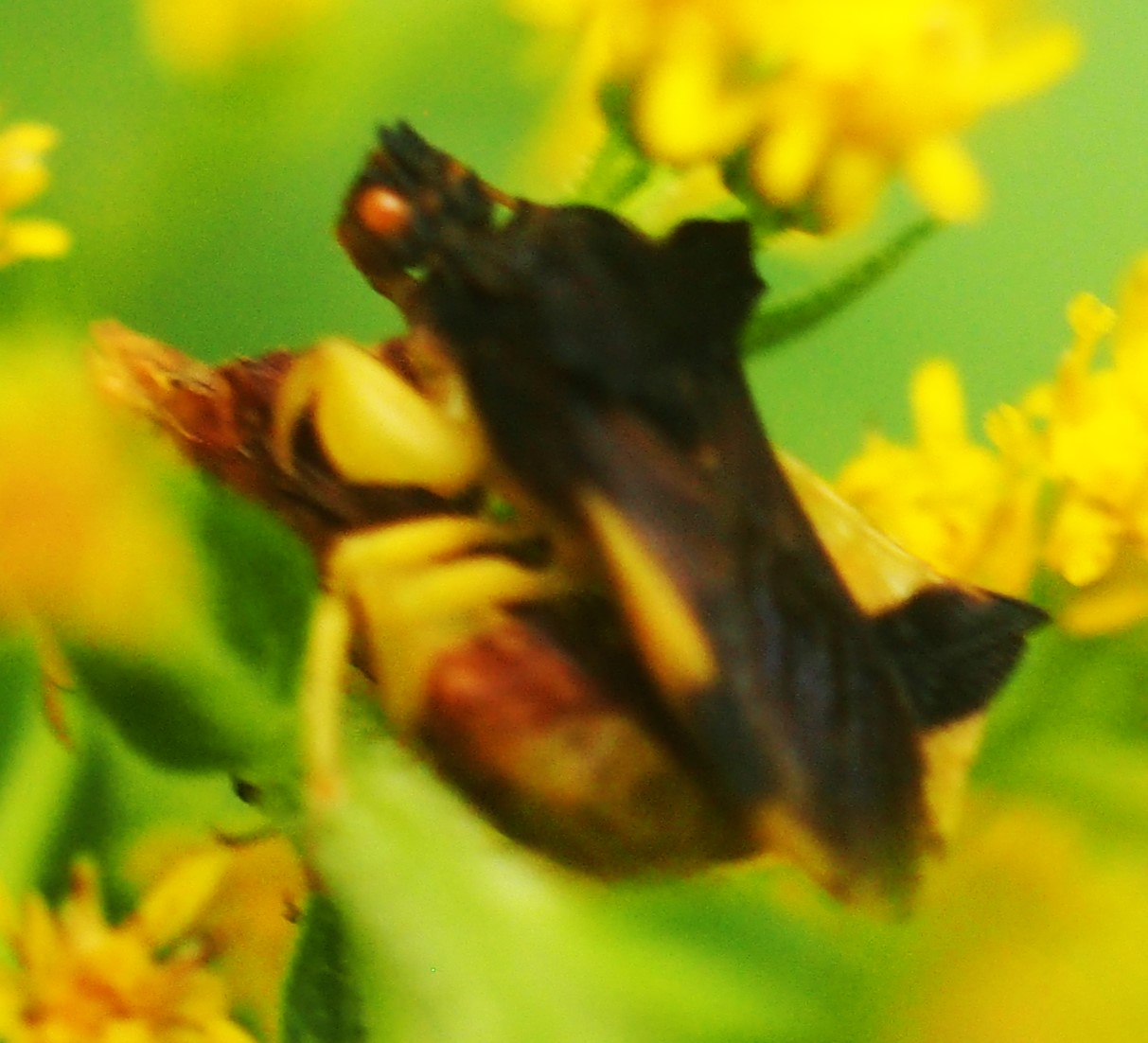
One more aspect of the life of an Ambush Bug: the first year I met them, I only saw one or two mating pairs. But this year almost every clump of goldenrod seems to hold a pair. Note: The male is always on top. Click or double-click on each picture to see the details, especially of the faces of these creatures!
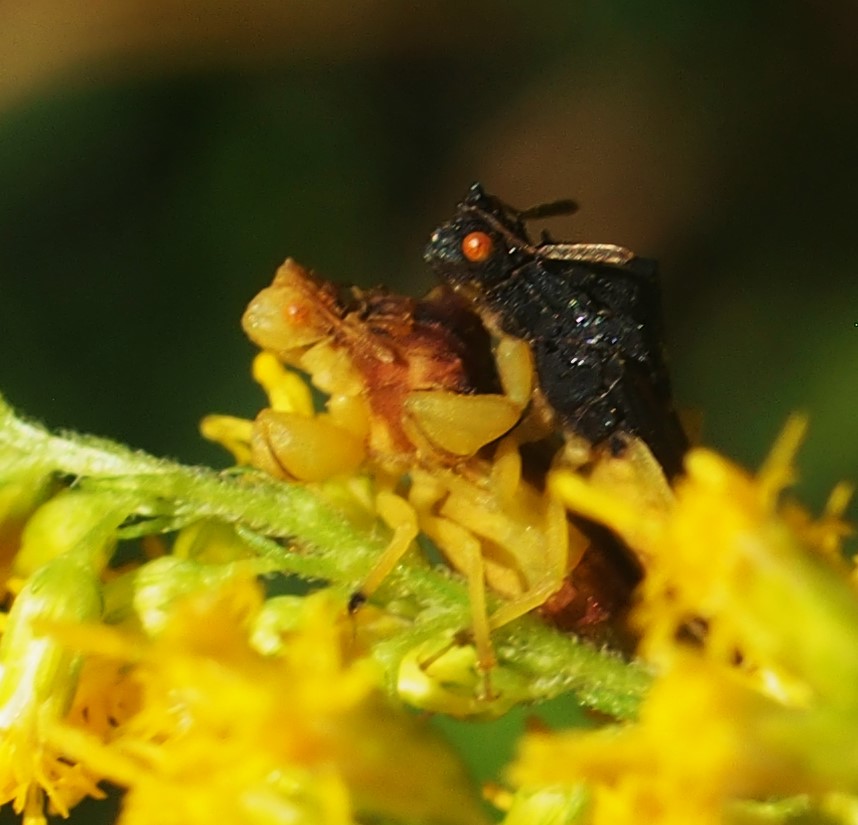
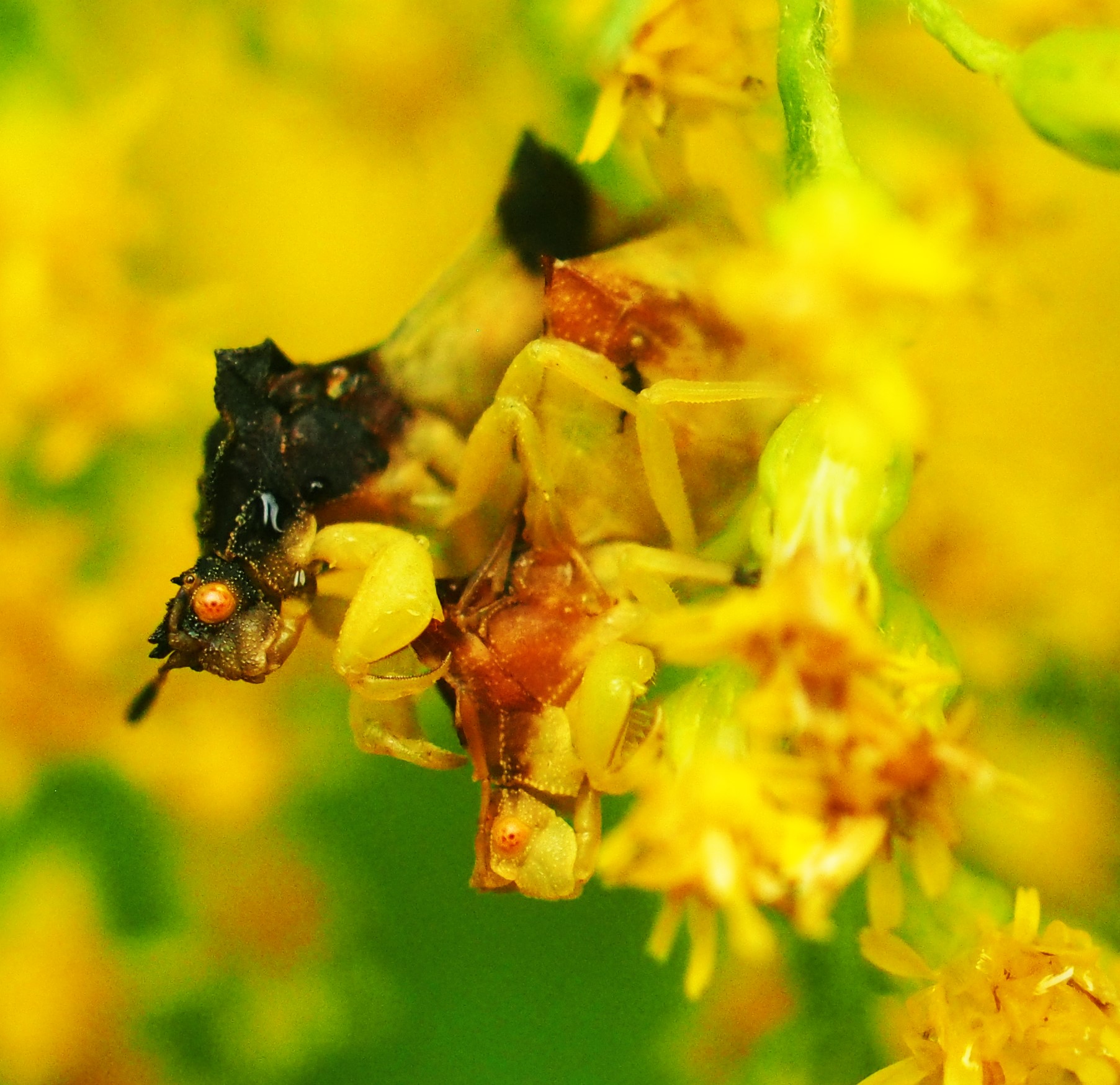
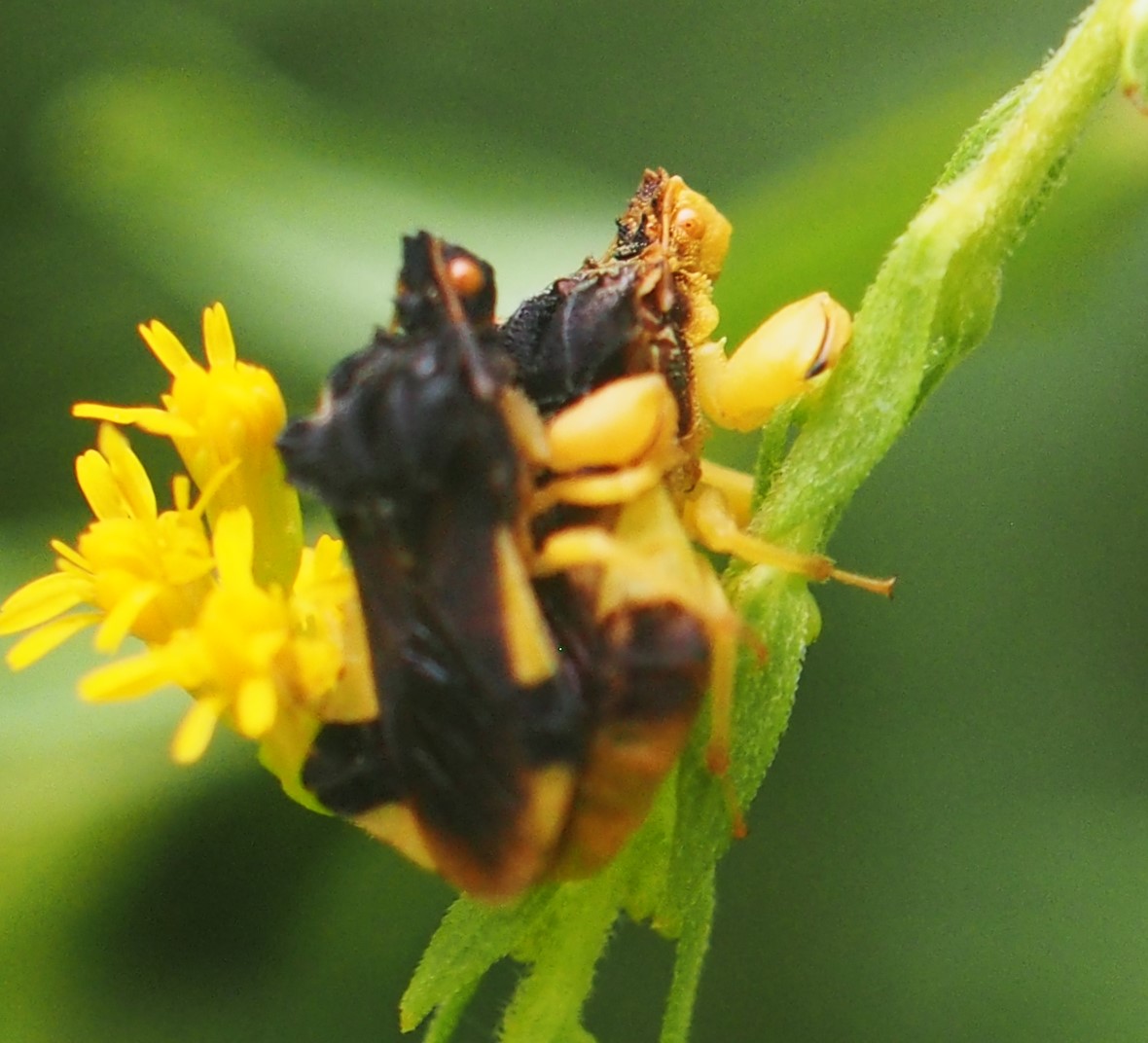
The Zelus luridus (Pale-green Assassin Bug) is everywhere else, so why not on the Goldenrod?
In picture 3, the Bug has its proboscis into its prey.
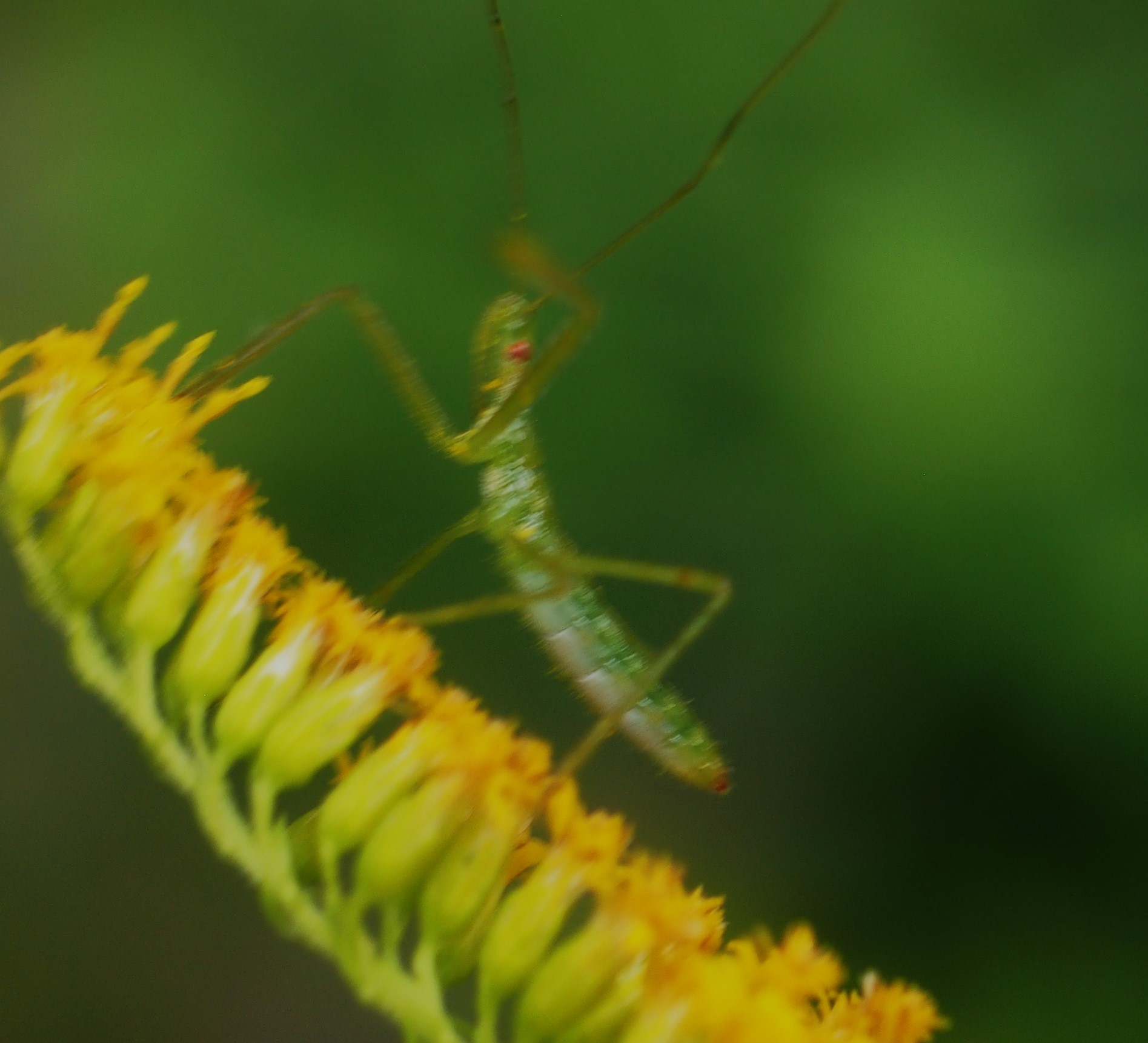
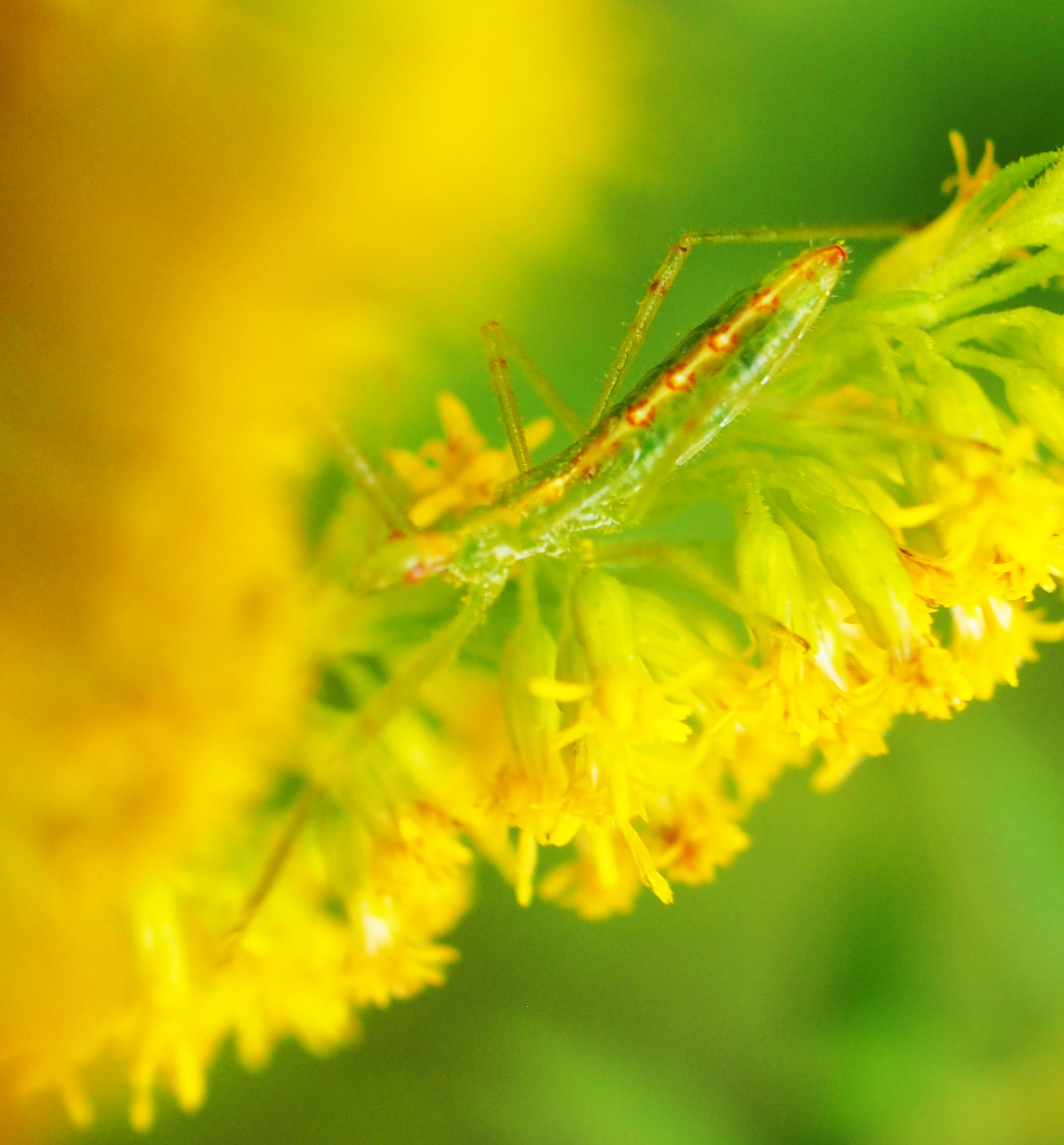
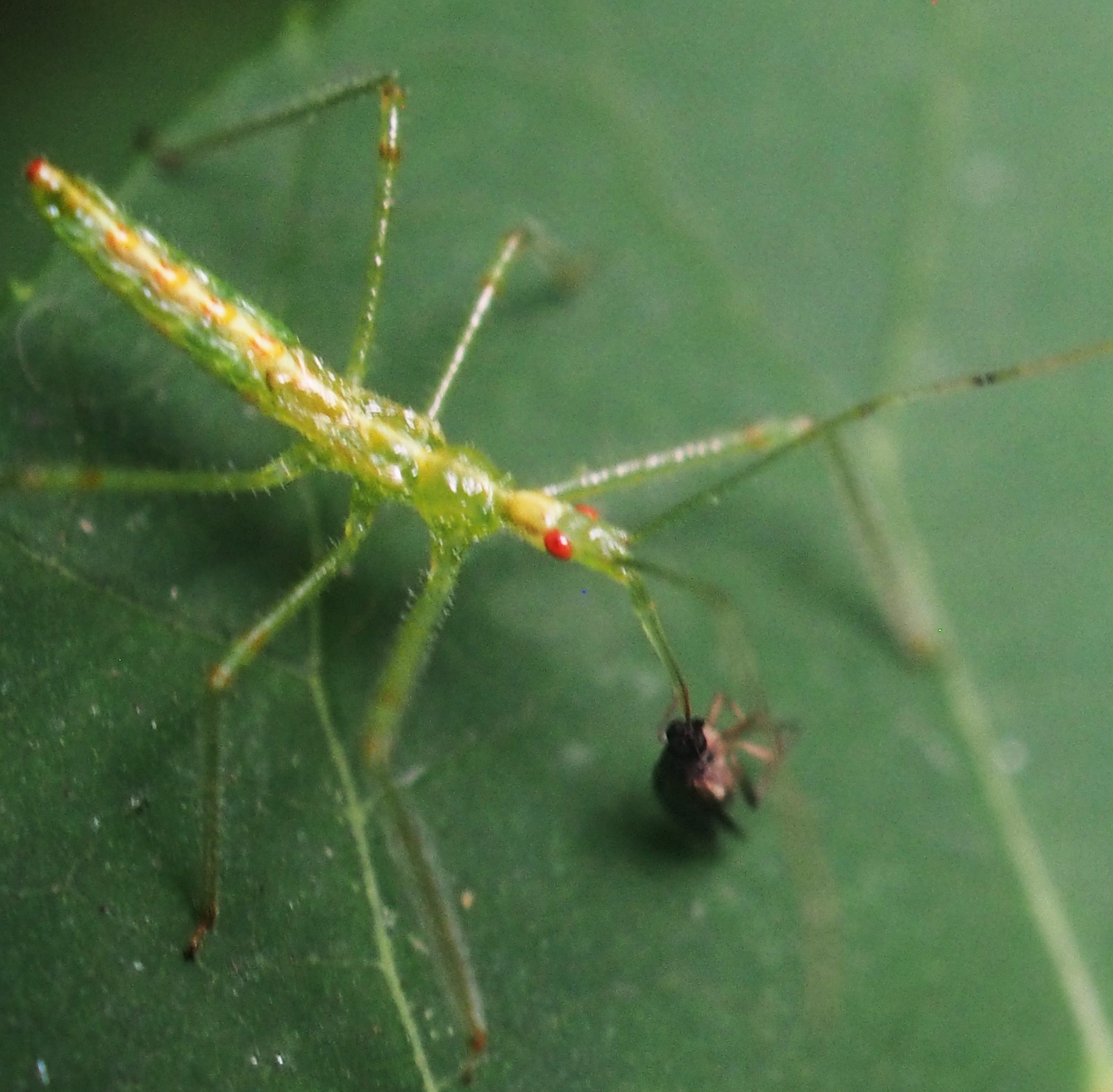
Let's check out the Barklice, even though the North Wall has NO Goldenrod. Adult Graphopsocus were hard to find this week, but here is a nymph. And a small group of eggs - are they Barklice? If so, they might be Graphopsocus cruciatus eggs.
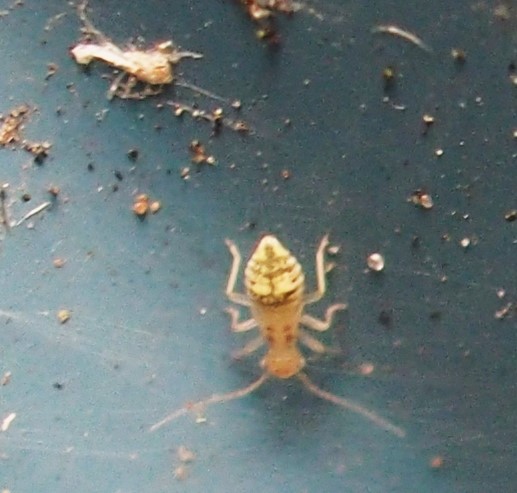

Here is one Polypsocus corruptus. Next is a small group of Ectopsocus meridionalis. And that is about it for recognizable Barklice.

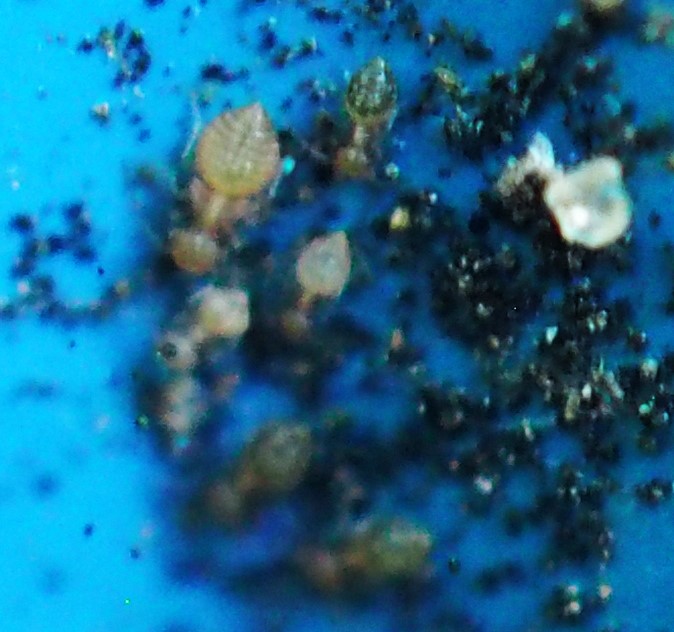
Here are a few shots of a Barklouse, but which one?
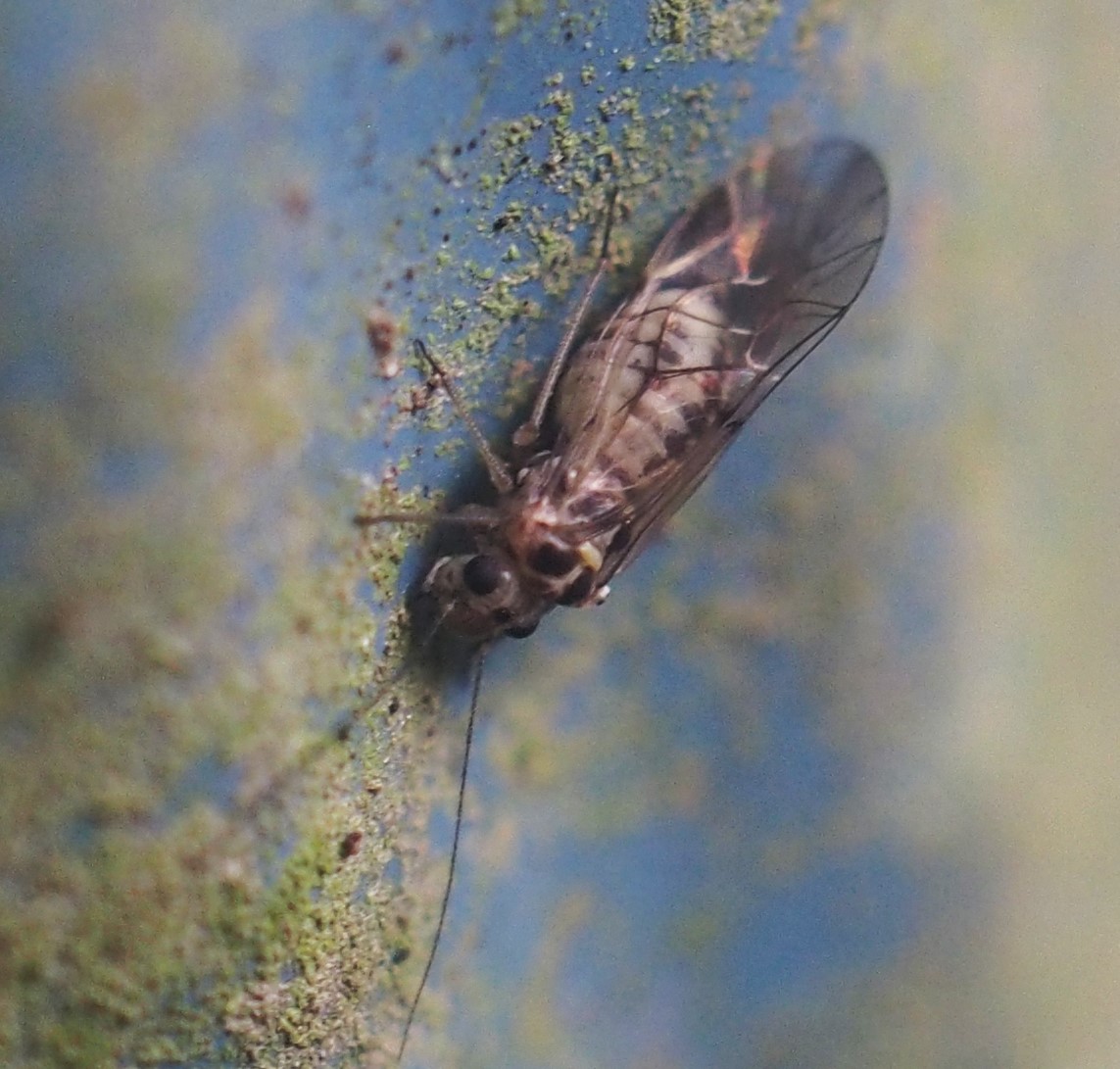
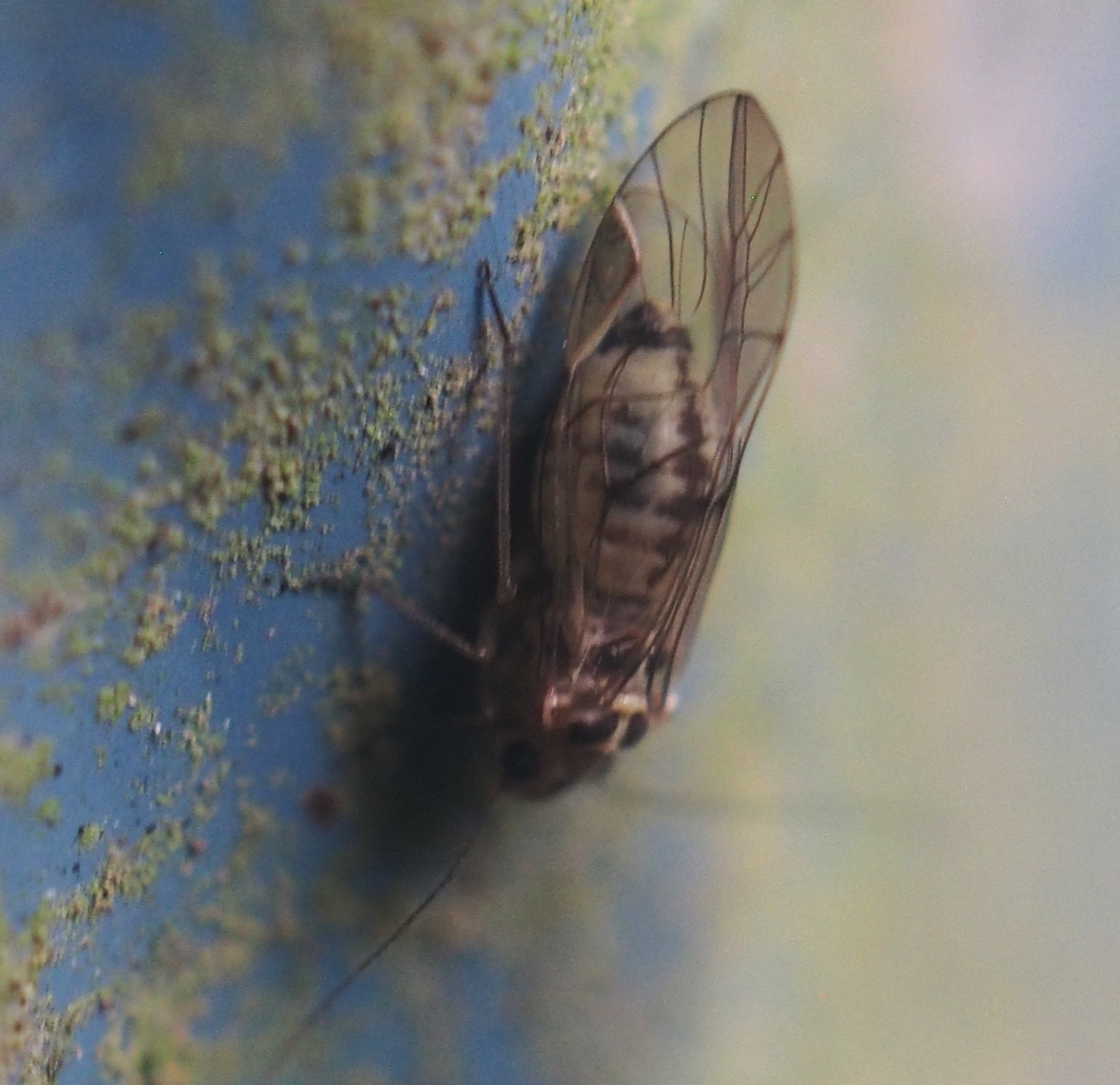

And here are a couple of shots of something else I don't recognize. Diane Young, where are you? Are these pictures of two critters mating? The one on top seems to have fancy eyebrows or a mask! I have got to get a spray bottle to wet down the North Wall since the tree buildup over that wall have kept it from getting wet enough to support the lichen base.
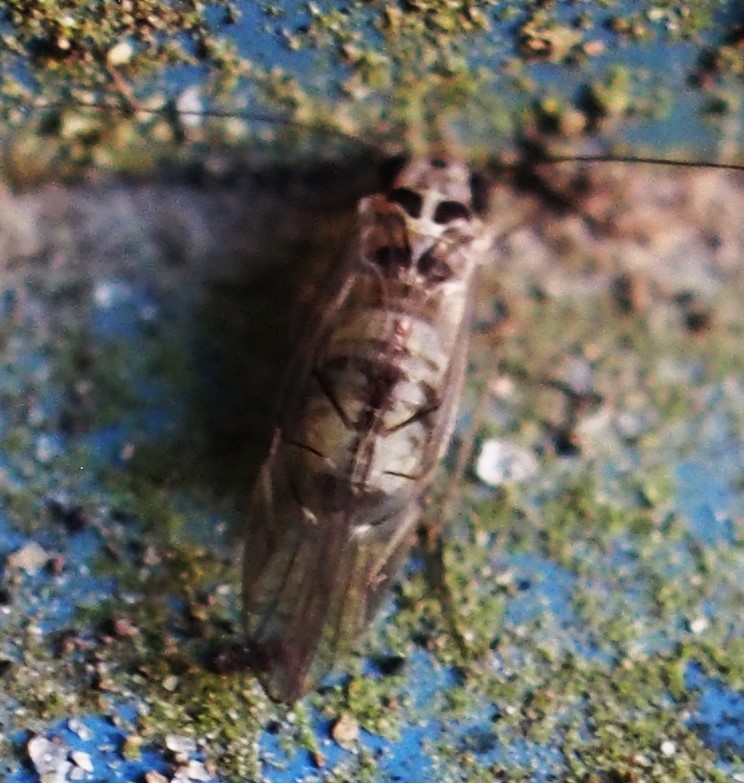
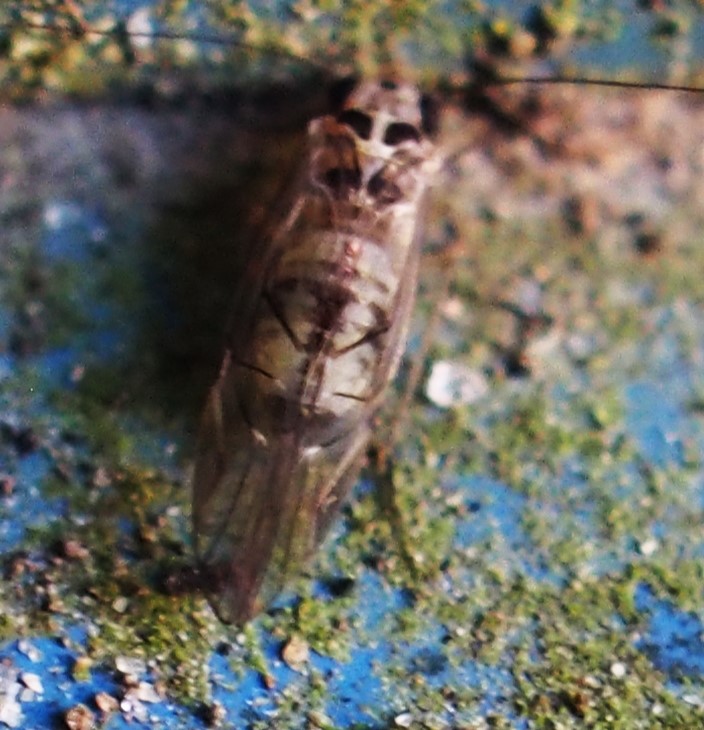
If you wondered why the sudden leap from the Goldenrod clan, well, it was because of the sudden death of the Bug section because - I have got to admit - I didn't see a single Leafhopper this week. With the encroaching cold, we may have seen about the last of ours for the season. But here is something I don't see every day - a Goldenrod-hopping Earwig. It is probably the European Earwig. Next is that Fly that might be thought of as the Ur-Fly, the one that all the others are cloned from. In picture 3, we can see fairly clearly what it has caught.
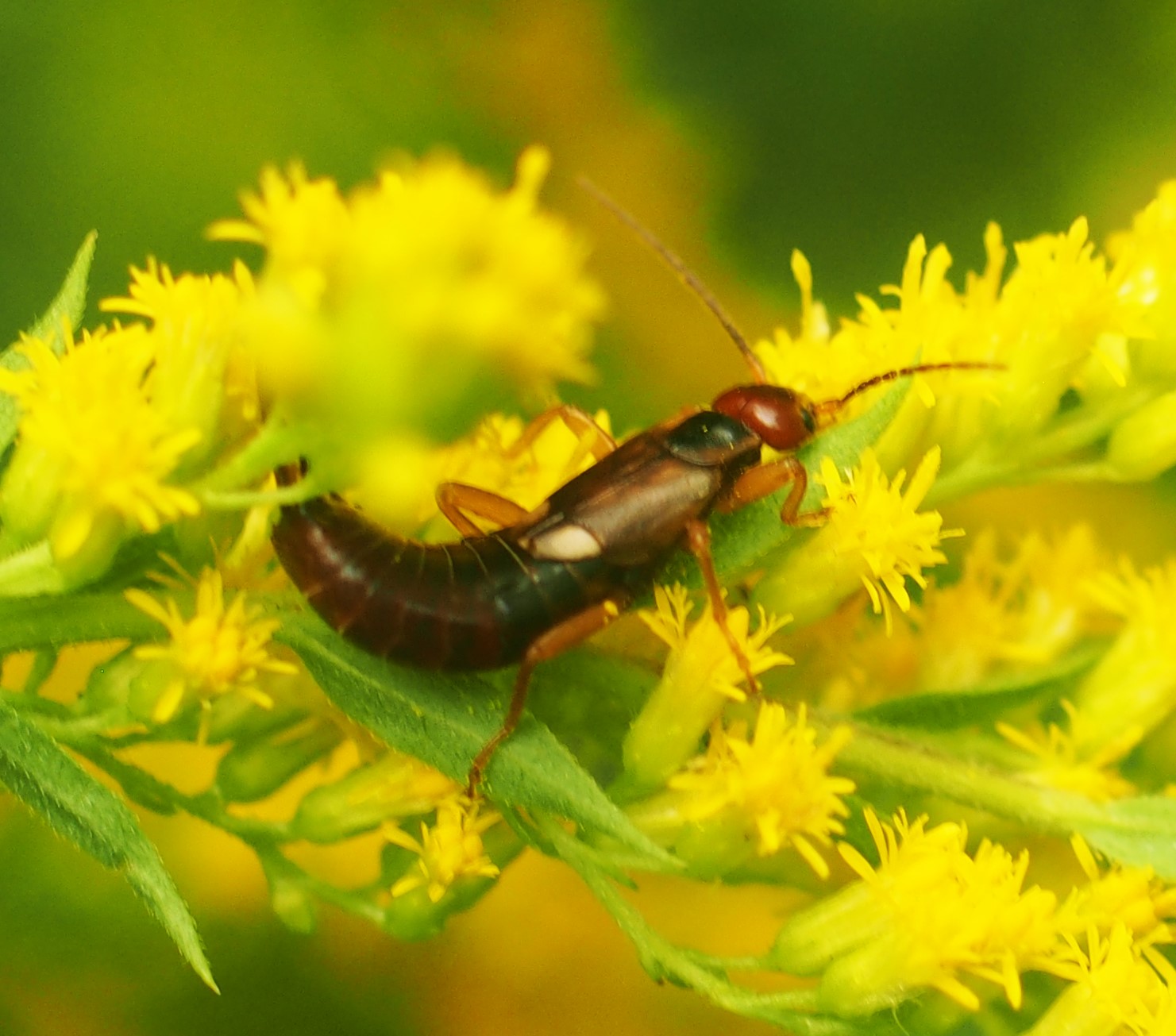
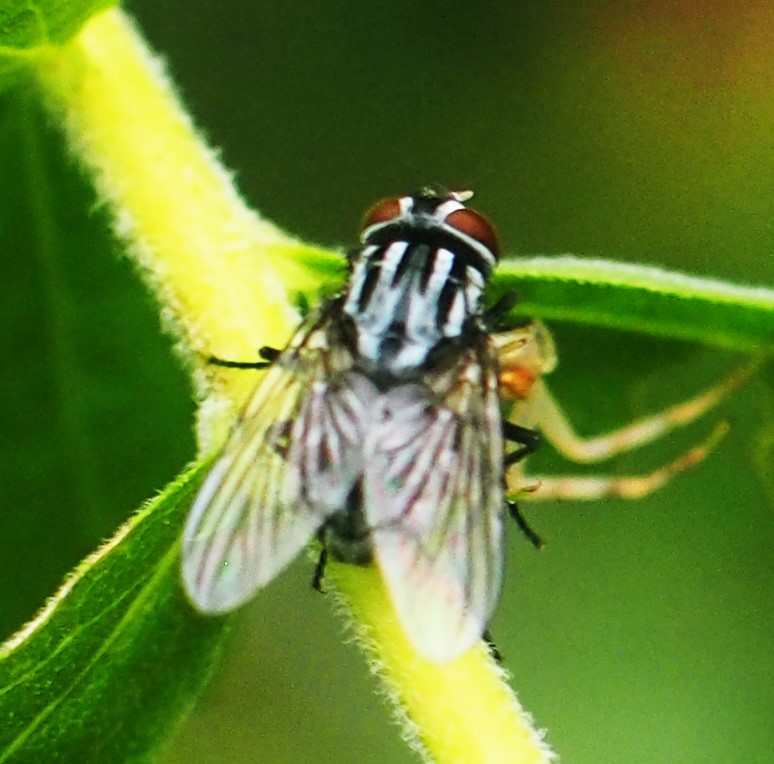
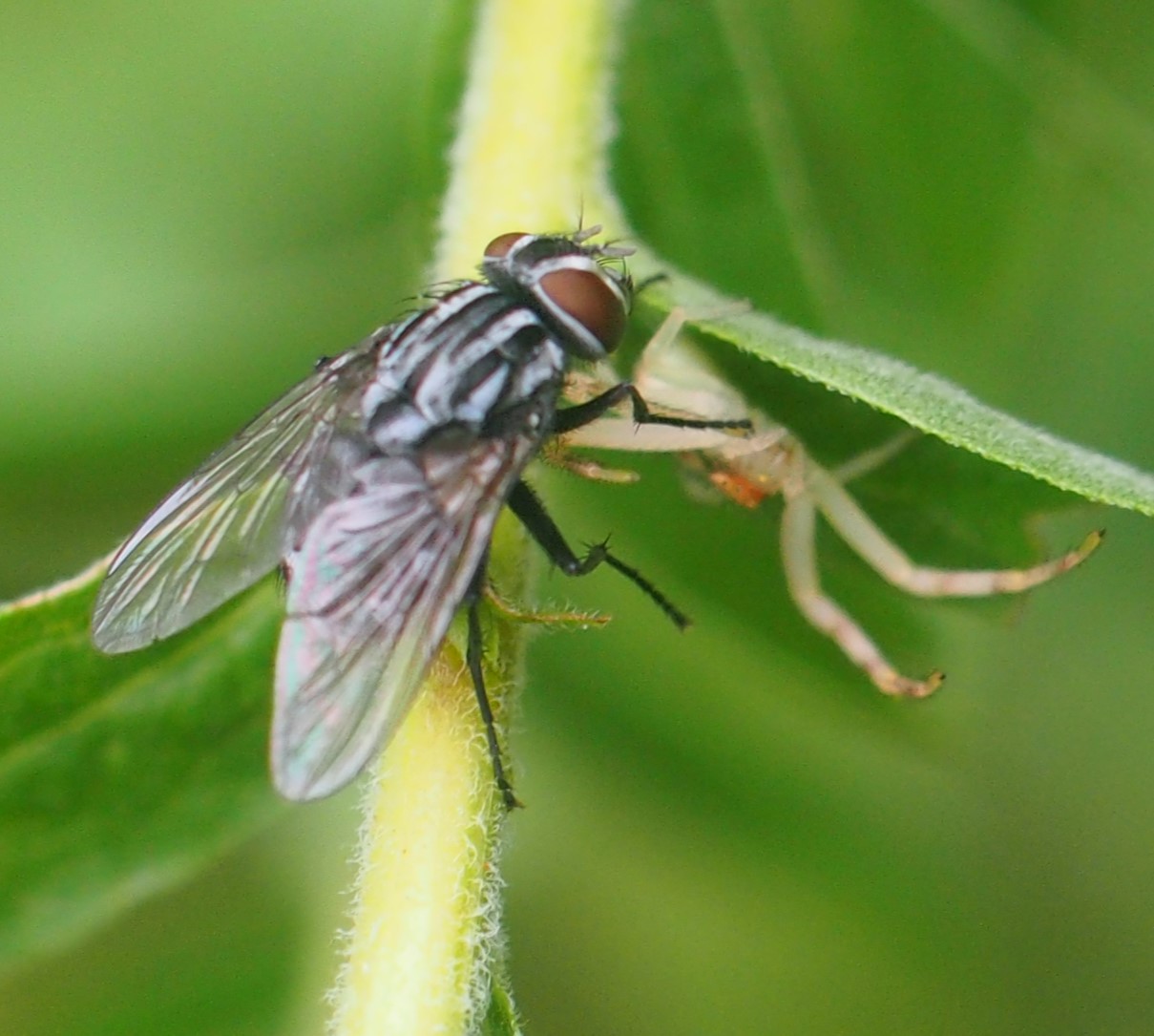
So back into the Goldenrod to see what kinds of Flies they might have visiting. First a beautiful Greenbottle. Then a blackish Fly with beautiful red eyes, which @spencerpote says is a Calyptrate Fly.
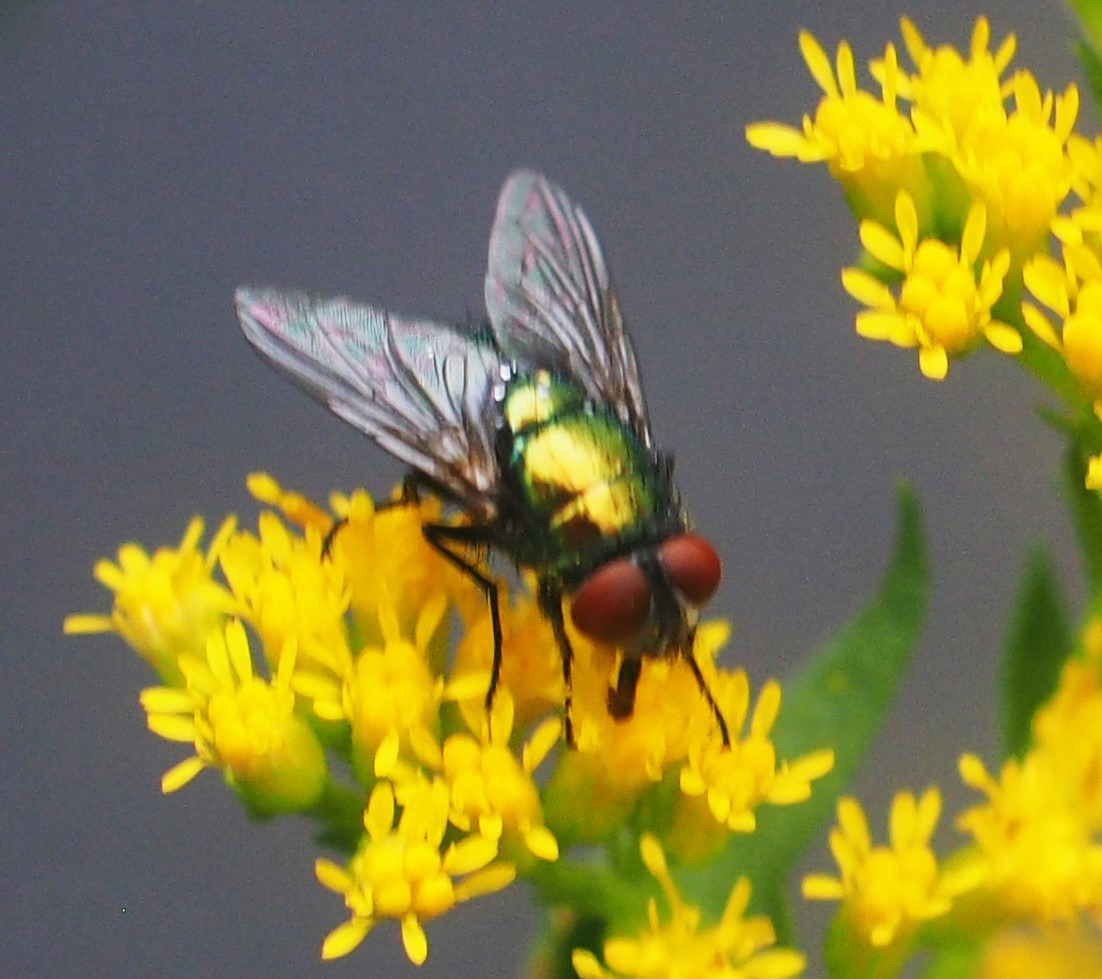
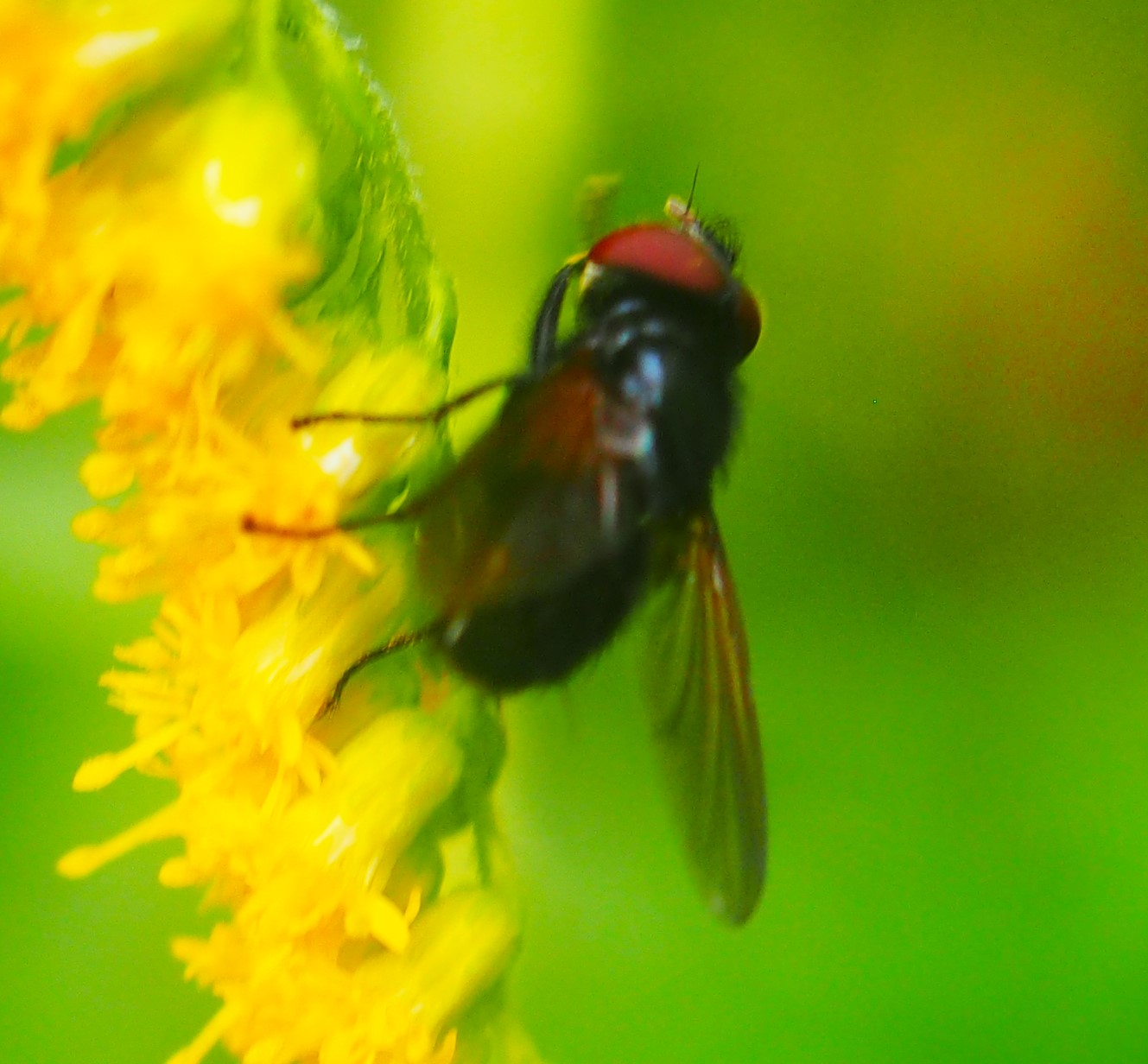
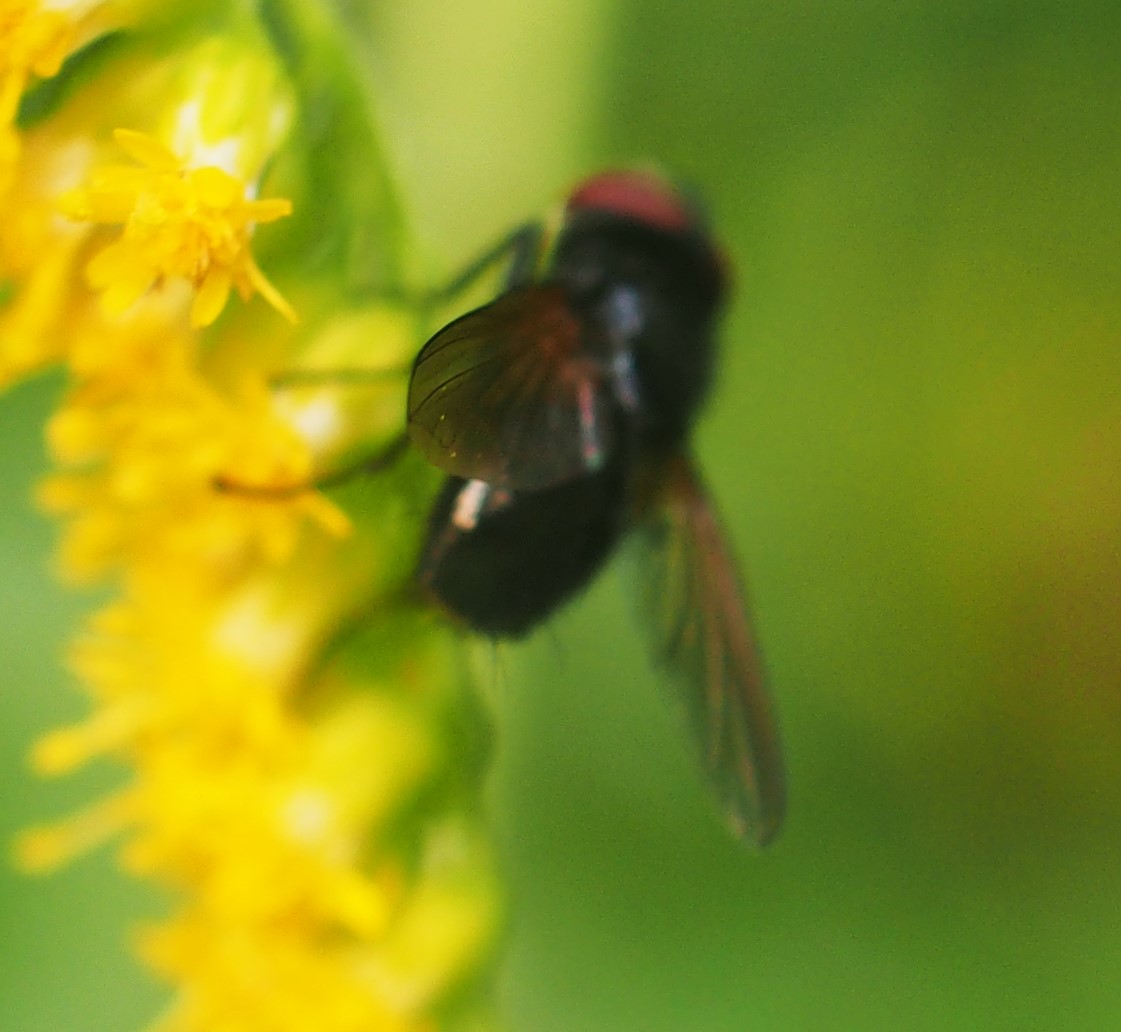

This is a Fly that is being thought of as a species under genus Minettia. Second and third are a new one on me - I've been thinking of it as Fly Lots o' Spots.
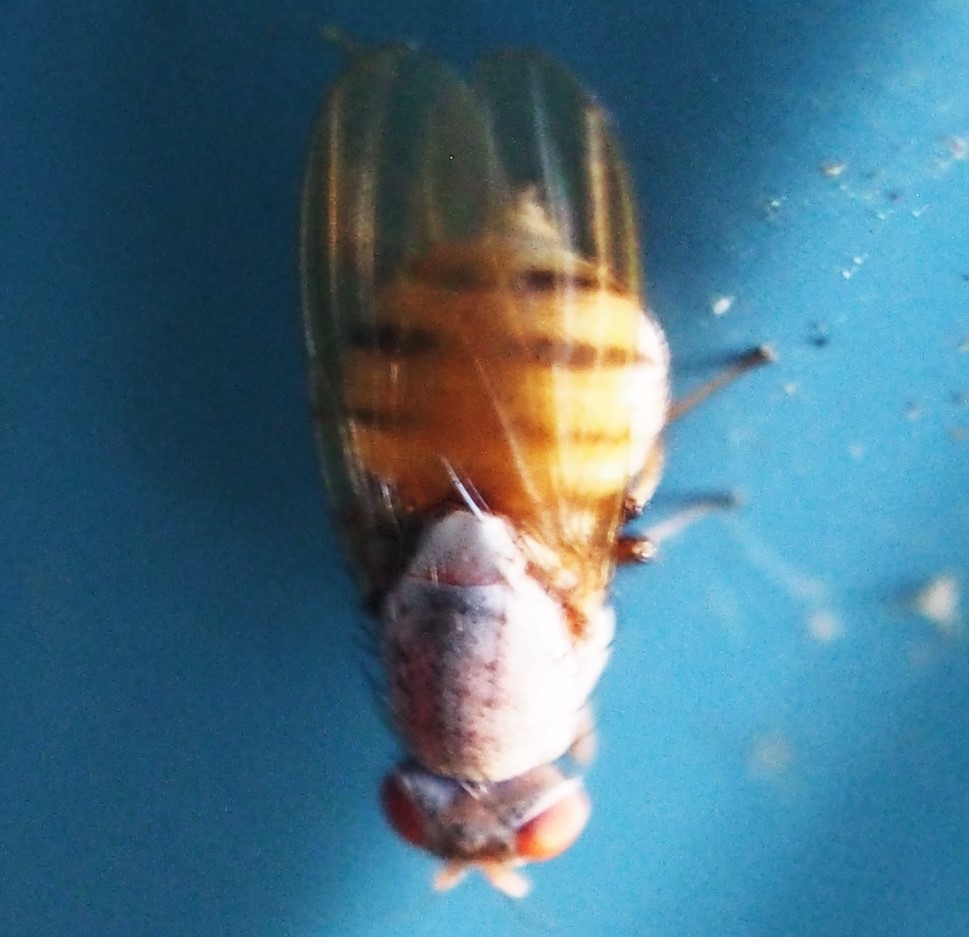

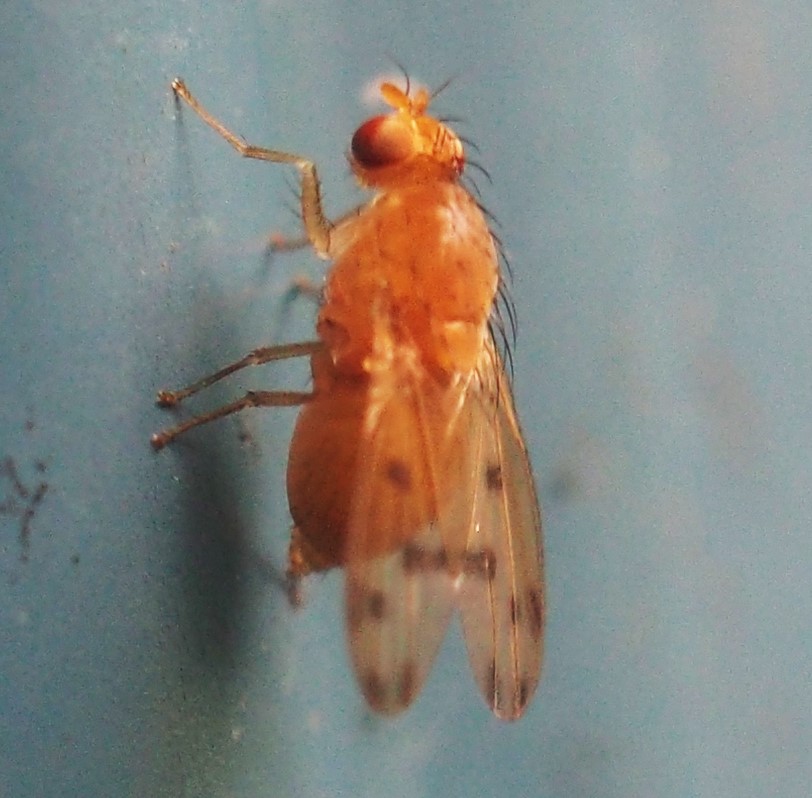
The Goldenrod seems to be attracting a number of kinds of Hover Flies. Here is Toxomerus geminatus in all its WIP glory. I did not manipulate the wing colors at all!

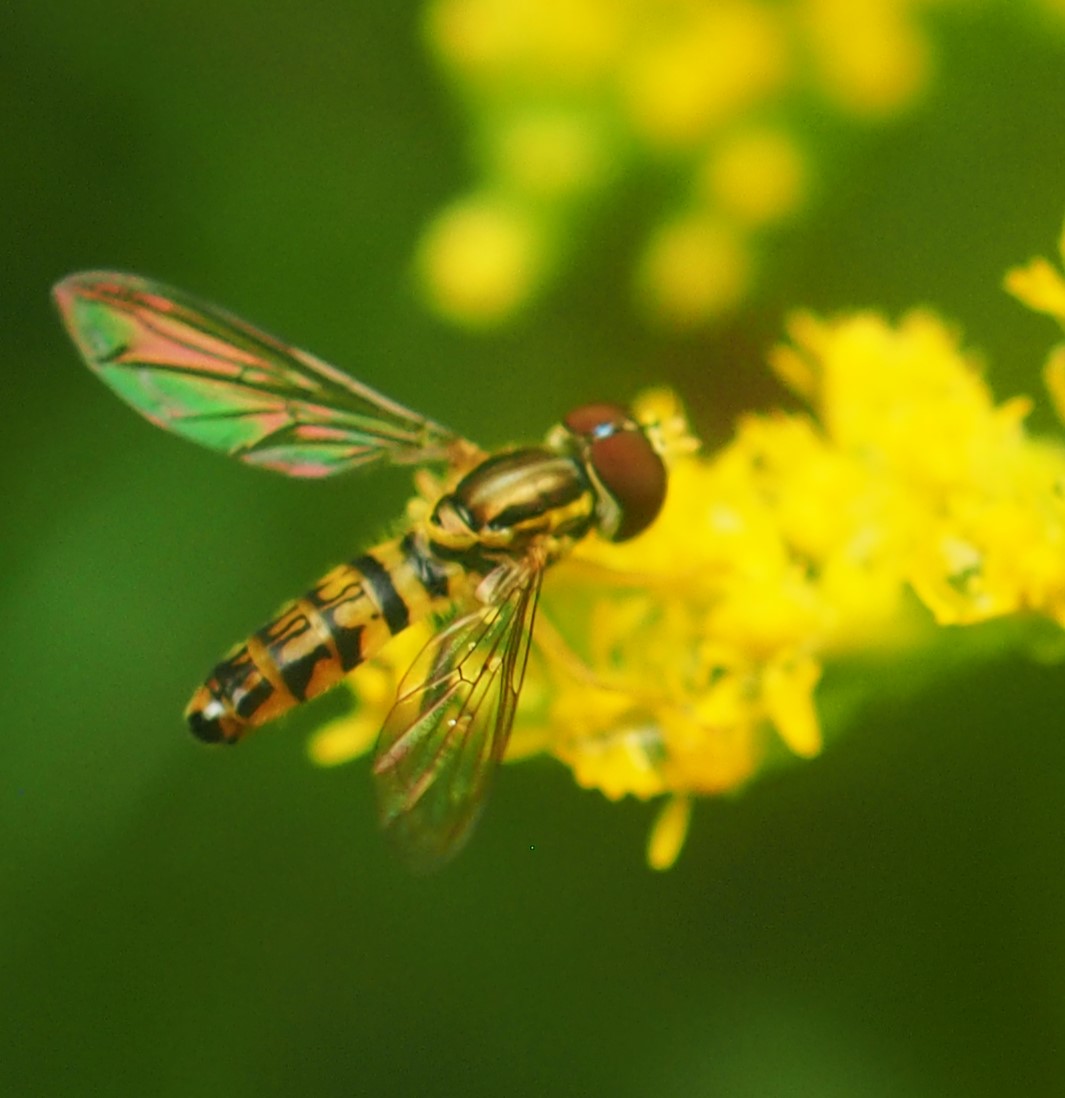
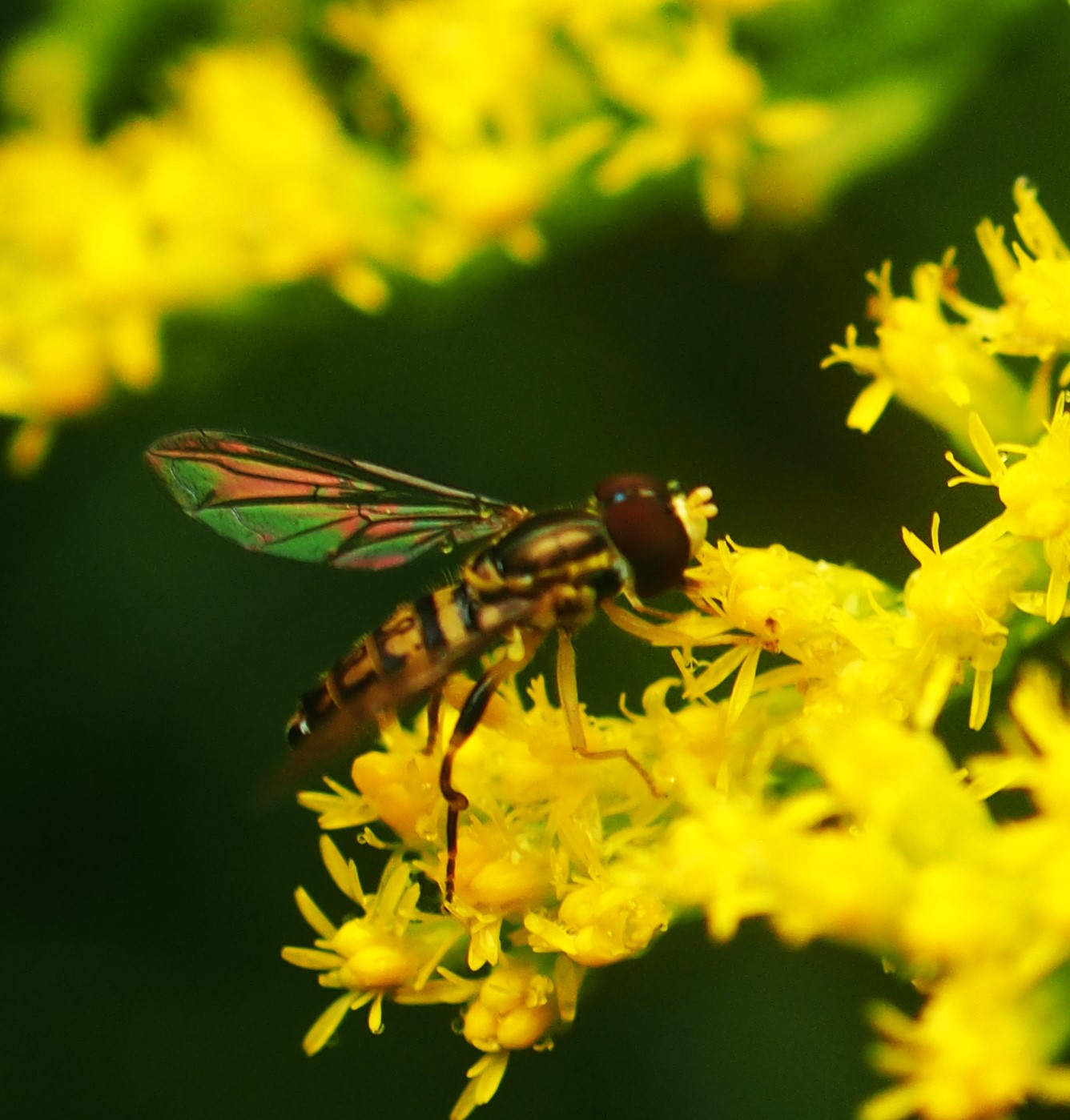
Here is another kind of Hover Fly I haven't consciously seen before. If anyone knows what it is, please enlighten me! The Carboniferous era Horse-tail that is making it a convenient hitching post is inches away from the Goldenrod.
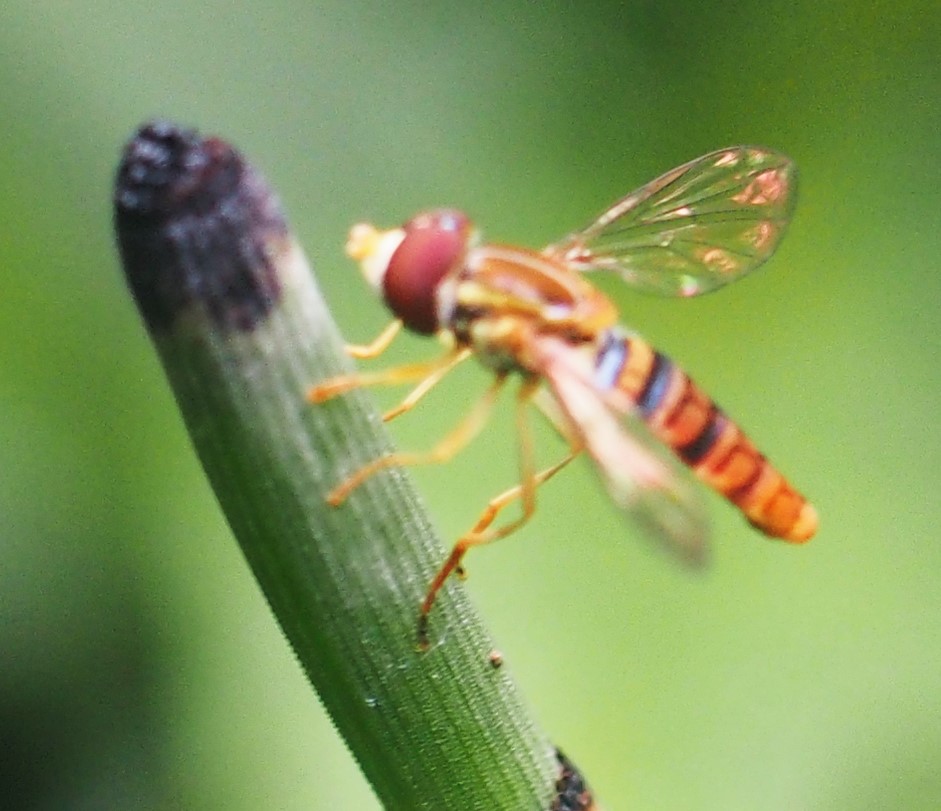
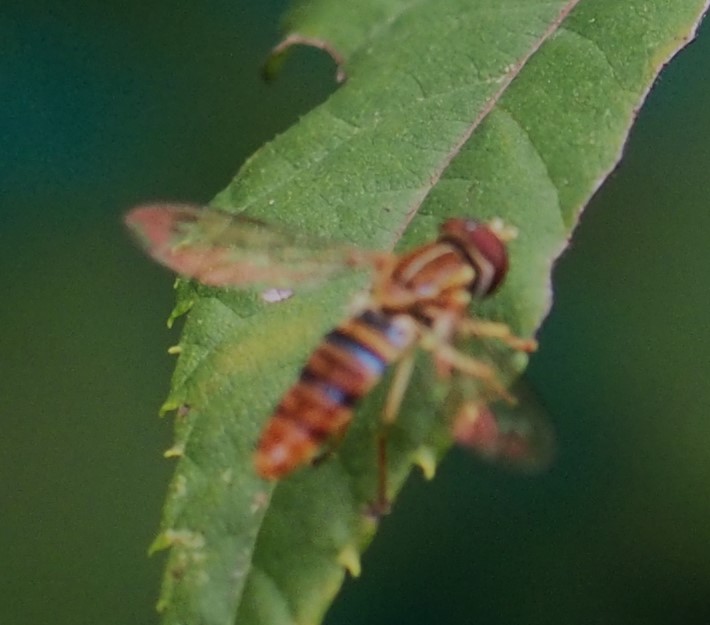
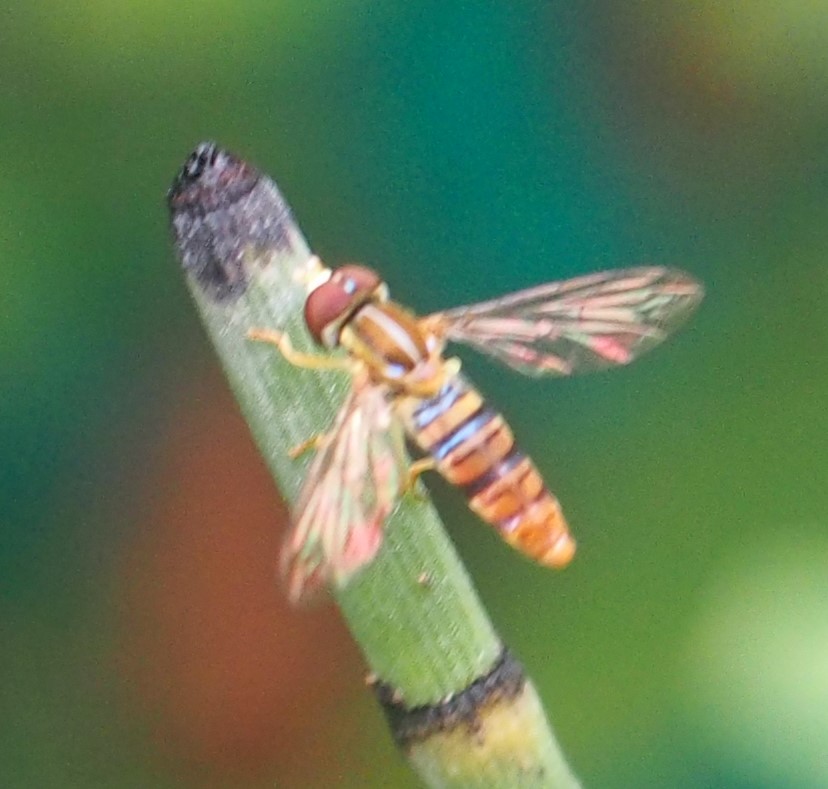
I was so distracted by what was going on out front that I didn't shoot much of the usual clientele on the path from back to front yards. If you have become addicted to those tiny long-legged iridescent flies, please forgive me. Here is one mystery Fly and two that make me itchy just looking at them. The one that is so full to almost bursting is MOST likely to be full of O+ blood. Yikes.
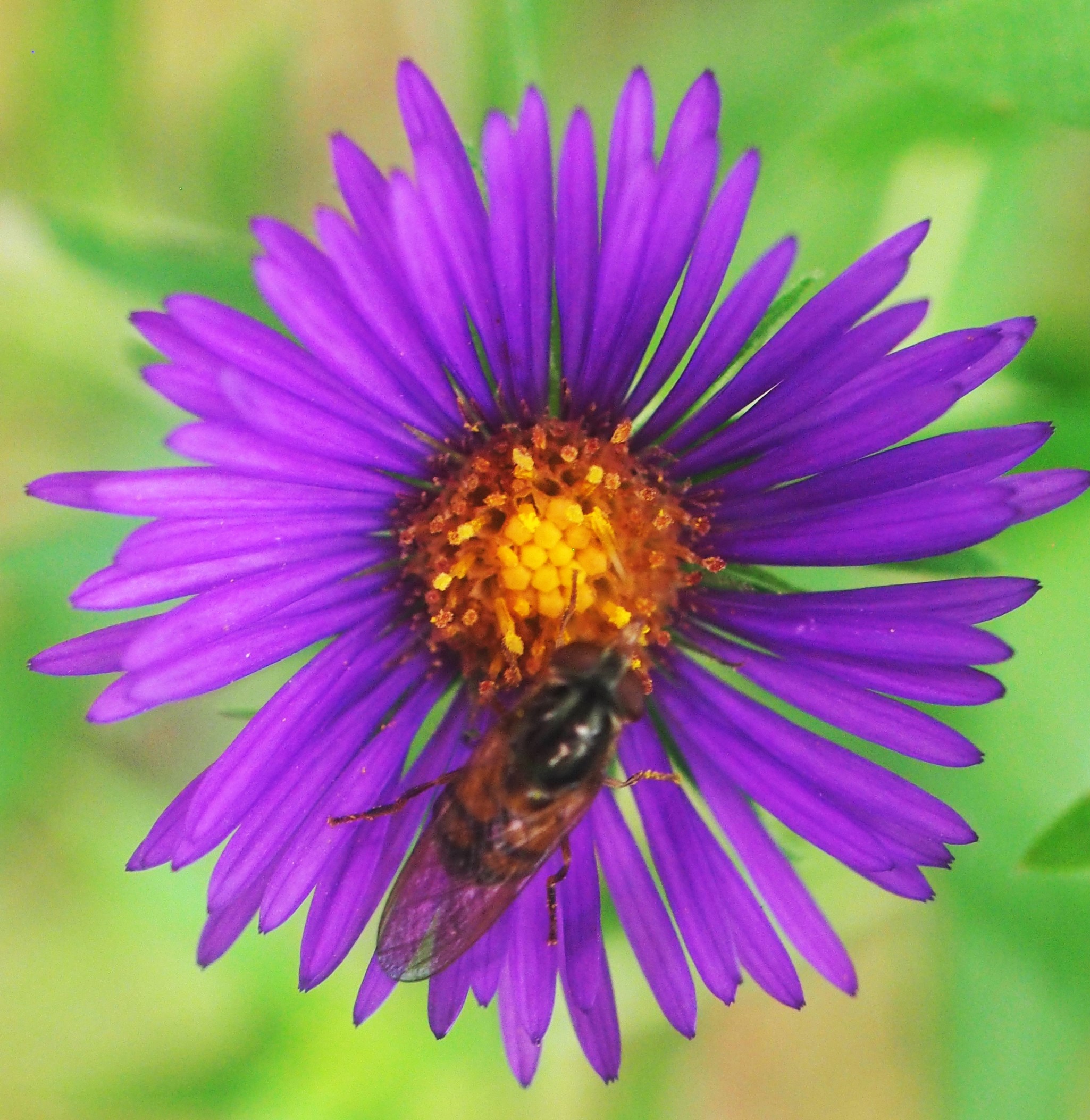
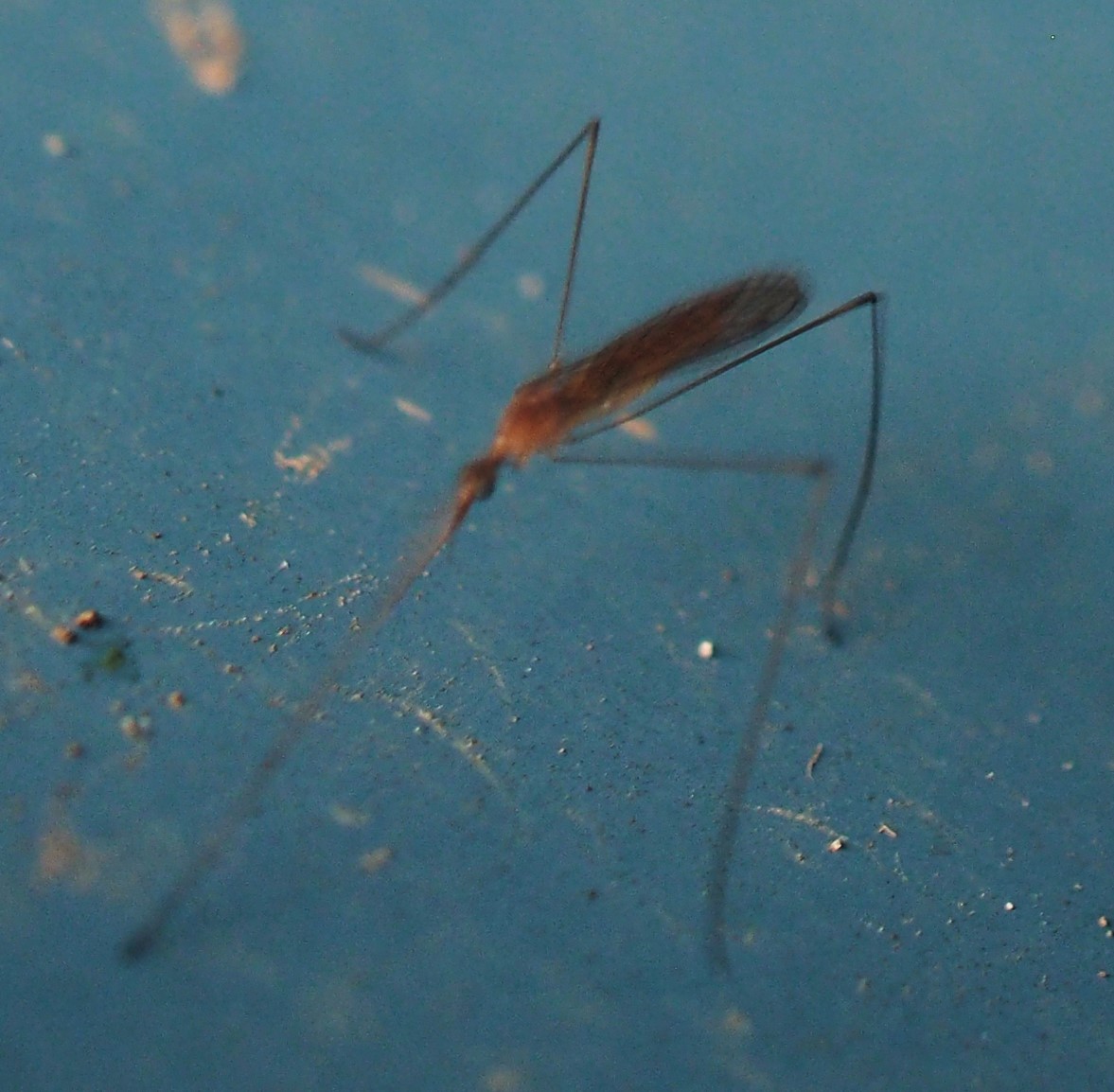

Robber Flies are Flies too. Here are some hairy little guys. Don't know what kind they are yet, but they look resilient.
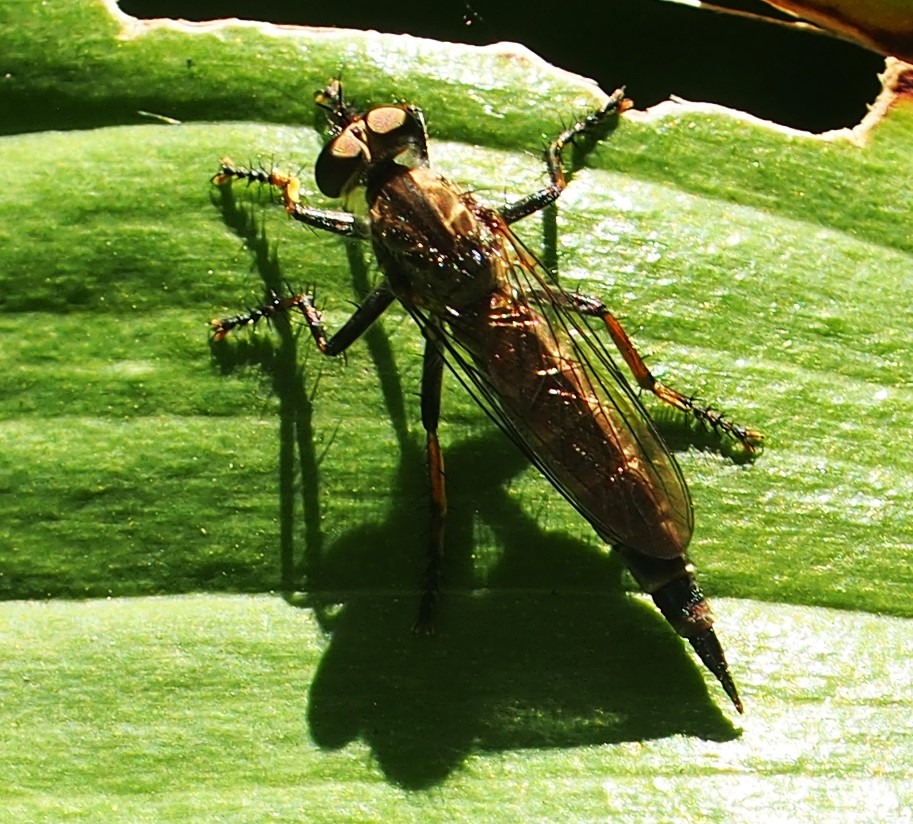

Pictures 1 and 2 are of the same little tiny Moth. The third is a very small but not too tiny Moth. But number 4 is an Ailanthus Webworm Moth, one of the heights of the Goldenrod year! I spend the earlier part of the year wondering if I will ever see it again, and here it is!
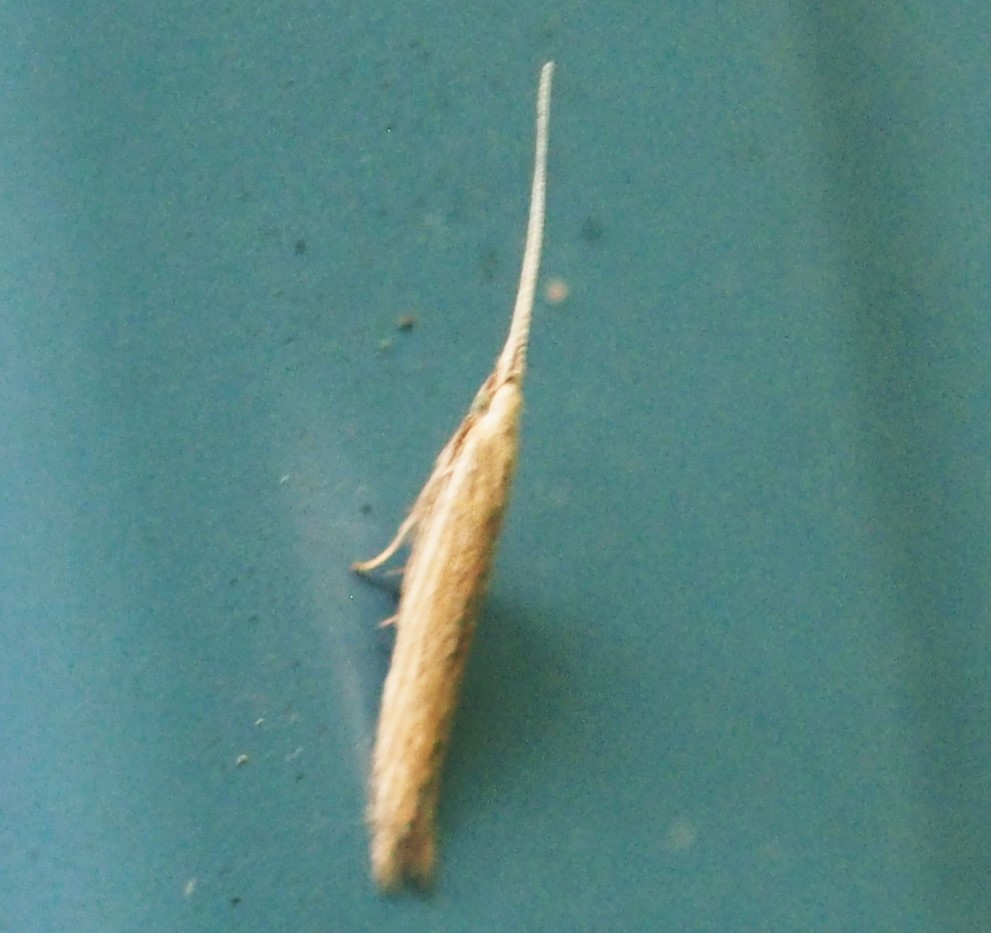


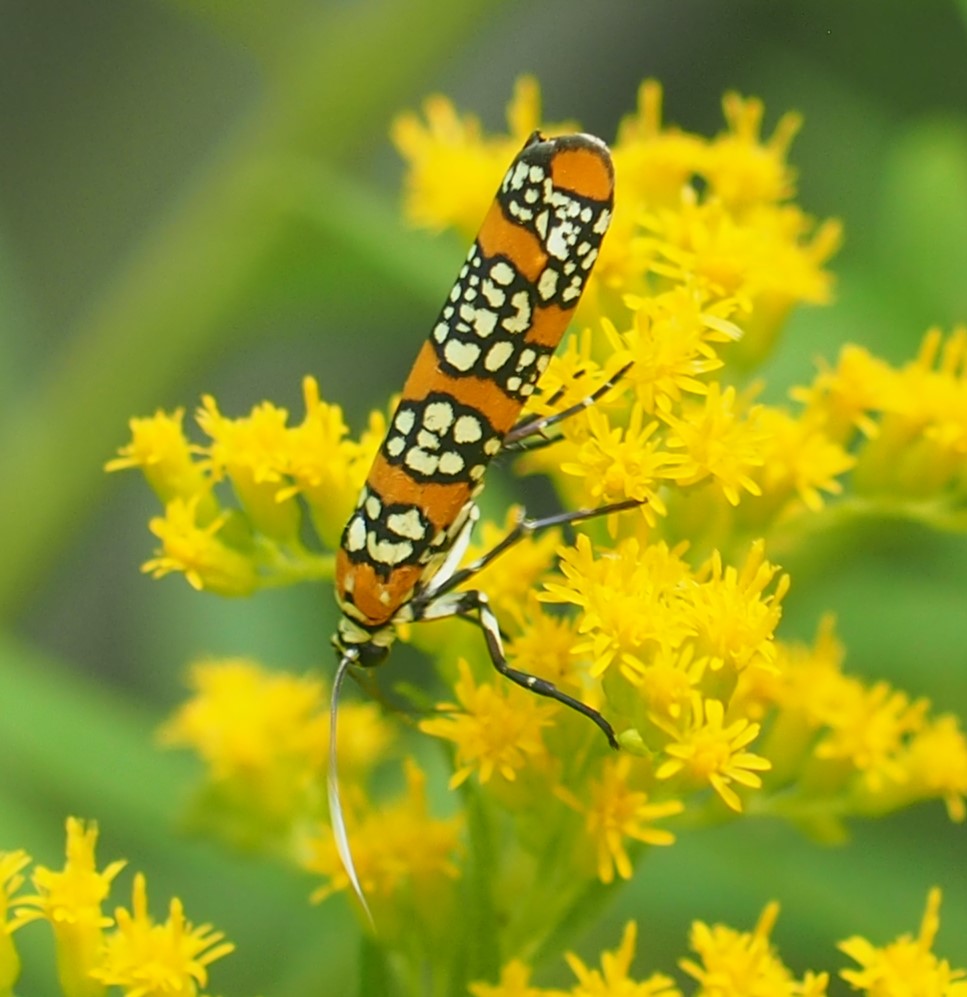
That gorgeous Moth caterpillar deserves more than one tiny picture. Now can we go off on a Flower Walk?
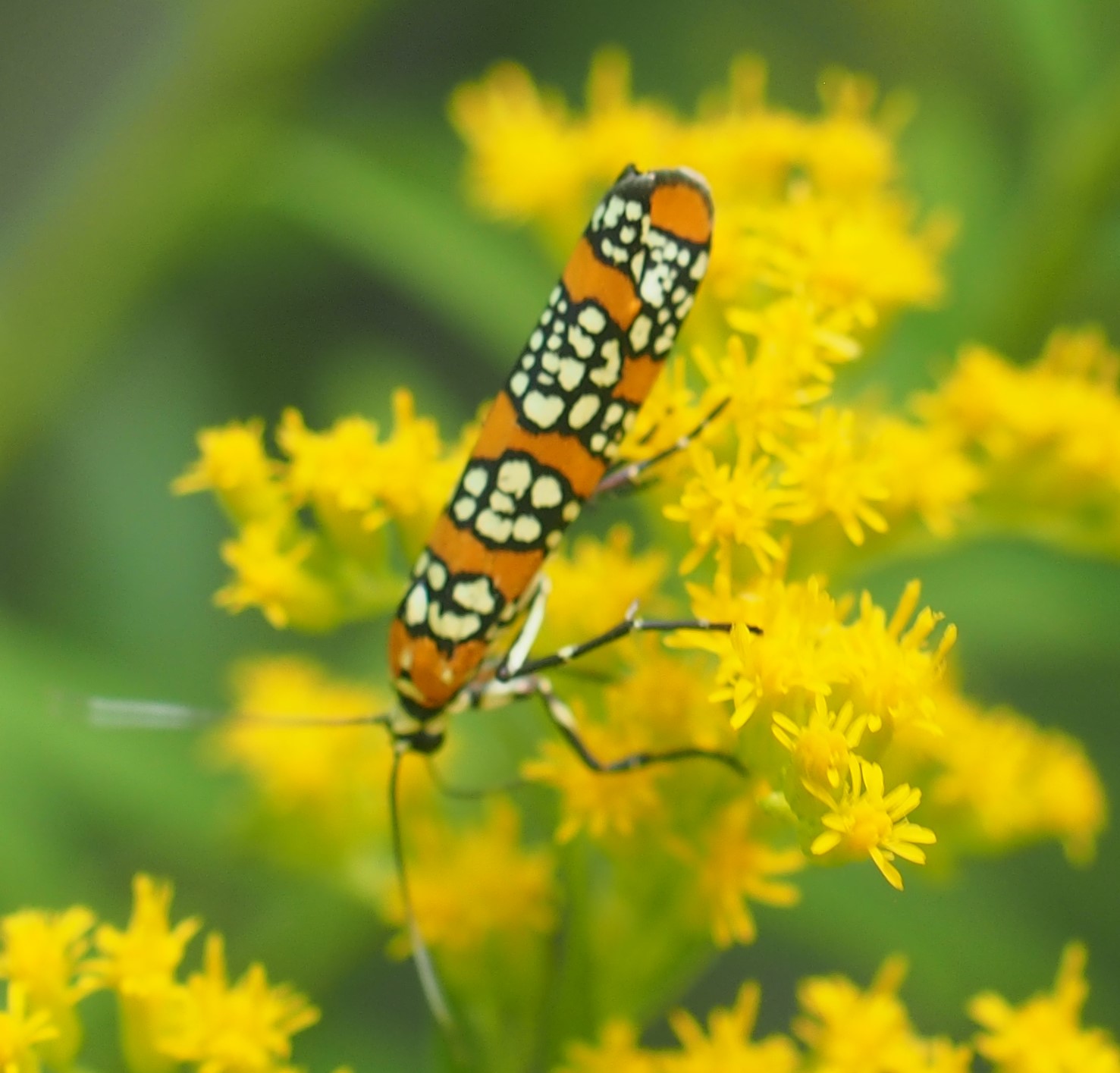

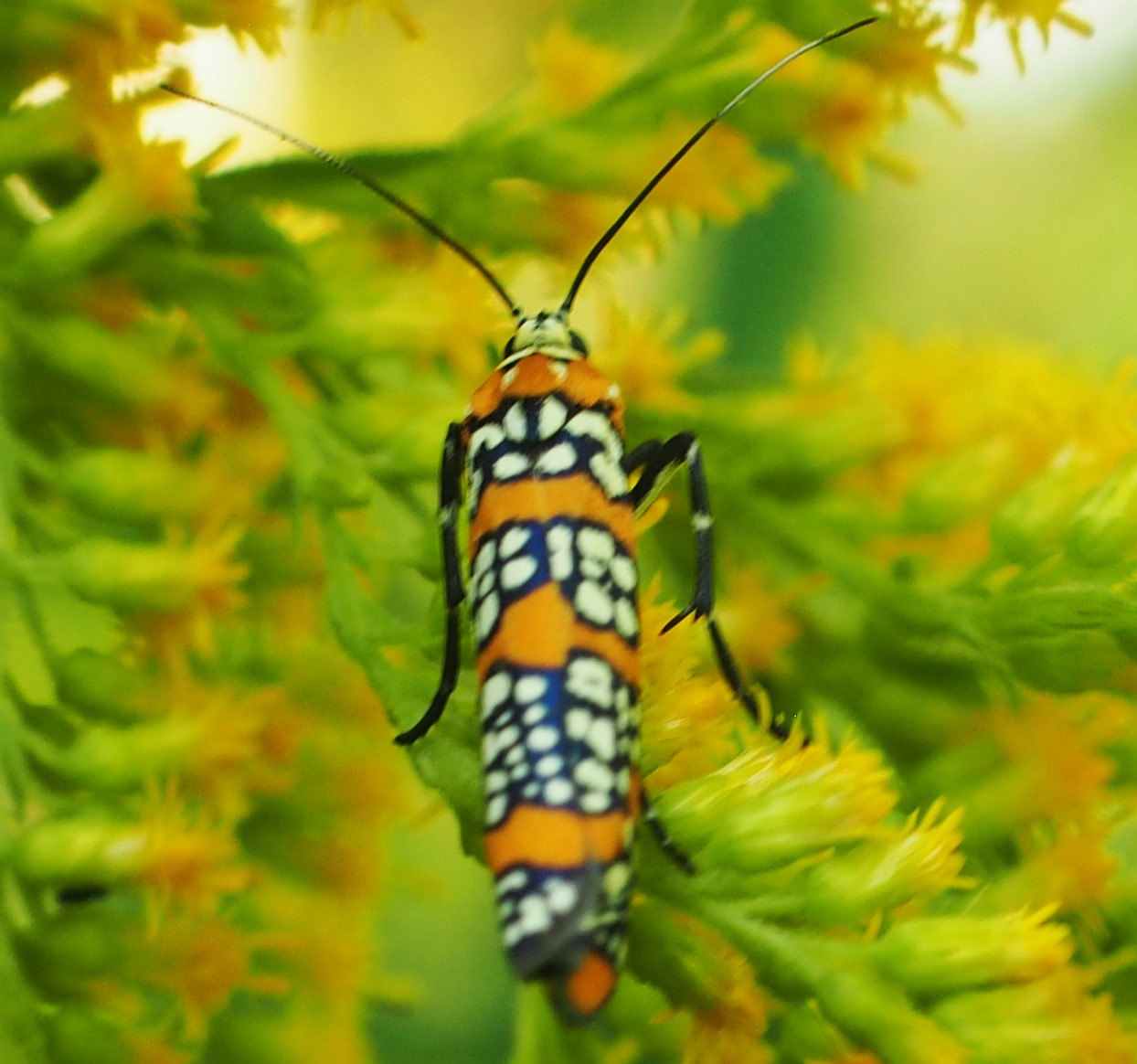
Let's start with the Japanese Anemone and one of its morphings.
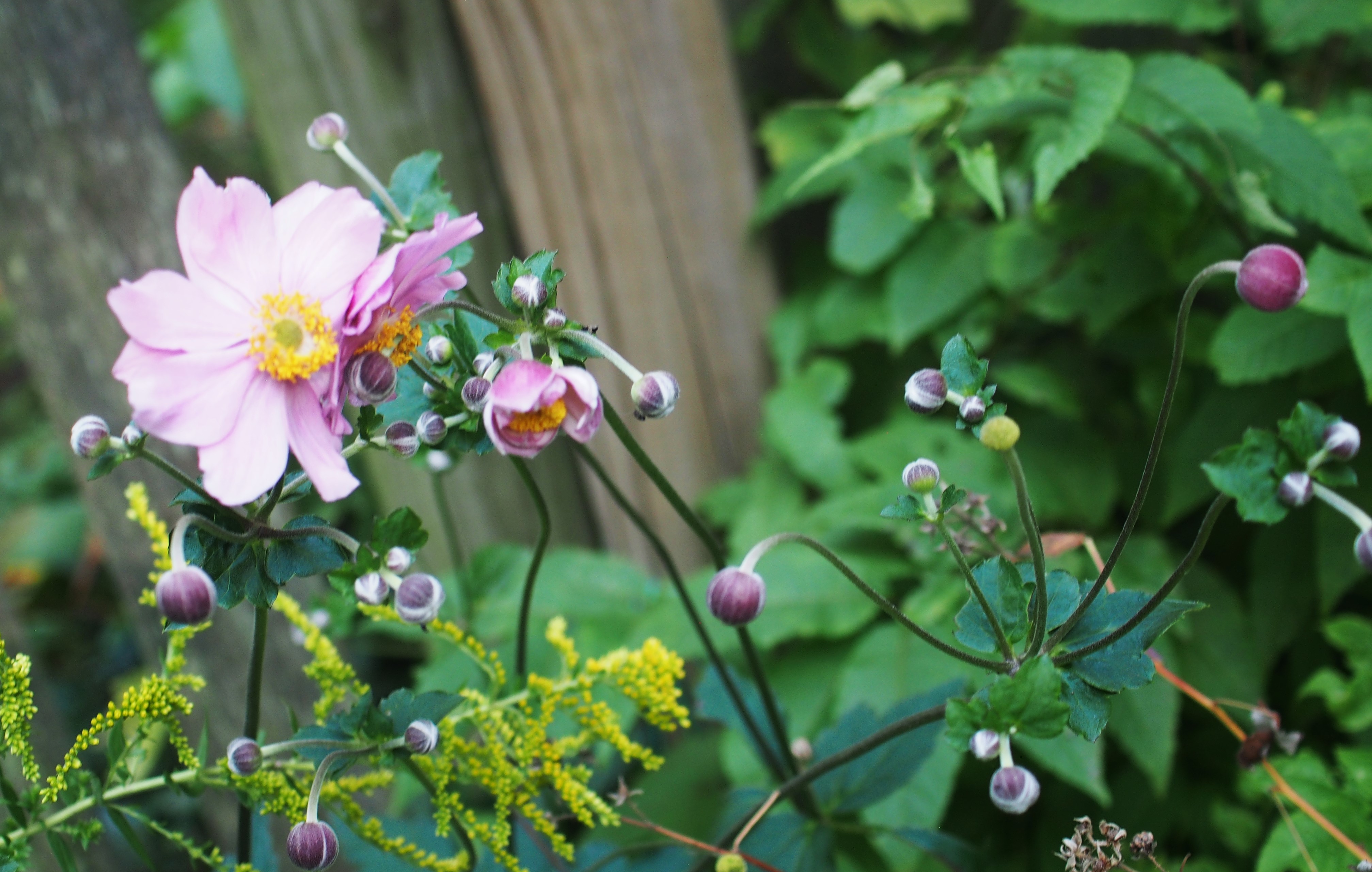

Two more morphings.
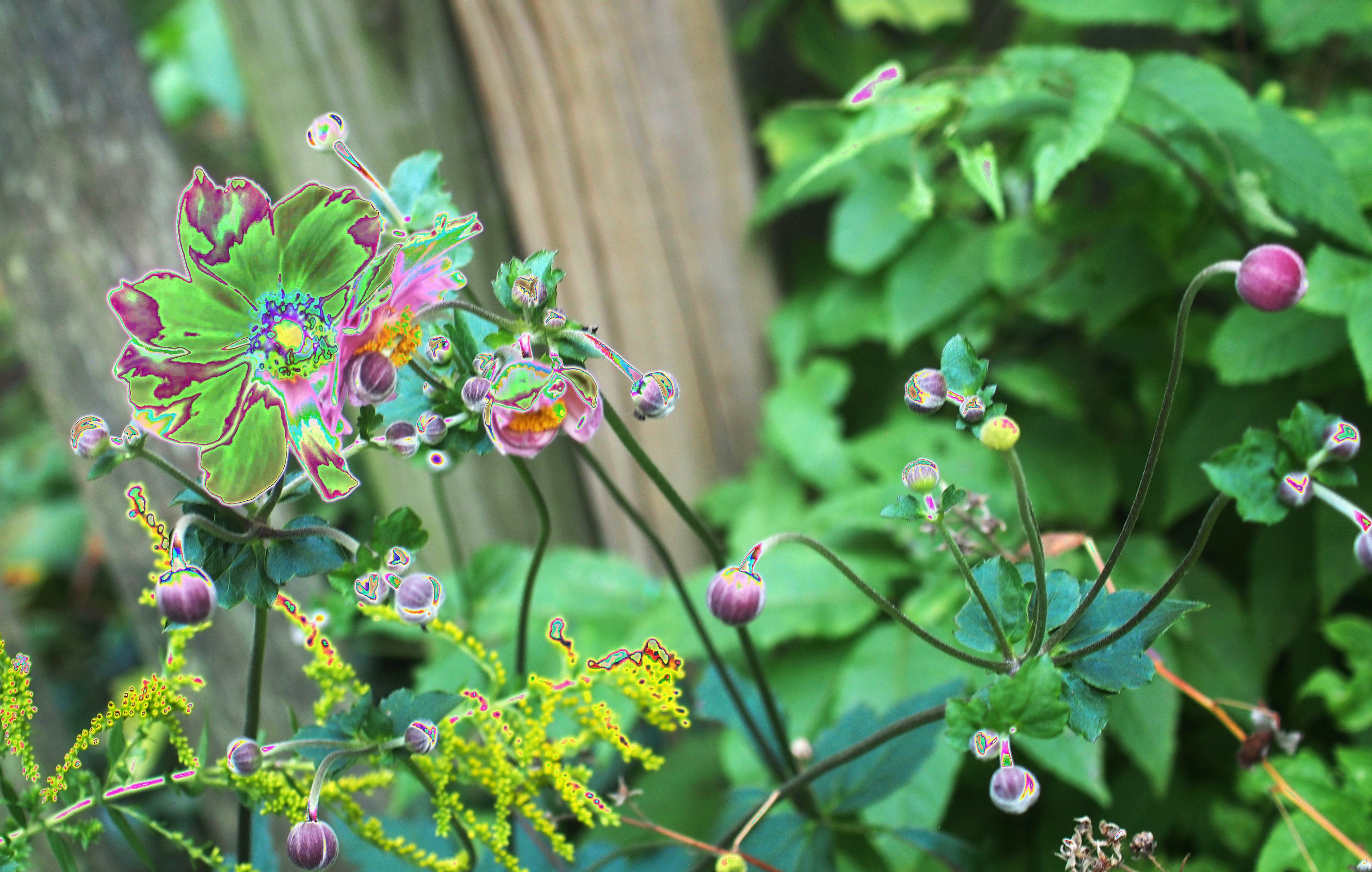
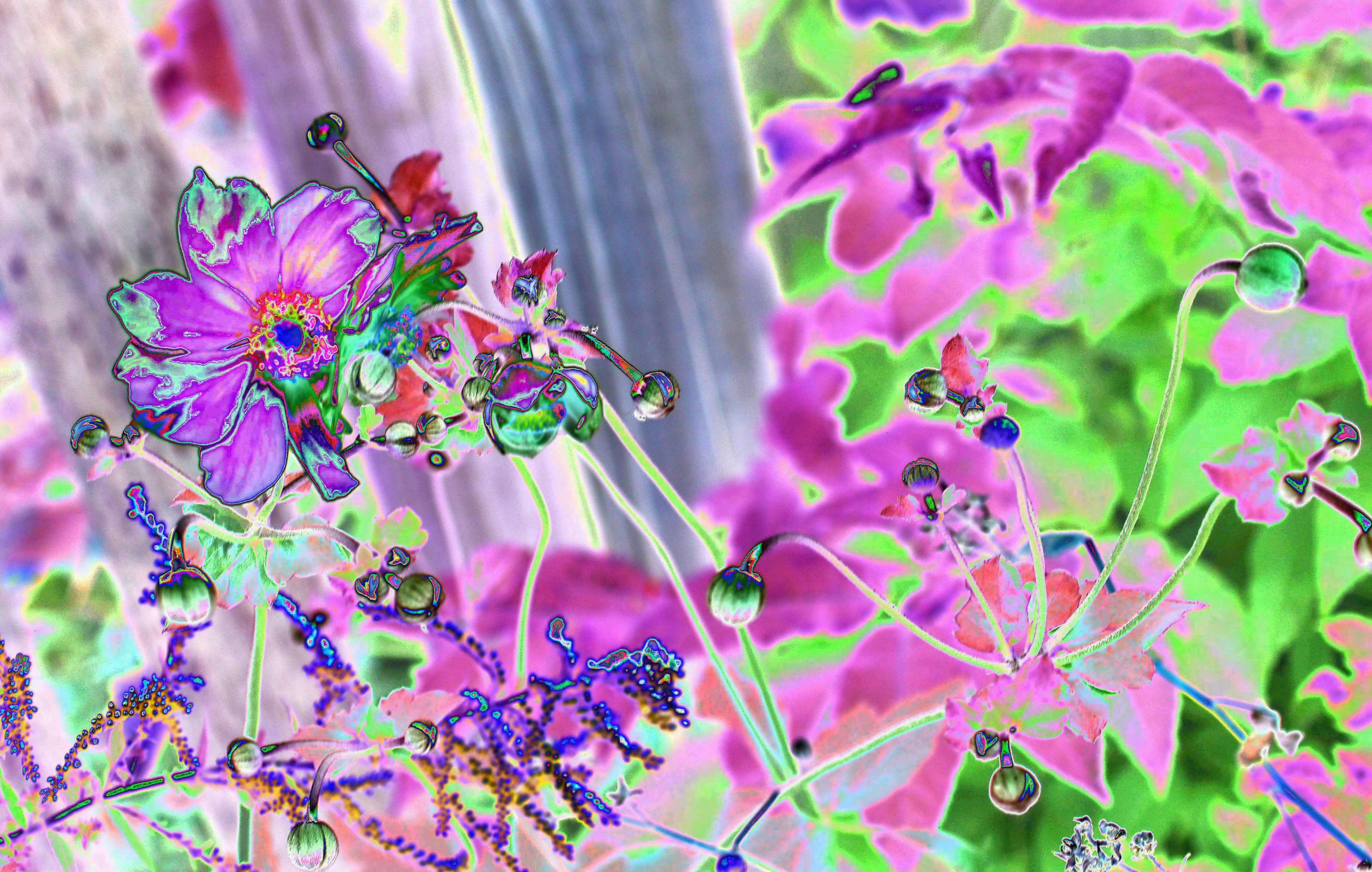
And two more morphings. You are herewith permitted to use these six variations as you like, so long as you credit the author (me).
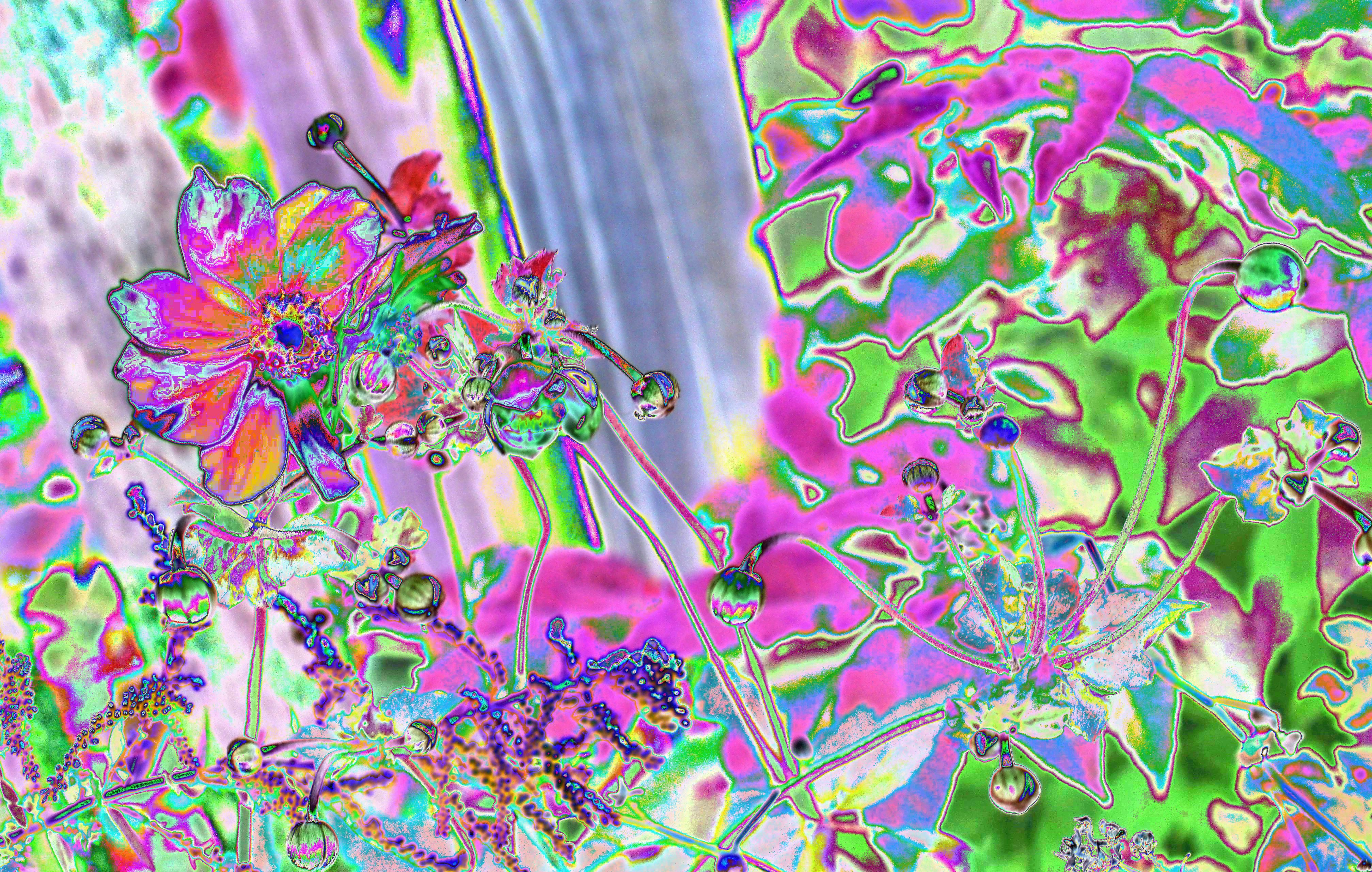
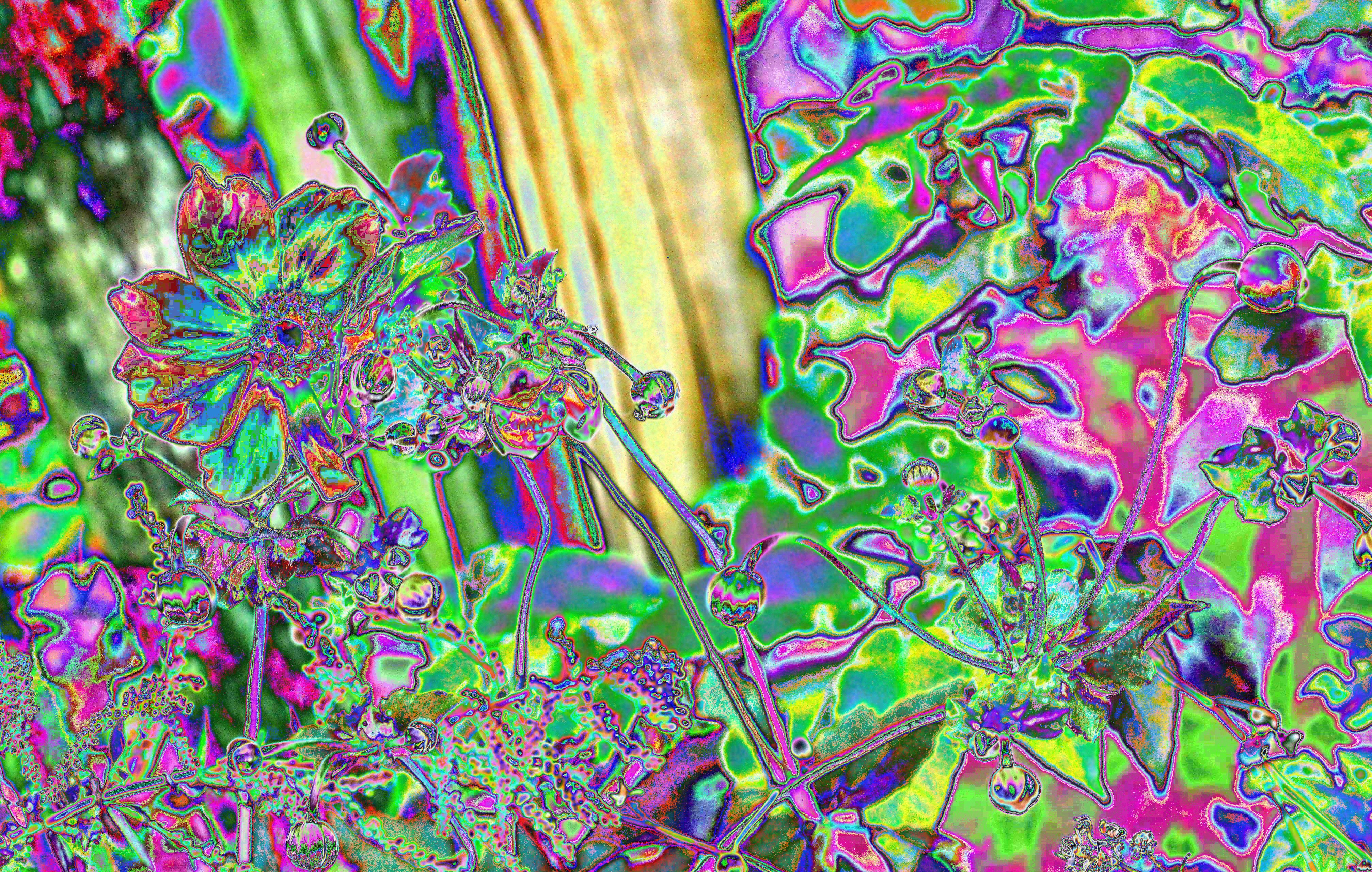
Here you see the Asiatic Dayflower, a pink Aster, and that flower with a Green Sweat Bee, followed by a Purple Aster with a mysterious little fly in it.


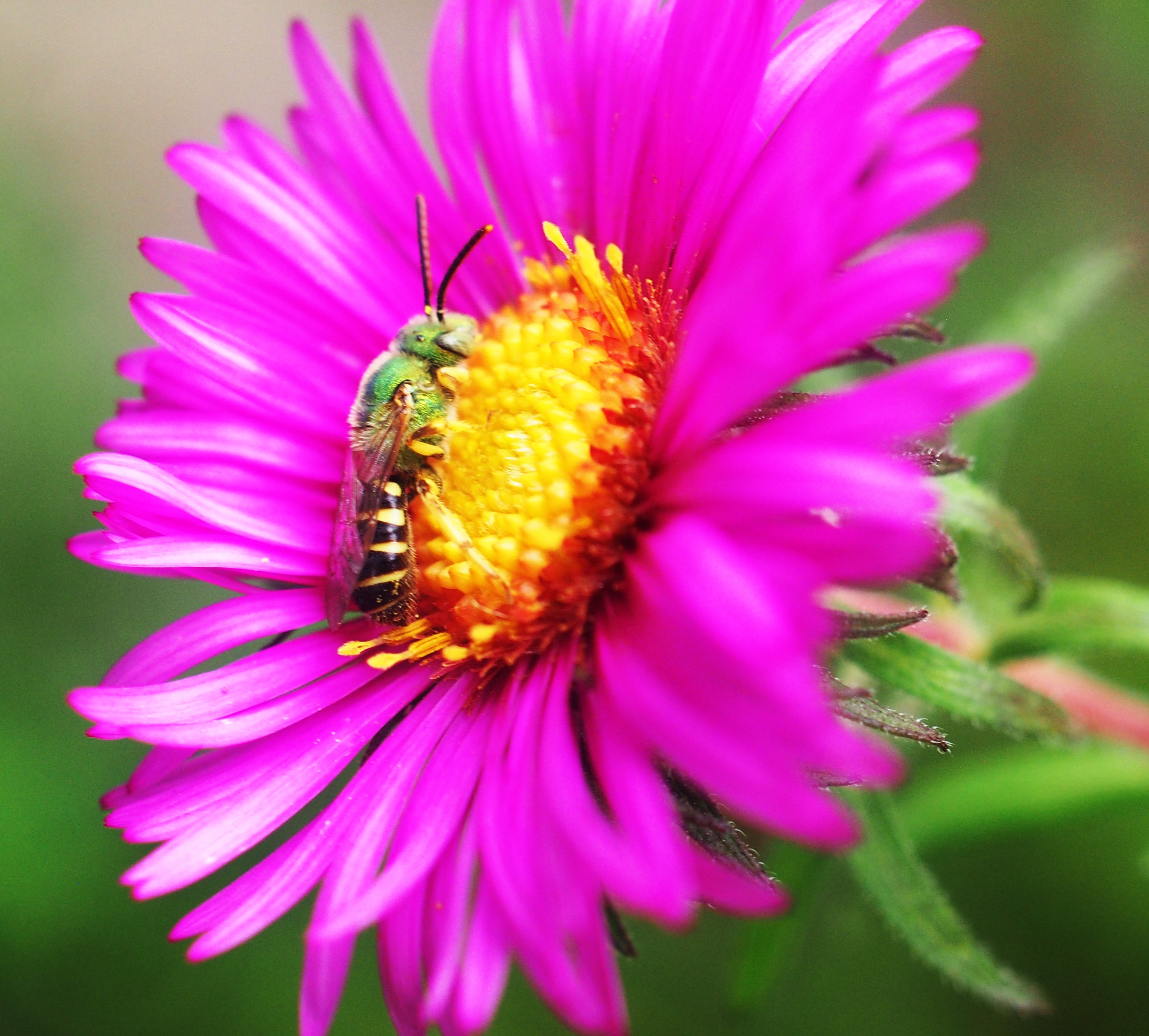

Here is the Wild Phlox, which has been blooming in the brush near the gate for months, and then the Cultivated Phlox which started about a month later but is still going!
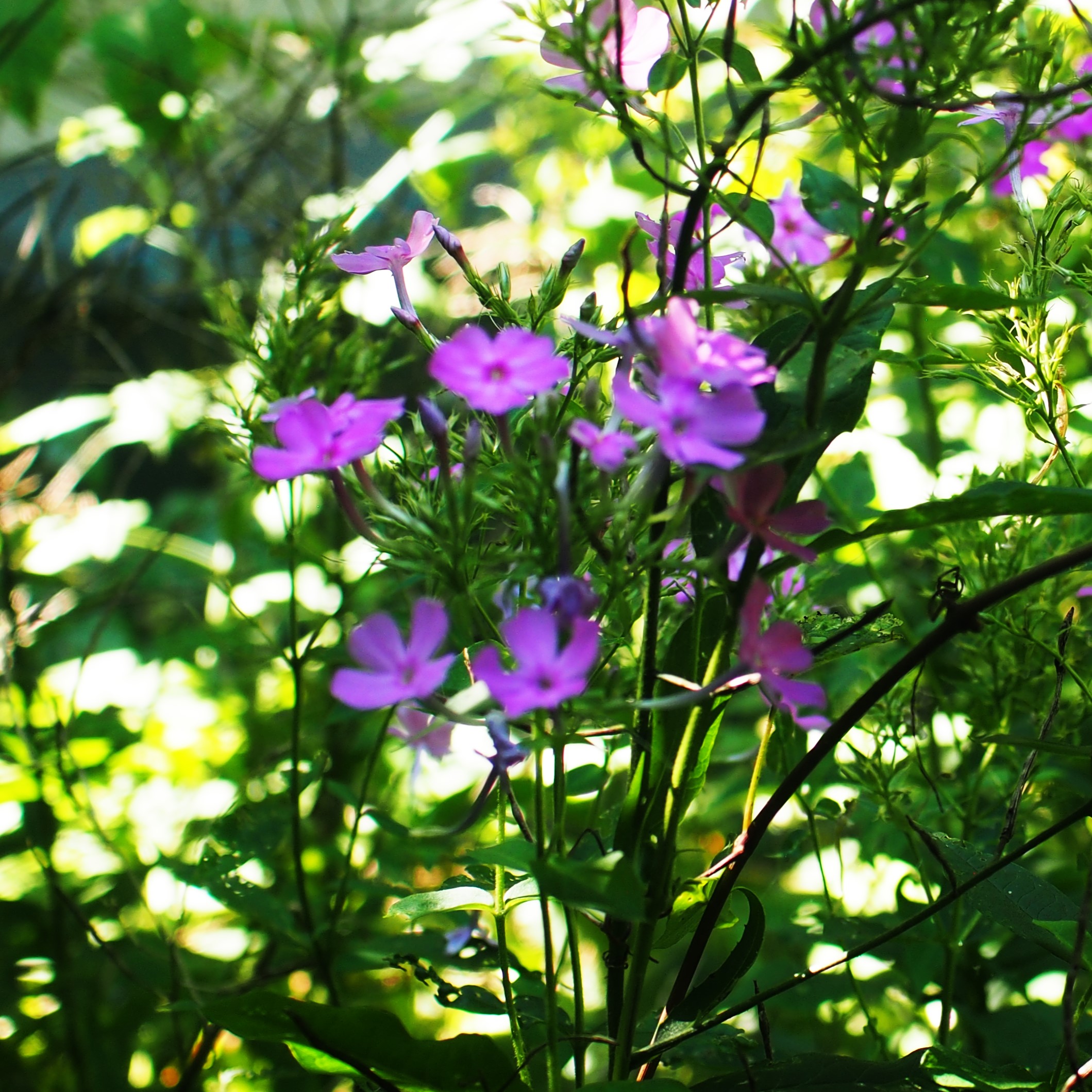
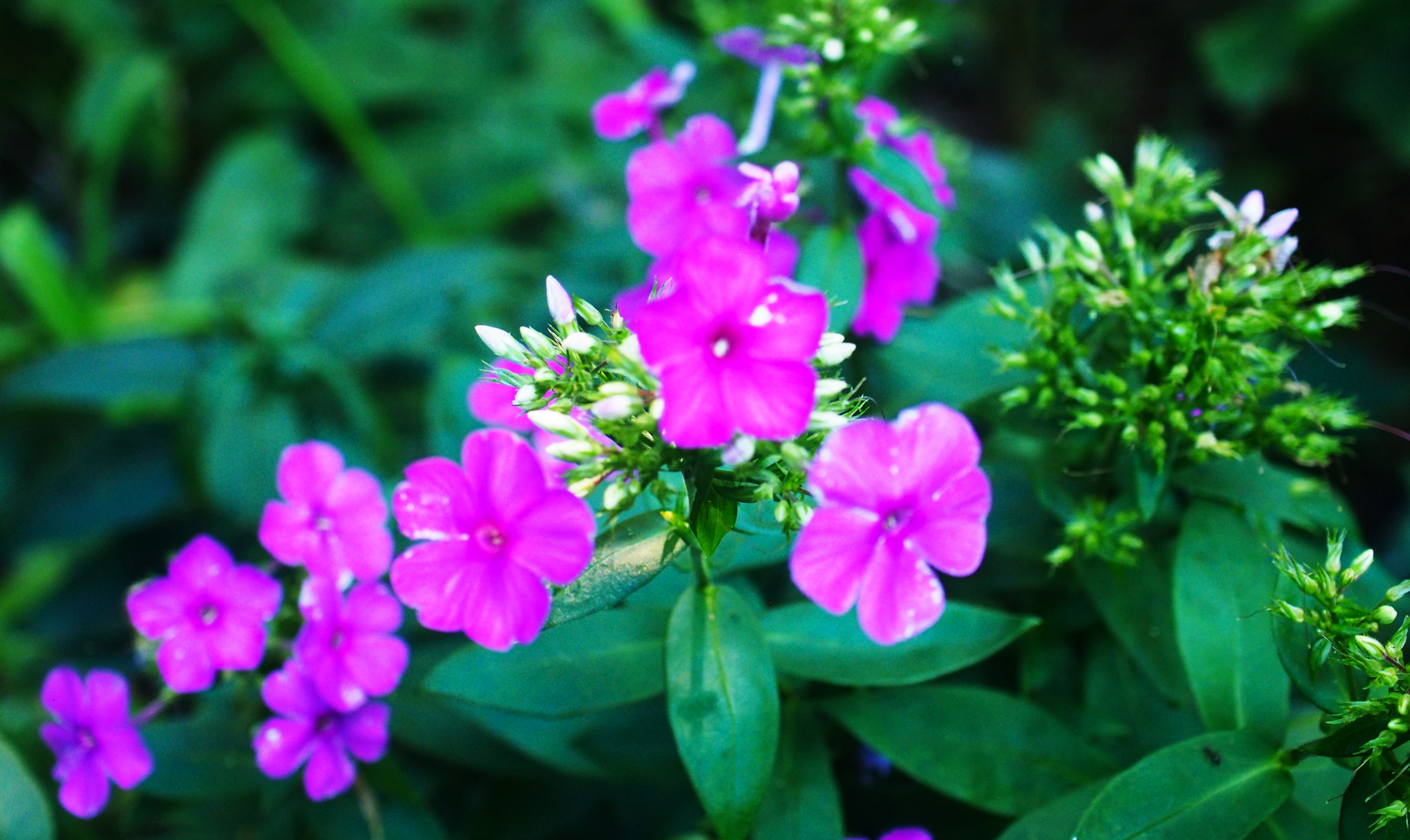
Here is one of the deck boxes with Sage and Lantana.
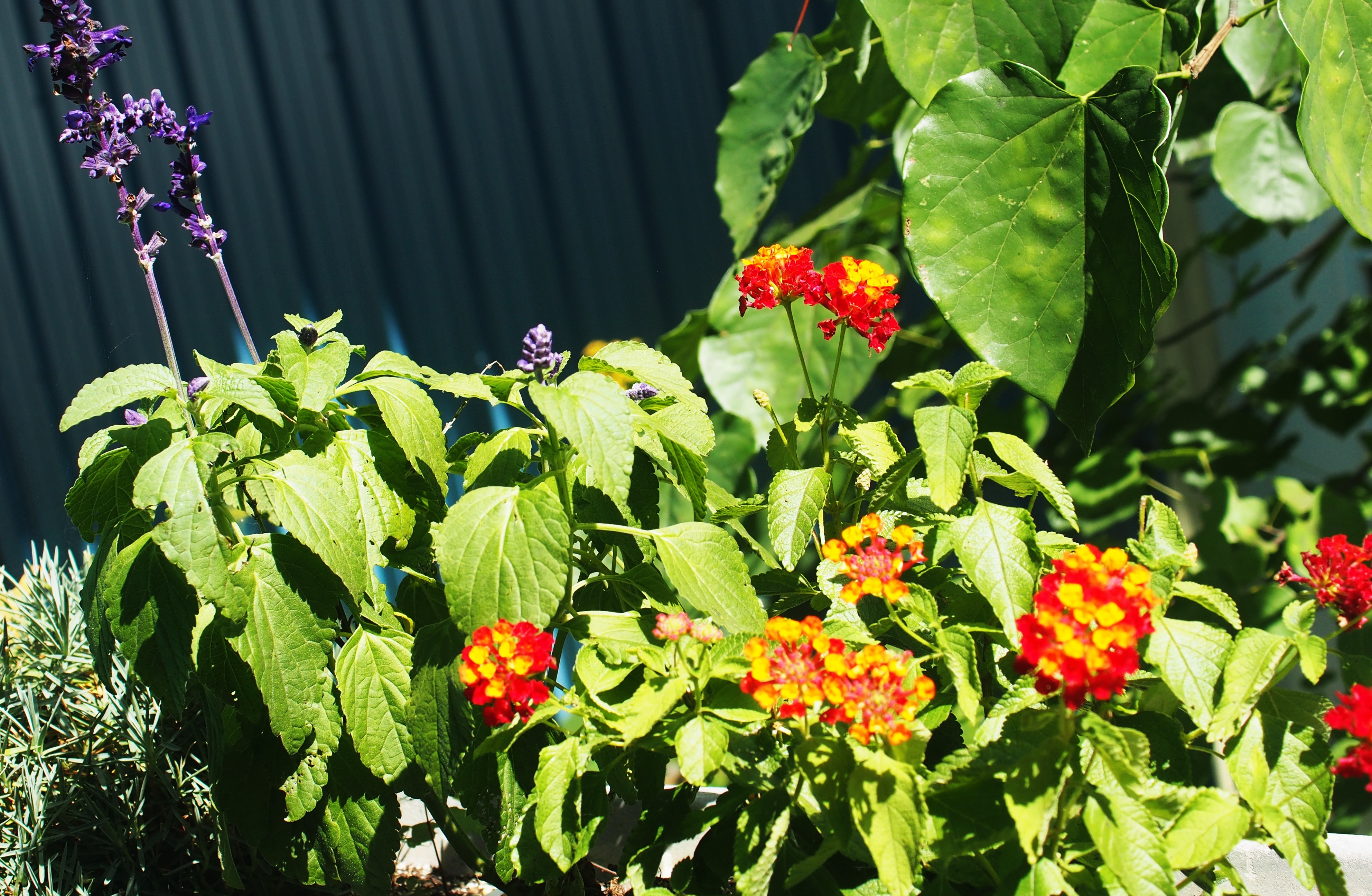
That tall Evening Primrose is aiming for the sky. It really does look like a stretched Evening Primrose, doesn't it? The one on the right is the same plant but only a bit above head level.
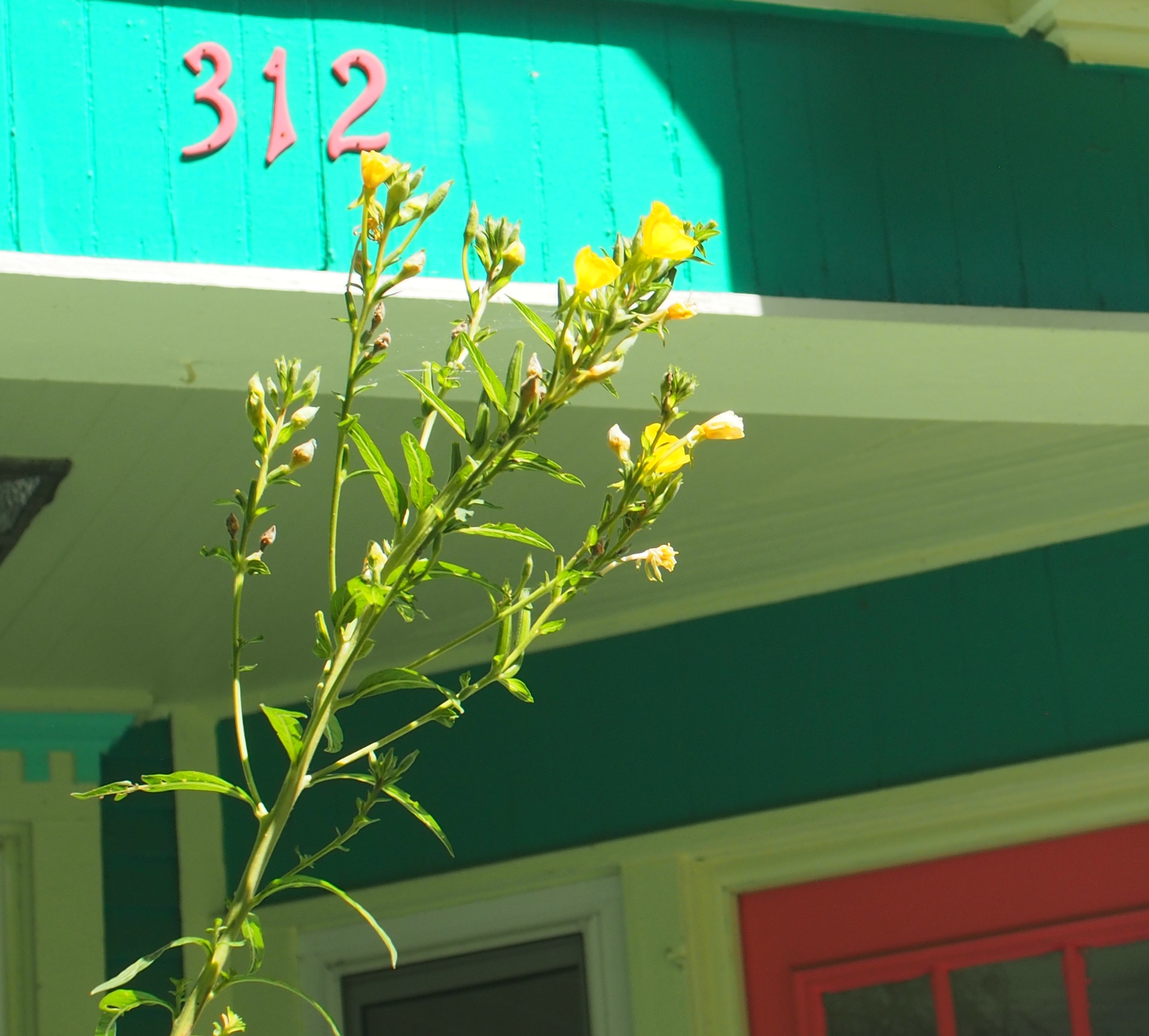
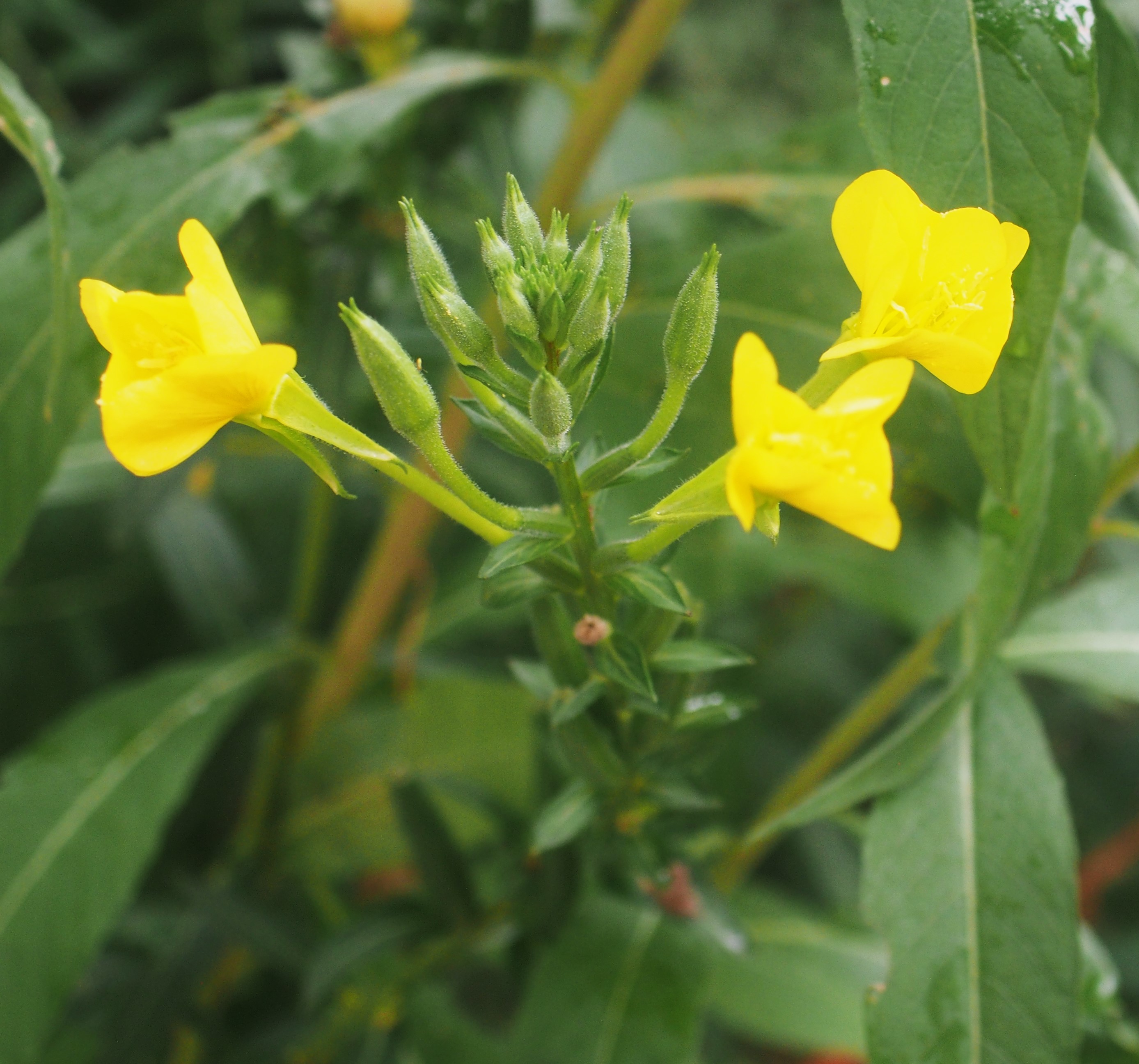
Sadly, the Spiderwort is over and done for the year. I do wish I could go back a week and find a picture of it. Nope, there wasn't any last week either. There haven't been any Thistles since a leaf-raking accident last year, but my good Potsdam friend found a dying Thistle in here yard. She hates Thistles but took mercy on a suffering friend and sent me the contents of a Bull Thistle seedhead before the seeds flew away. Here you see them on September 5, and HERE you see them on the 10th.
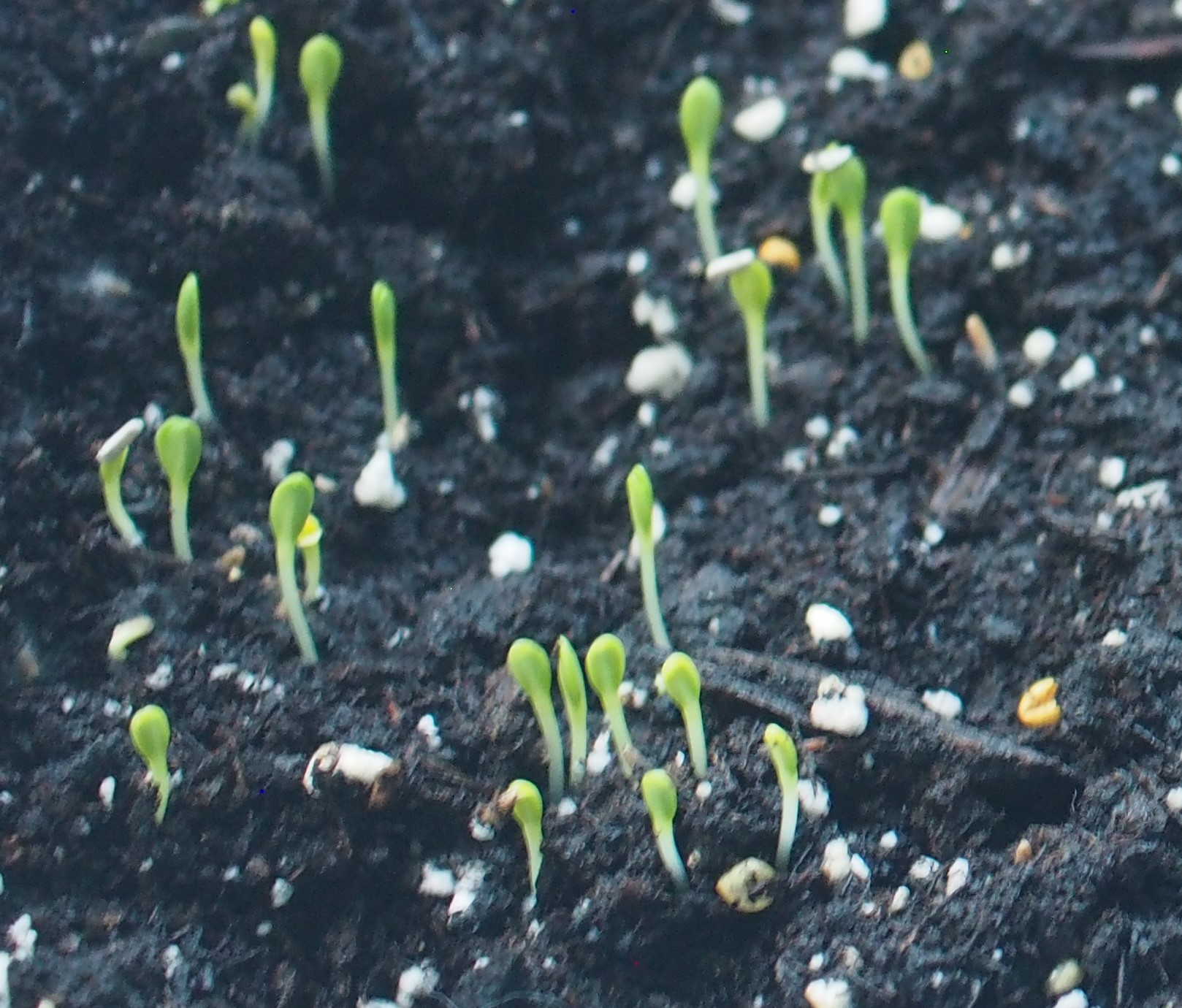
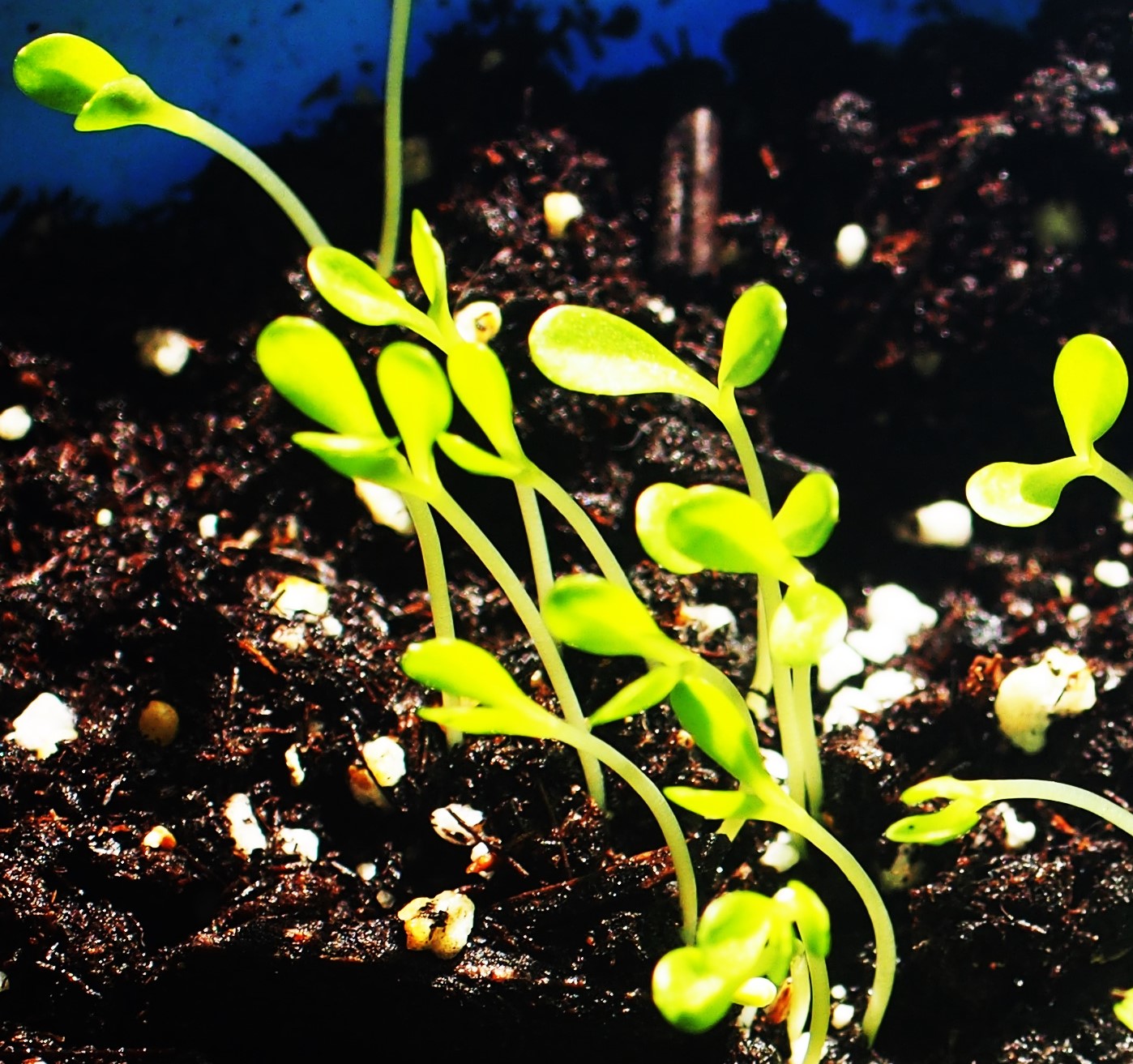
Let's look at the Lilies. Sadly, they are suffering the midnight raids of Paul, er Rocky Revere. Even with his feast in a tin, he always wanders to the pond and goes fishing, mostly for Lily buds. If he finds one (they are easy to spot) he will either totally disassemble it or will bite off the long central part so that when the lily blooms the next day, it will have squared-off petals. Here are an untampered bud with admiring Frog on Sept 4; a bud just starting to open and an open flower, these two pictures taken on Sept. 5. Last shows the lopped edges on Sept. 7.
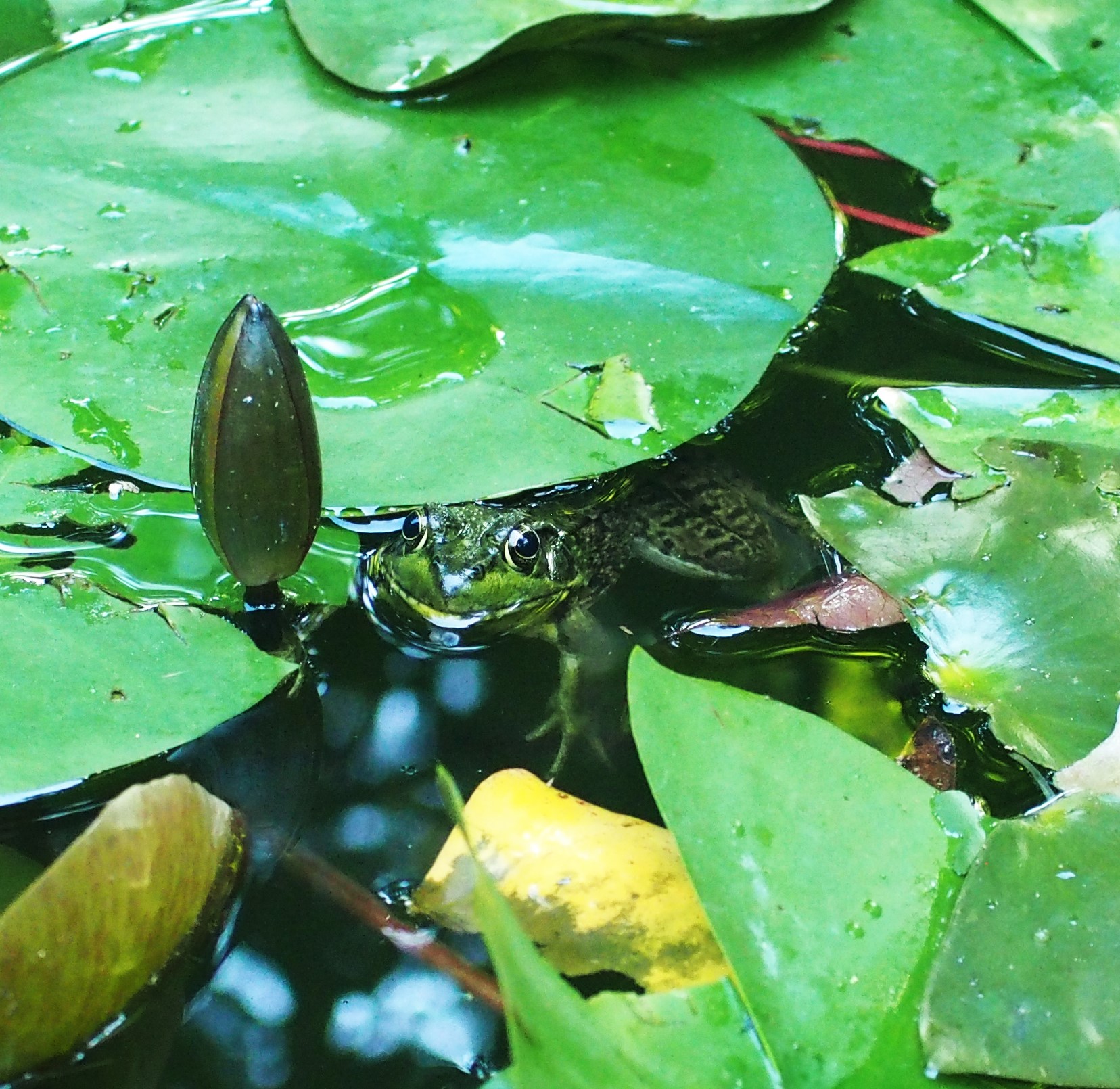
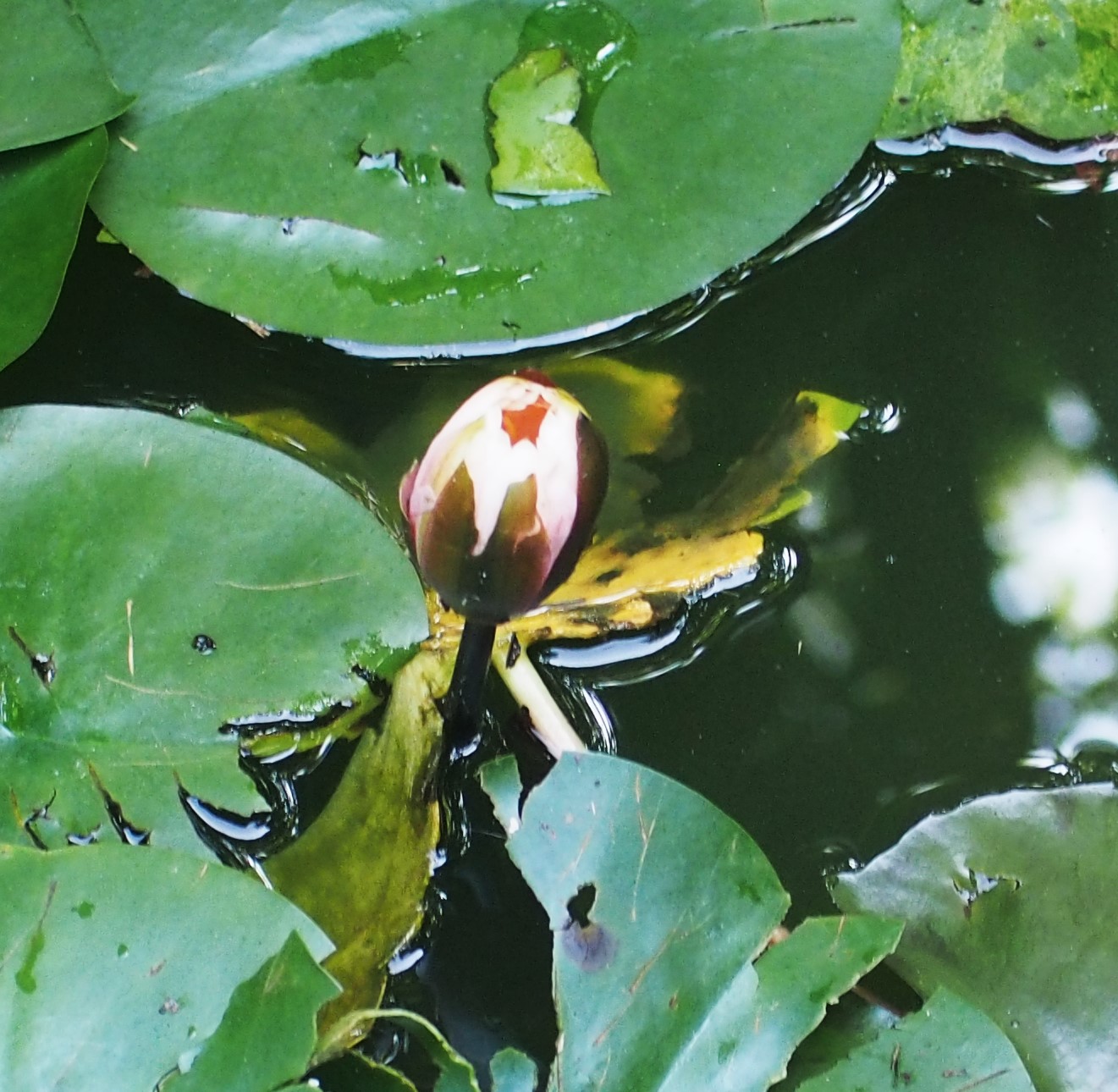
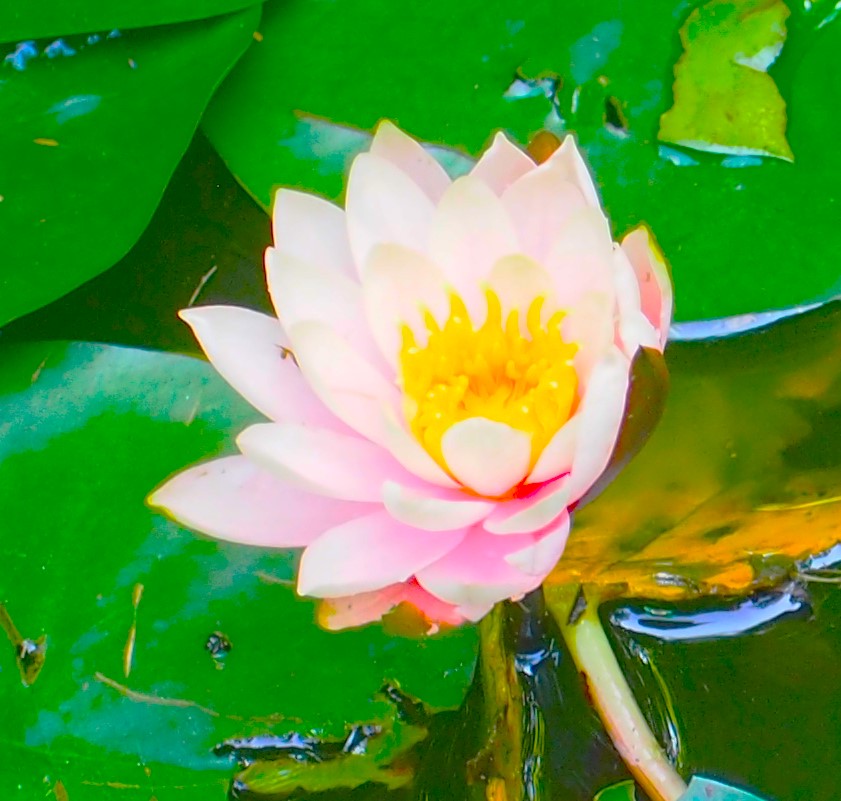
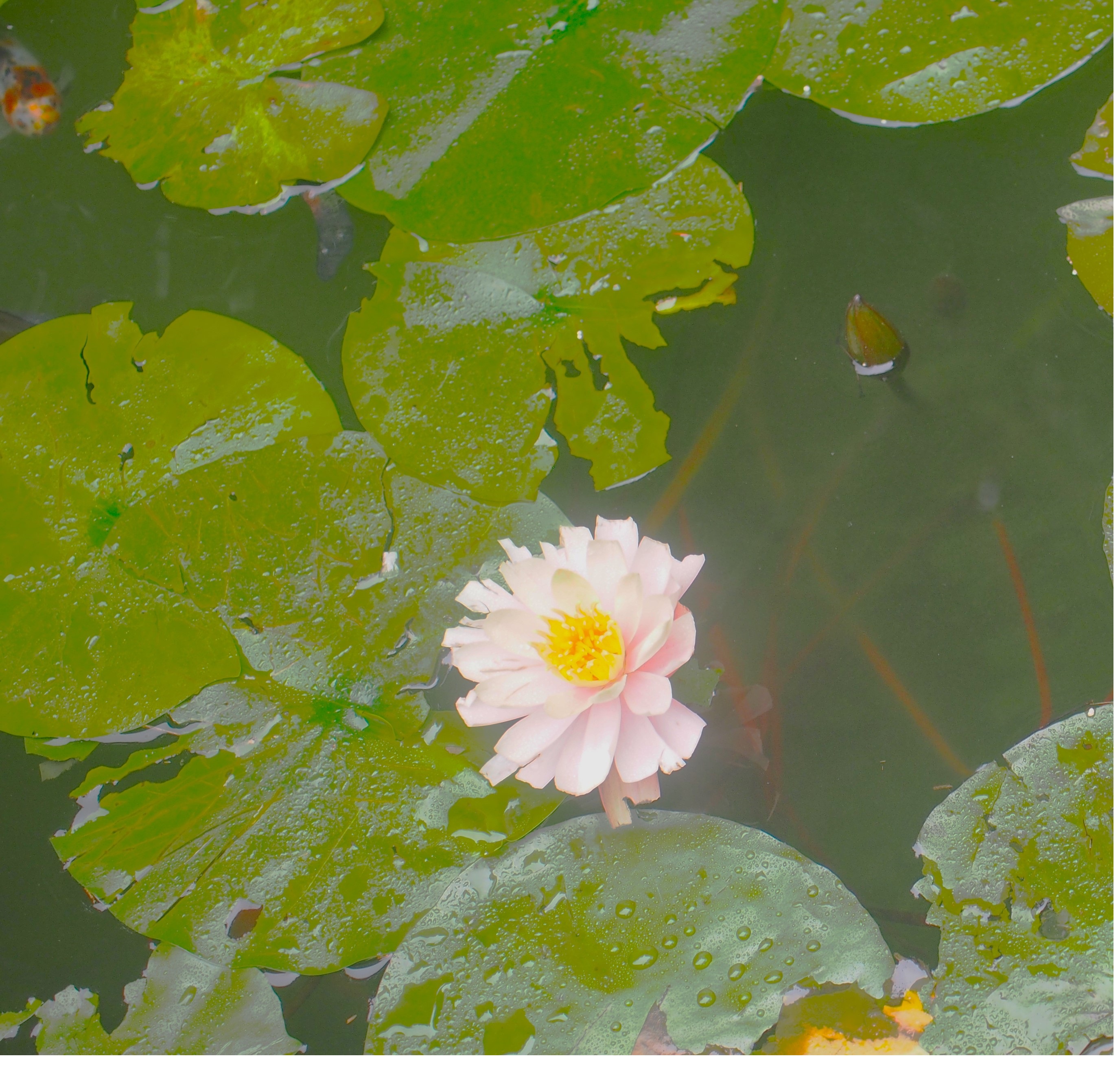
This seems to be the end of our Flower Walk, the last part of which involved wading a bit in the water. So we ask, were there any Spiders this week? First, we see what seems to be a
Spider in genus Bassaniana; next a Common House Spider; and last, a Cobweb Spider with a large egg case.
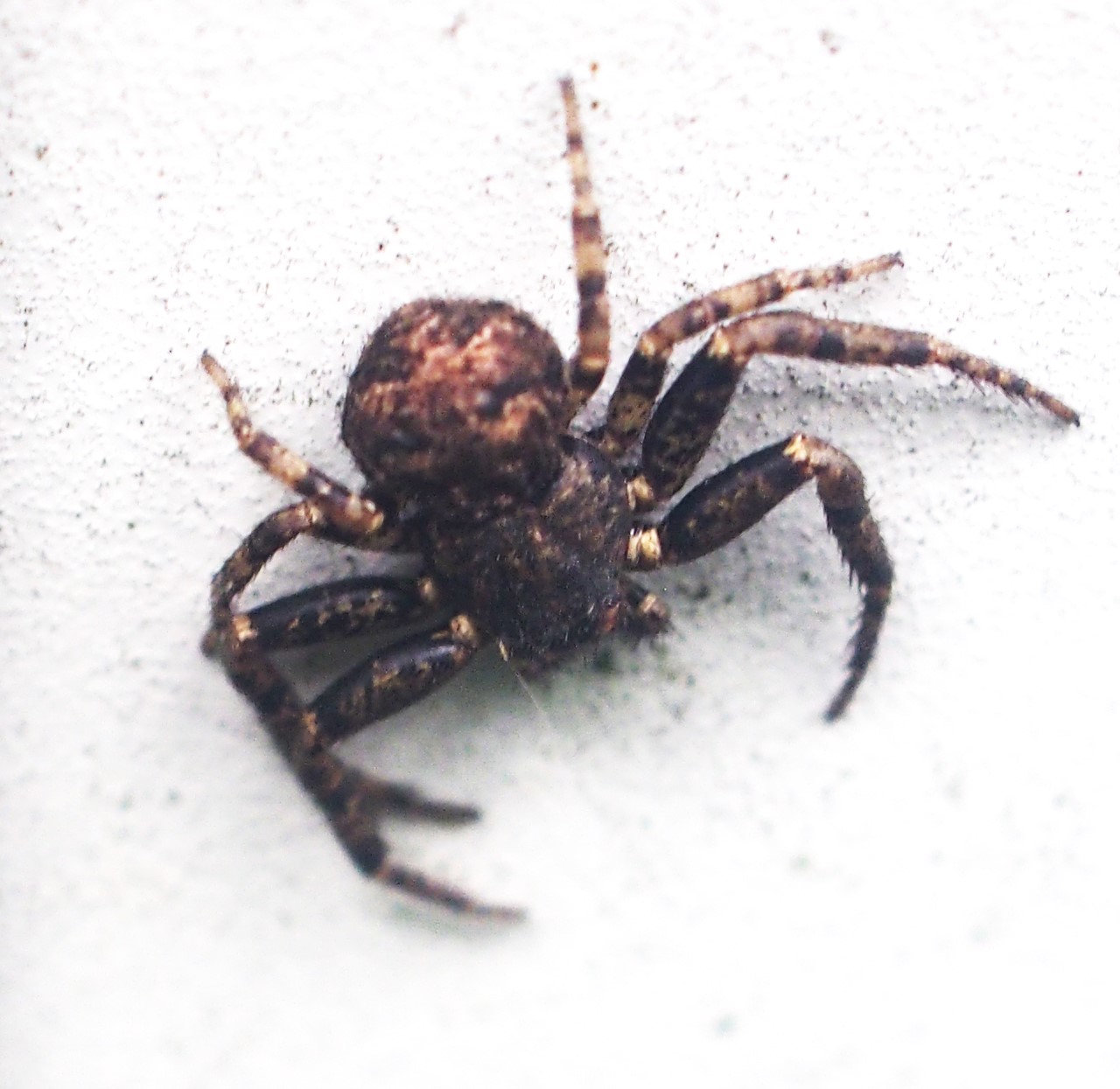
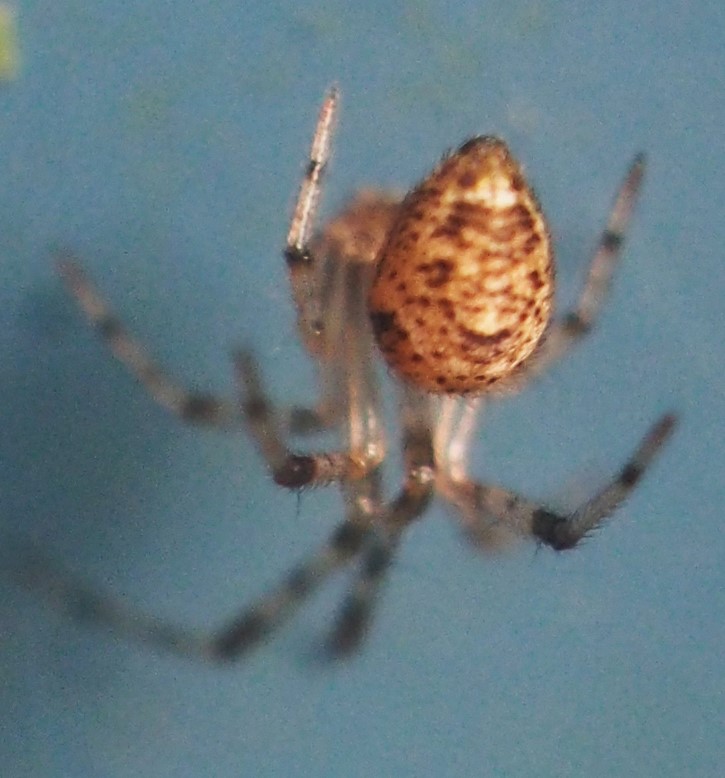
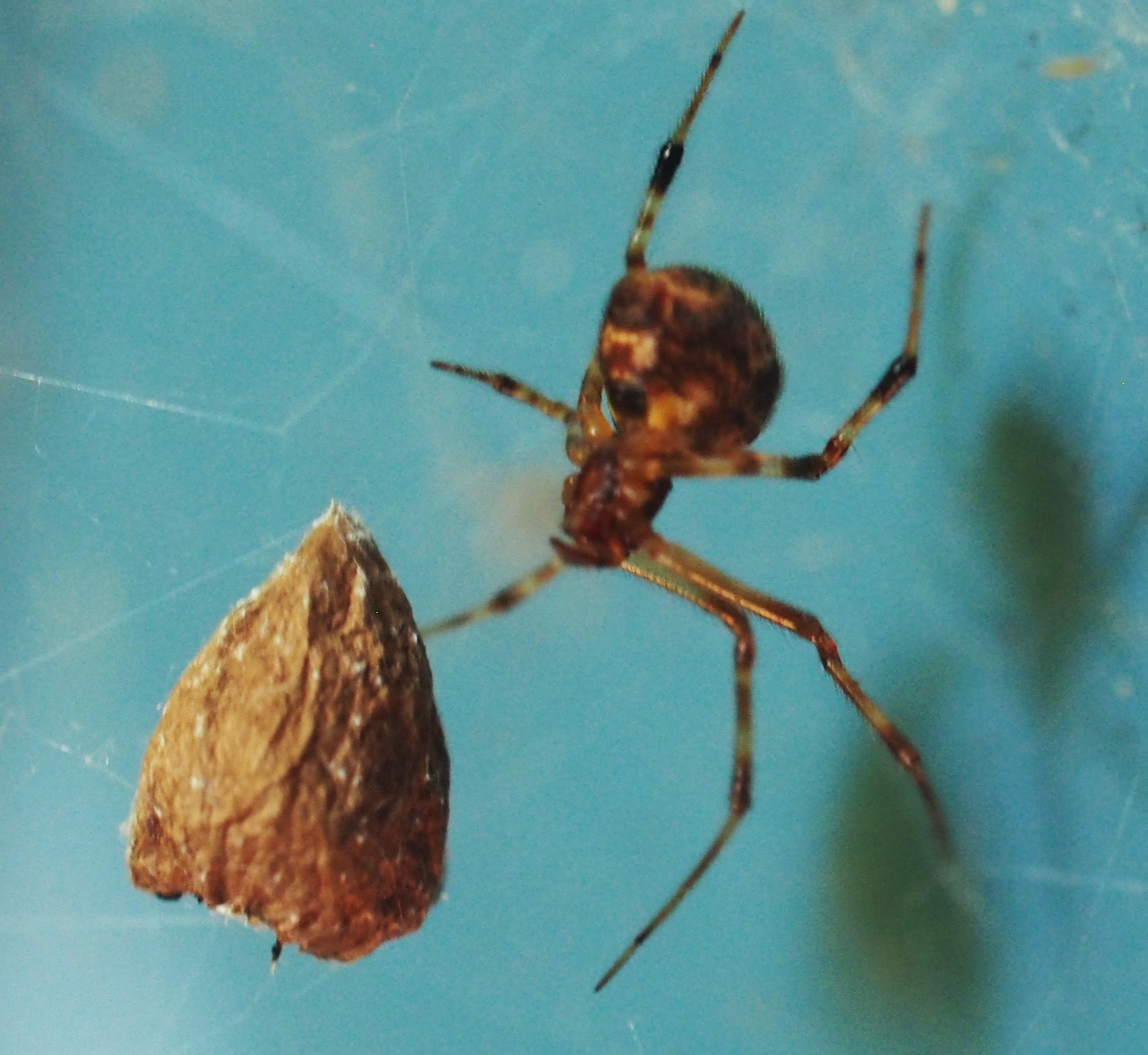
First here is a Grass Spider, which I deduce from the striped thorax. The next one seems to be wearing that ever-fresh garment, the larva of a Spider-eating Wasp. Last is possibly another in genus Bassaniana.
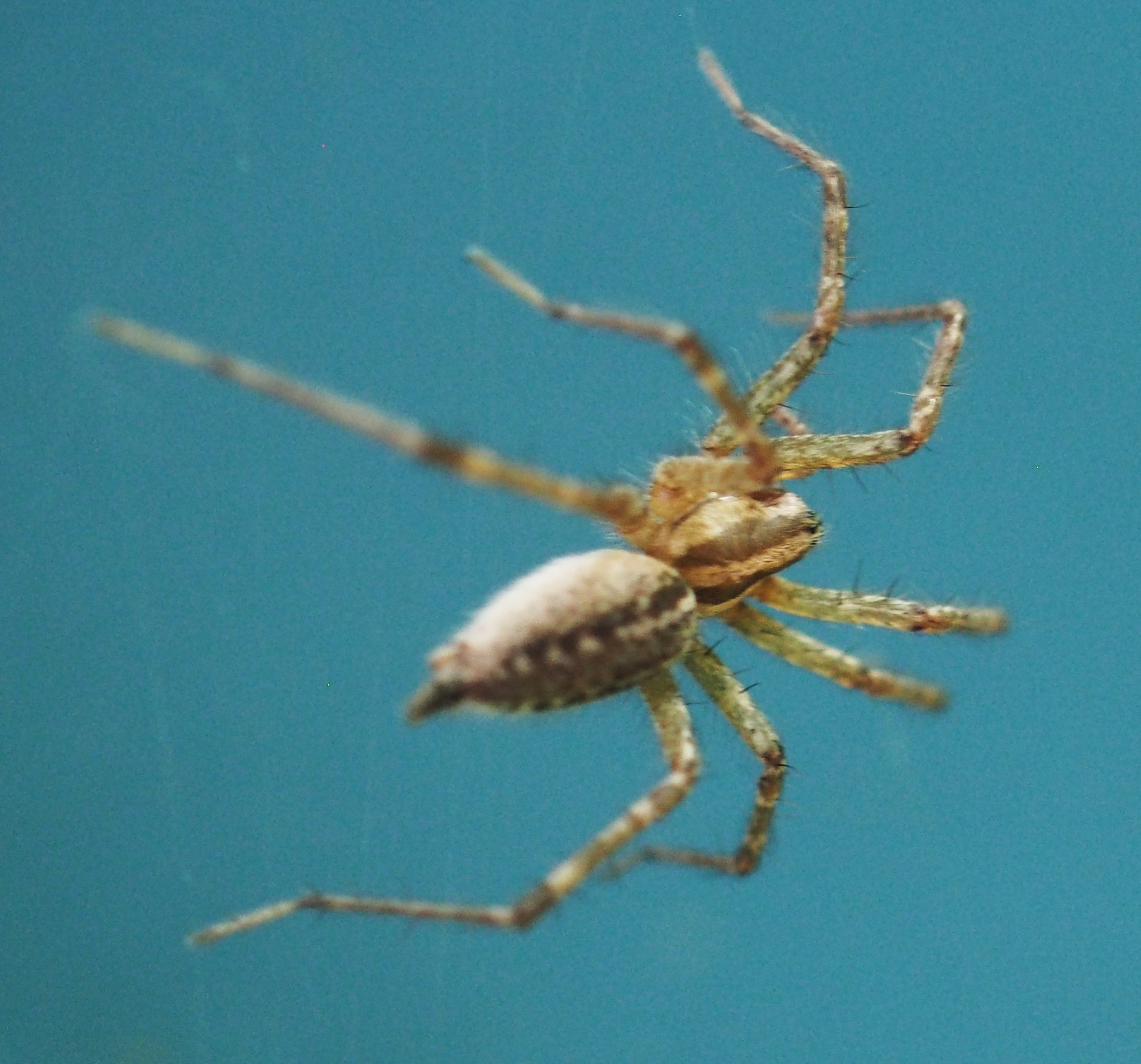

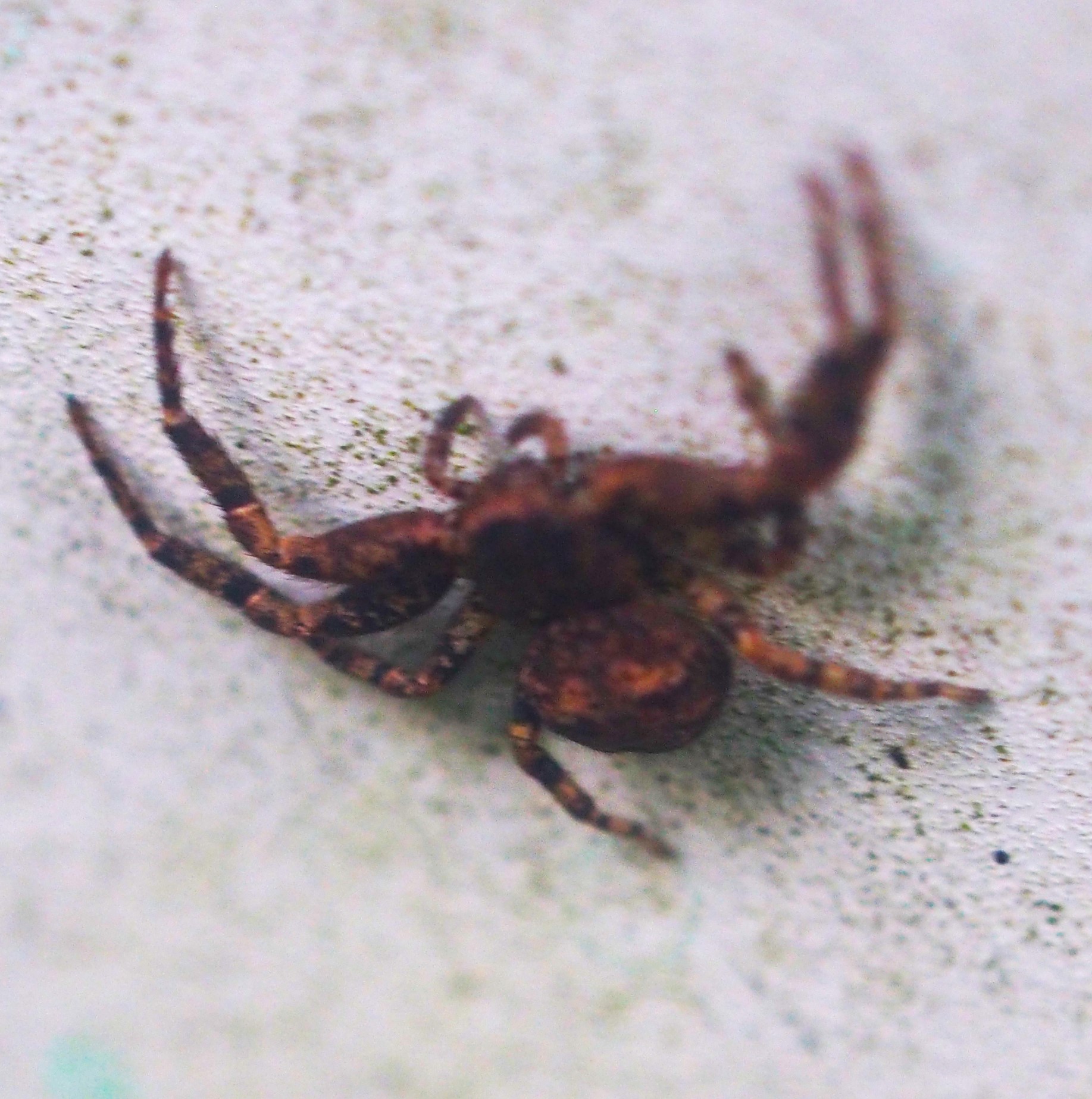
Spiders and Harvestmen are both Arachnids, but they aren't interchangeable. The Harvestmen or Daddy-long-legs have MUCH longer legs than Spiders do. Here is one that's out a lot these days.

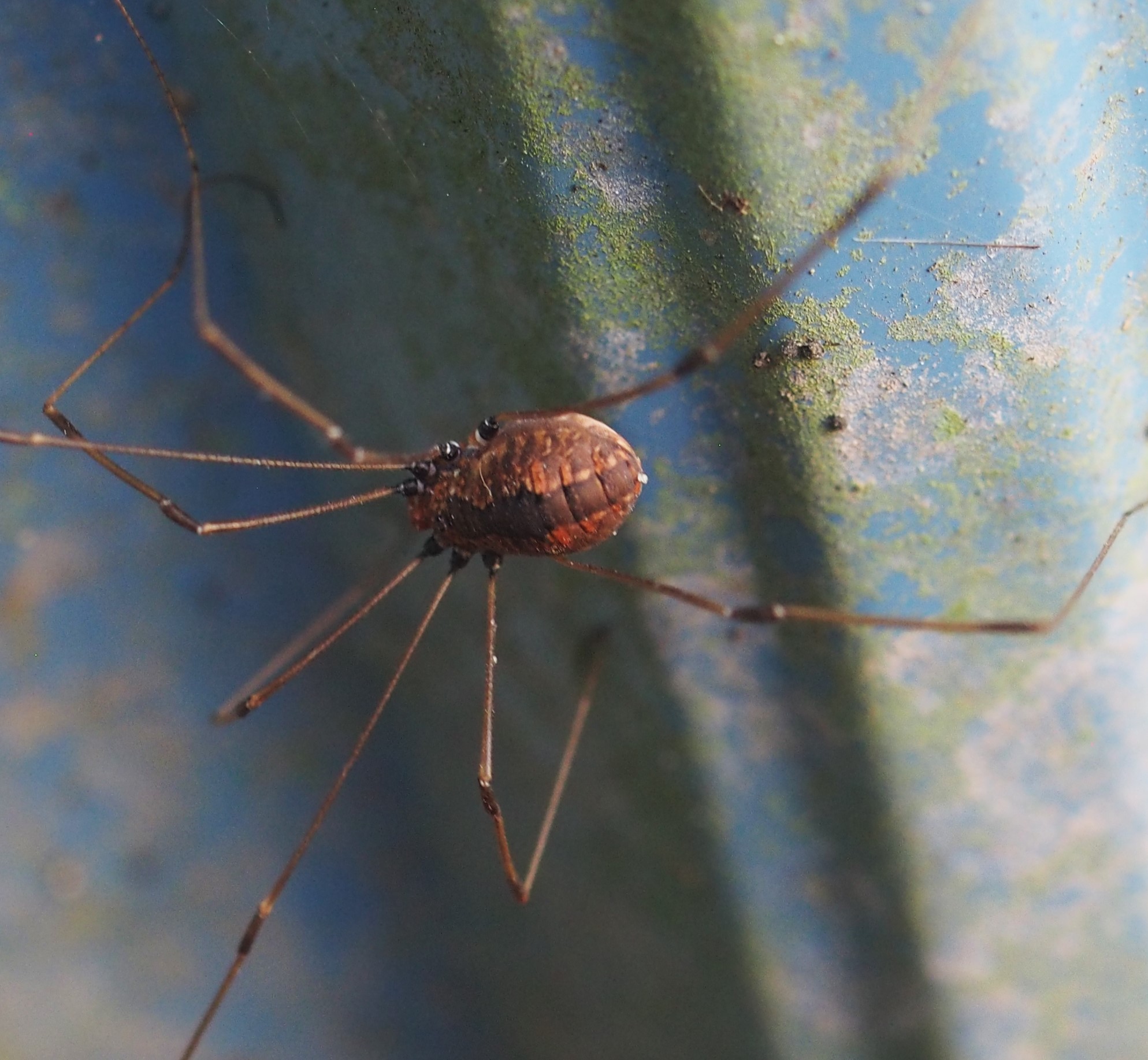
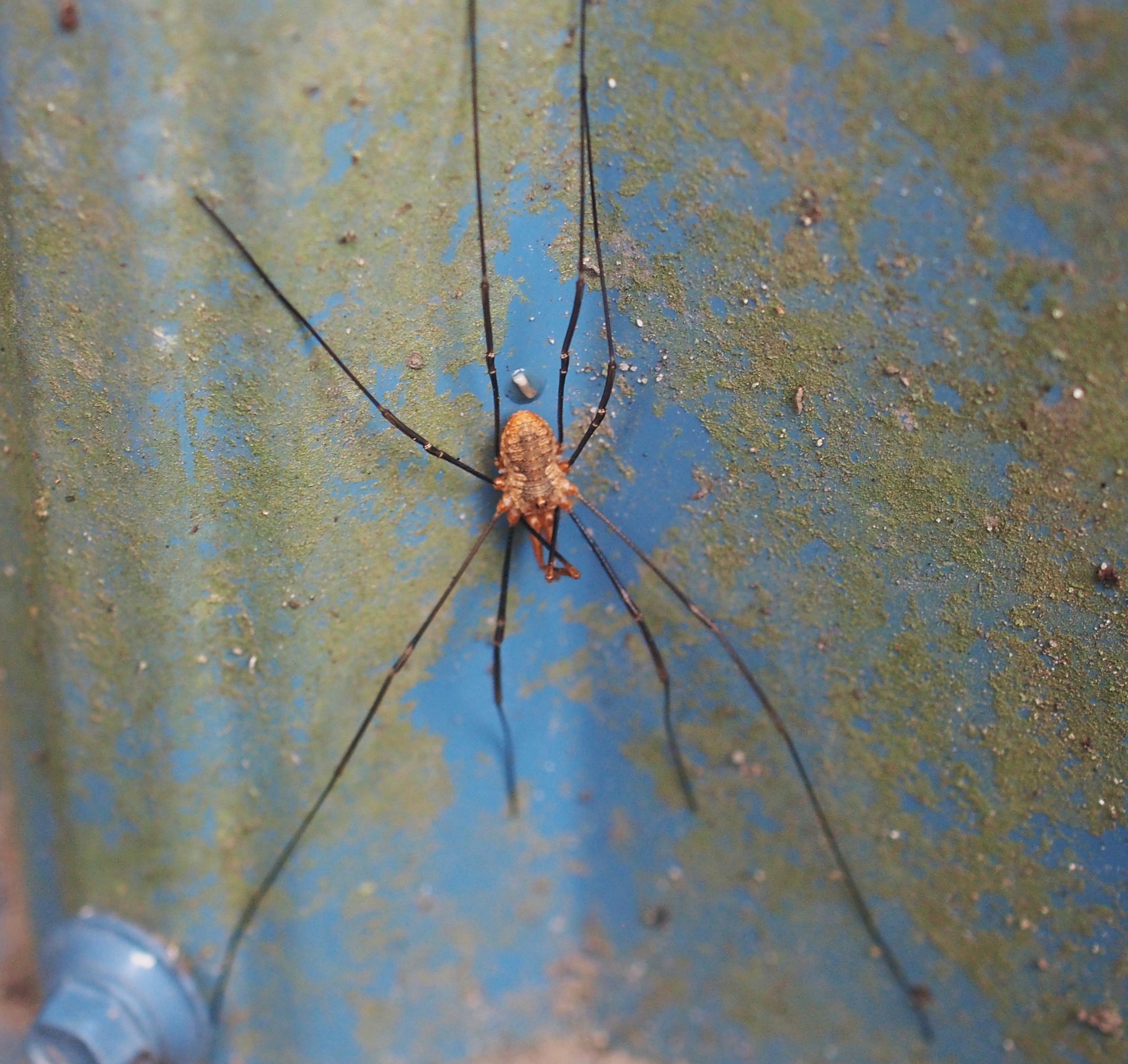
Those Wasps love the Goldenrod! I have studied them but every year I seem to be foggier than ever as to positive identifications. The one everyone is quick to learn is the male Dark Paper Wasp, Polistes fuscatus. The sign that this is indeed P. fuscatus is the black body with a large red-orange spot on the first large segment of the abdomen. But careful - even though I can't see the spot on number 3, others can deduce some other way that it is indeed P. fuscatus.
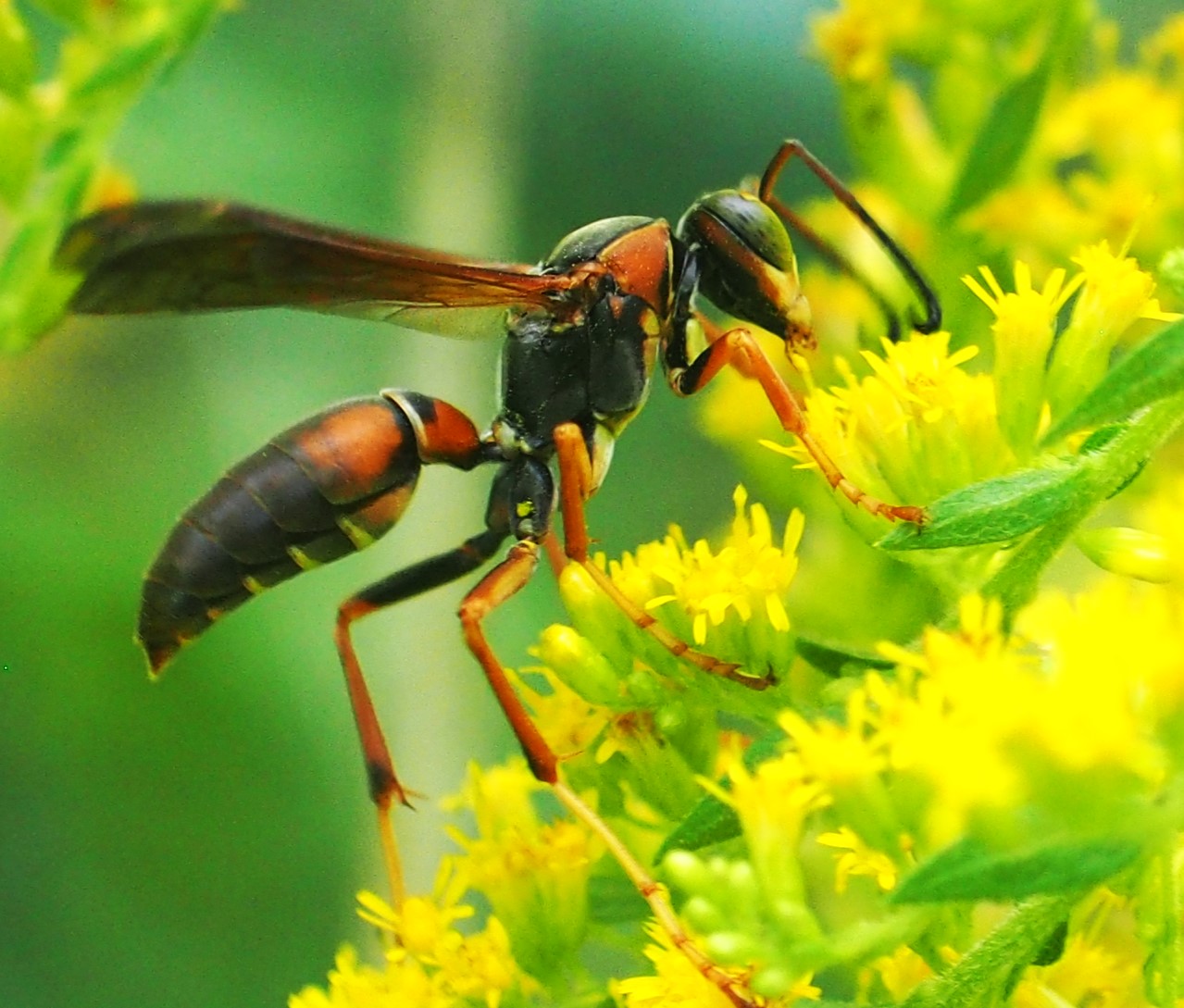
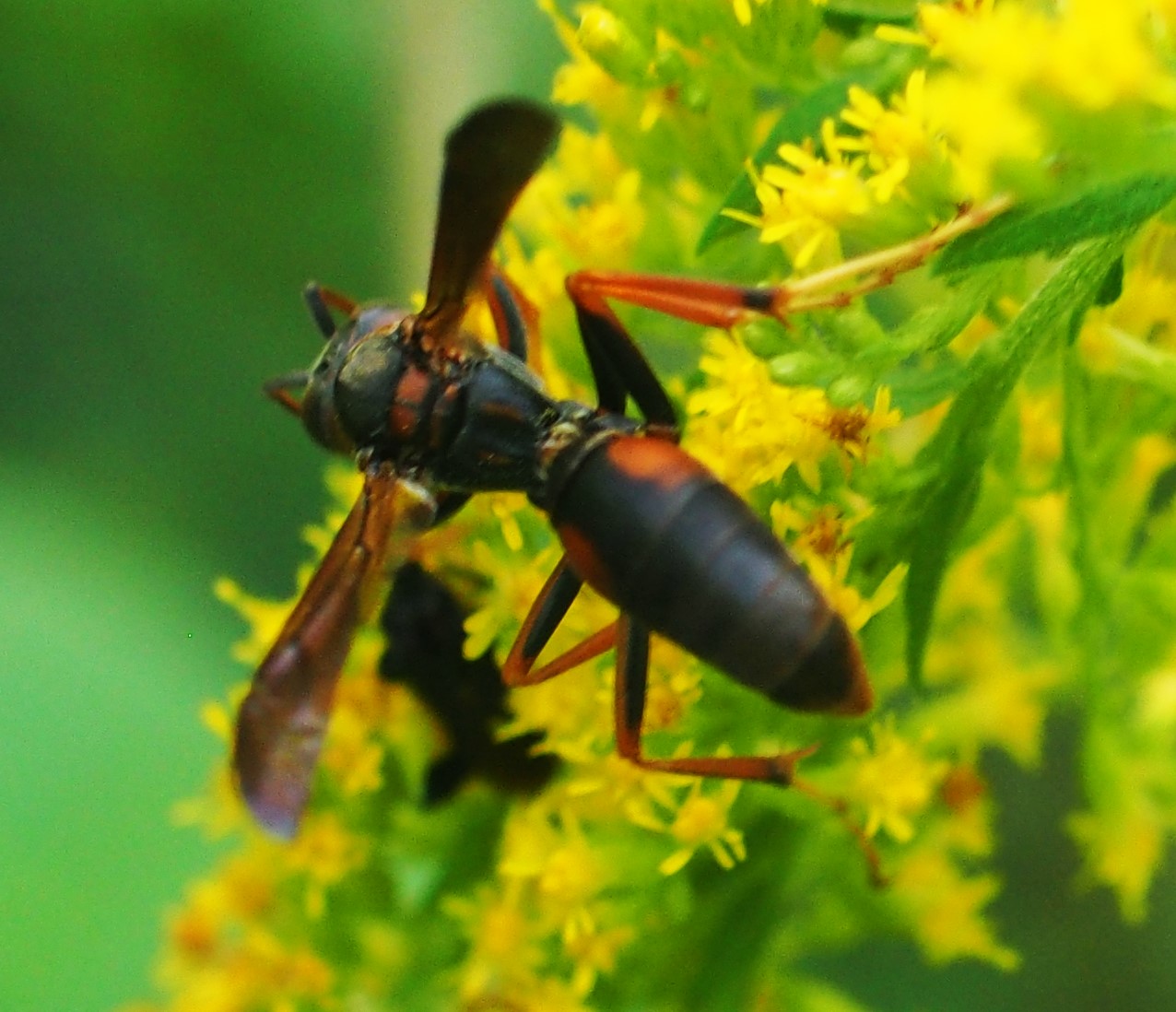

Another one that is easy (with some practise) to see is the Black and Yelolow female European Paper Wasp. Here are three shots - I think that middle one is kind of Halloween-patterned. We see a lot more females of this Wasp because they come to the Pond to get water to mix with paper pulp to make and enlarge their nests. The whole thing of naming this species MAY be somewhat sexist. The species name is "dominula" implying a woman who rules the roost. Well, she BUILDS the roost, feeds the larvae, tends the Queen, and gets no respect. The queen mates with the male and lays the eggs. MWAAAAH to you girls!
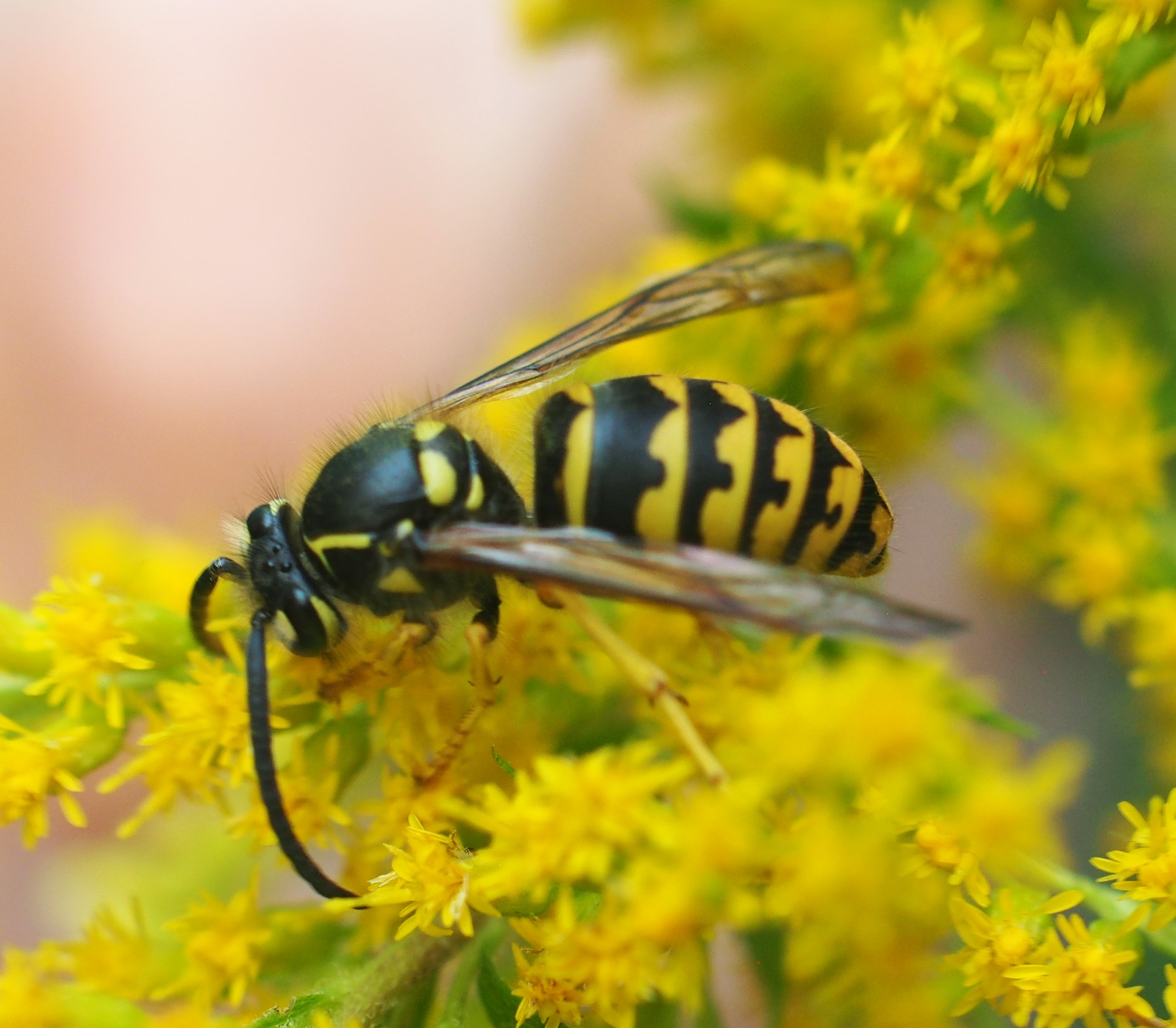


Let's step back from the Wasps to see some other species that I usually don't see, partly because they are so well-camouflaged. These are the Grasshoppers and Katydids. This first little one is a Short-winged Green Grasshopper. Brandon Woo of iNat diagnosed it. The second one is a Scudder's Bush Katydid. I'm waiting for an ID for that one too from Brandon Woo. This week we were lucky to find a big black Cricket in the grass. I haven't sent it in yet, but I'm pretty sure this is a big black Cricket. These three - Grasshoppers, Katydids, and Crickets - are the major members of the Order of Orthoptera.

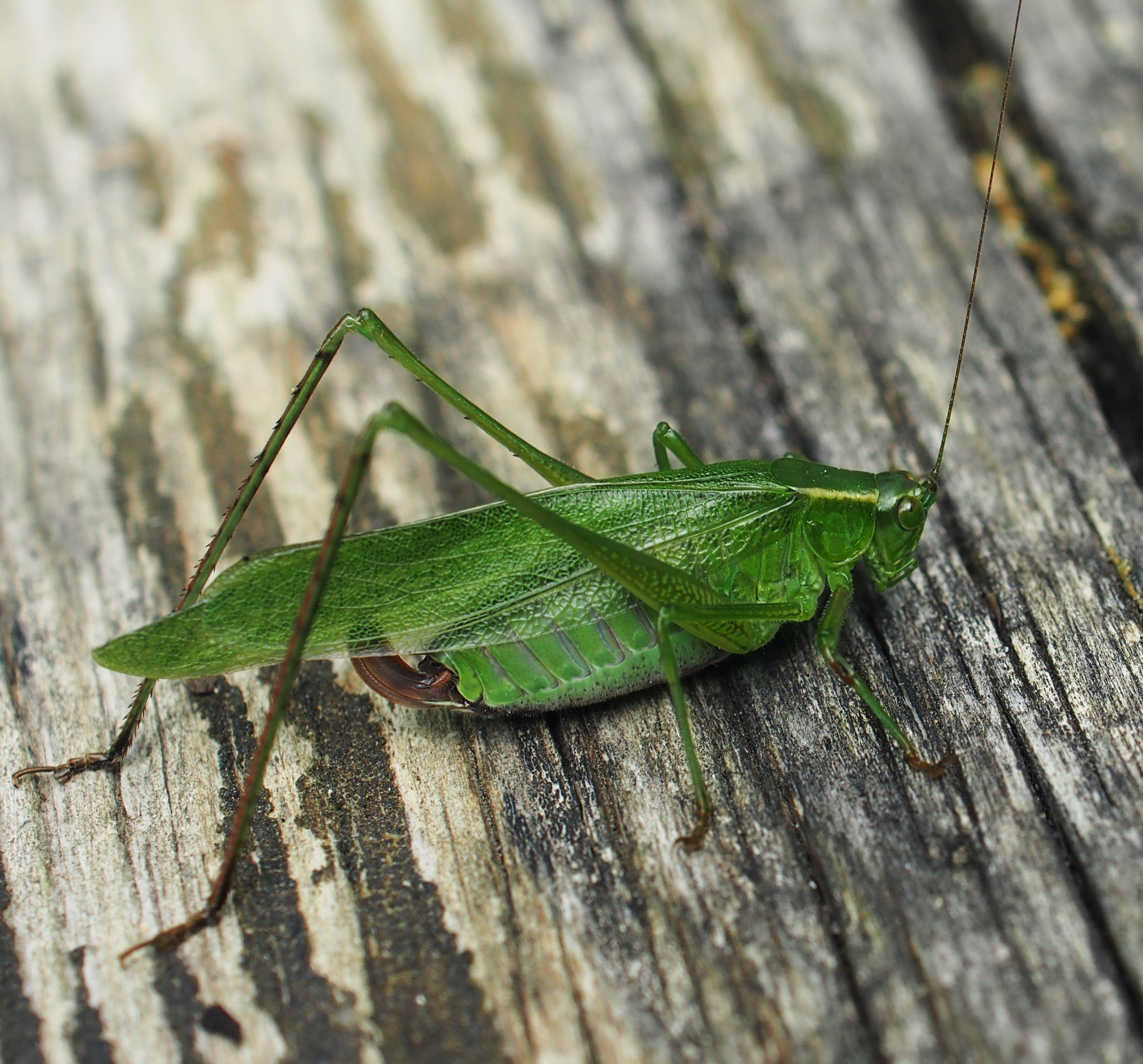
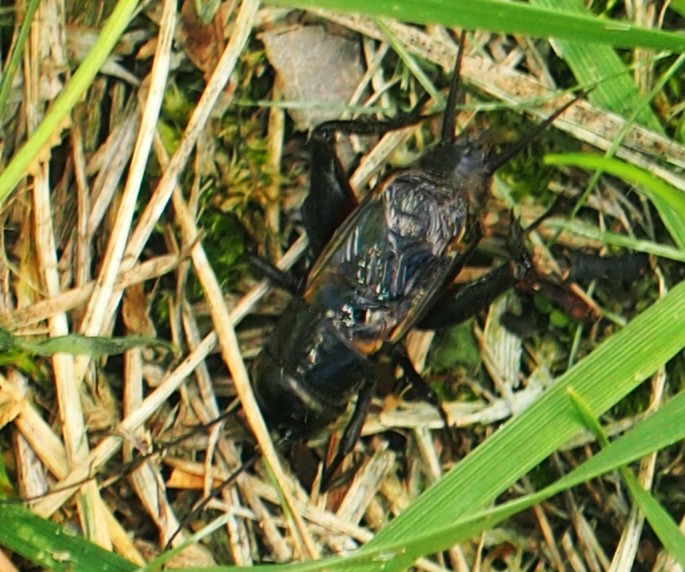
Let's go to the Pond for a closer look. A good bit of floating matter in the water was making the pictures somewhat harder to visualize, so I added a little Flocculant (meaning something that makes these small particles clump and fall to the ground, in this case meaning the bottom of the pond) to the water and now we can see the fishes and other things under the surface a lot easier. I also used my new floating pond thermometer and found that the water temperature was just about 60 F. In the spring, I had begun feeding the fishes when the temp was at least 55 F. So I think it will be soon before I can't feed my friends. (By the way, that thing covered in flocculants that looks like a potty is actually the pot in which I planted some lilies that did not seem to make it.)
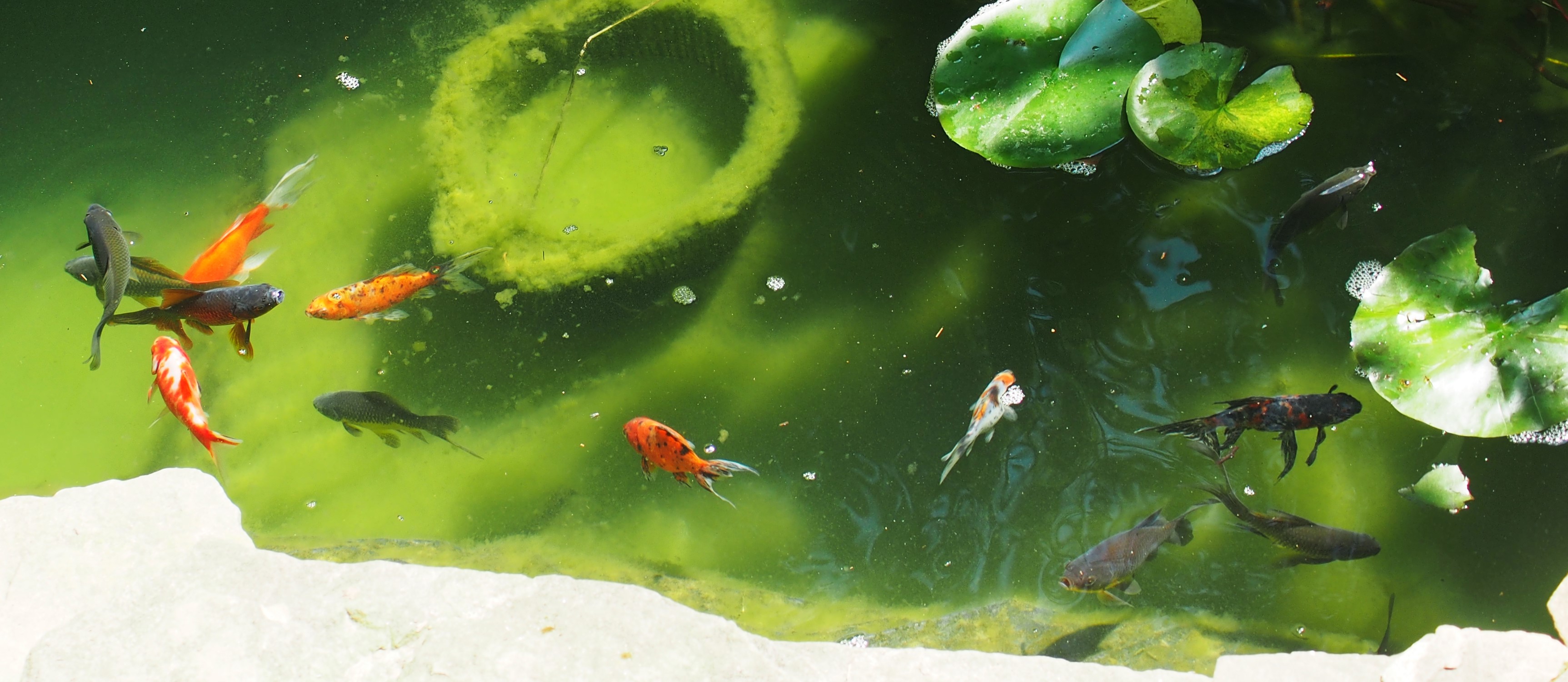
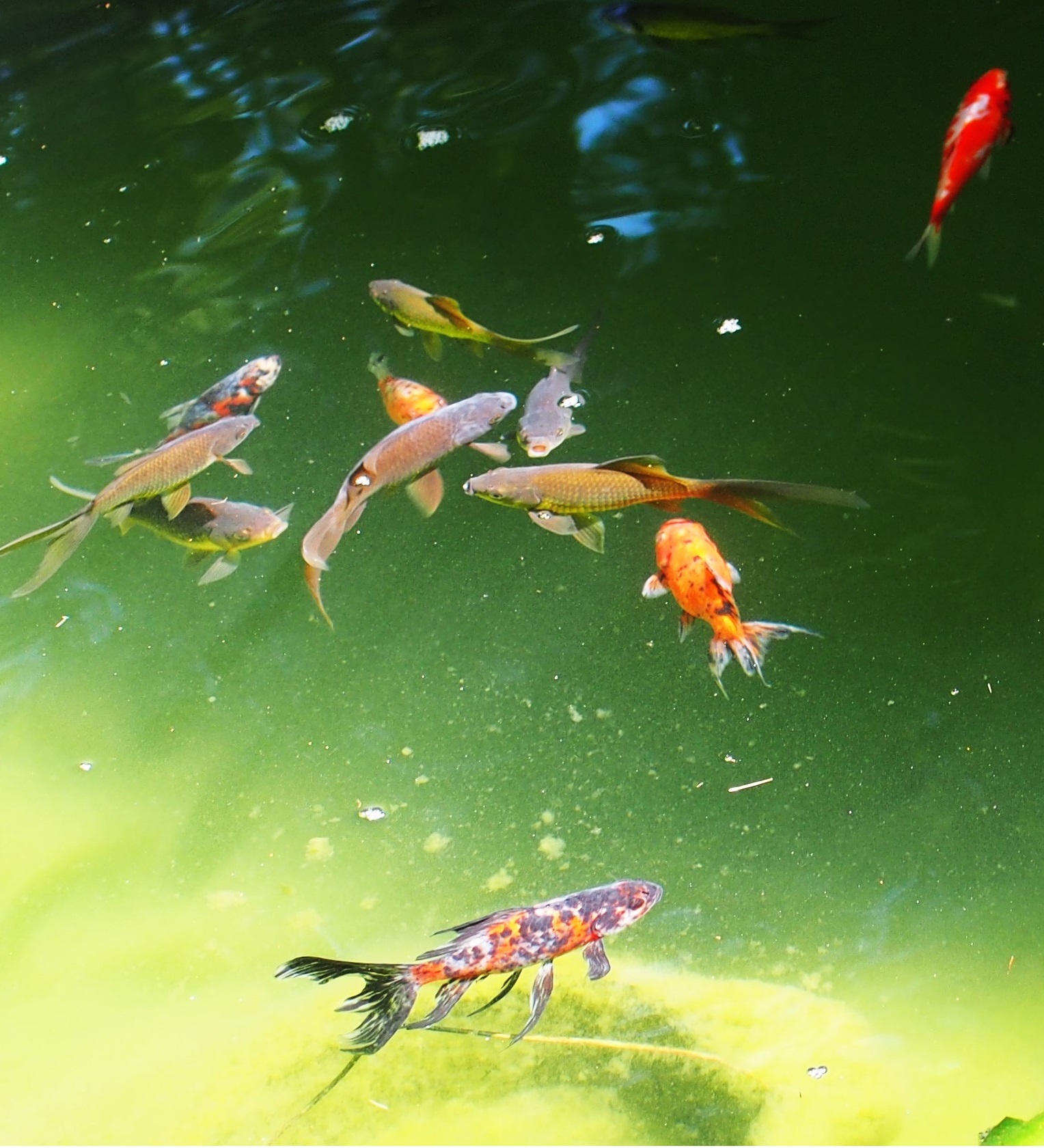
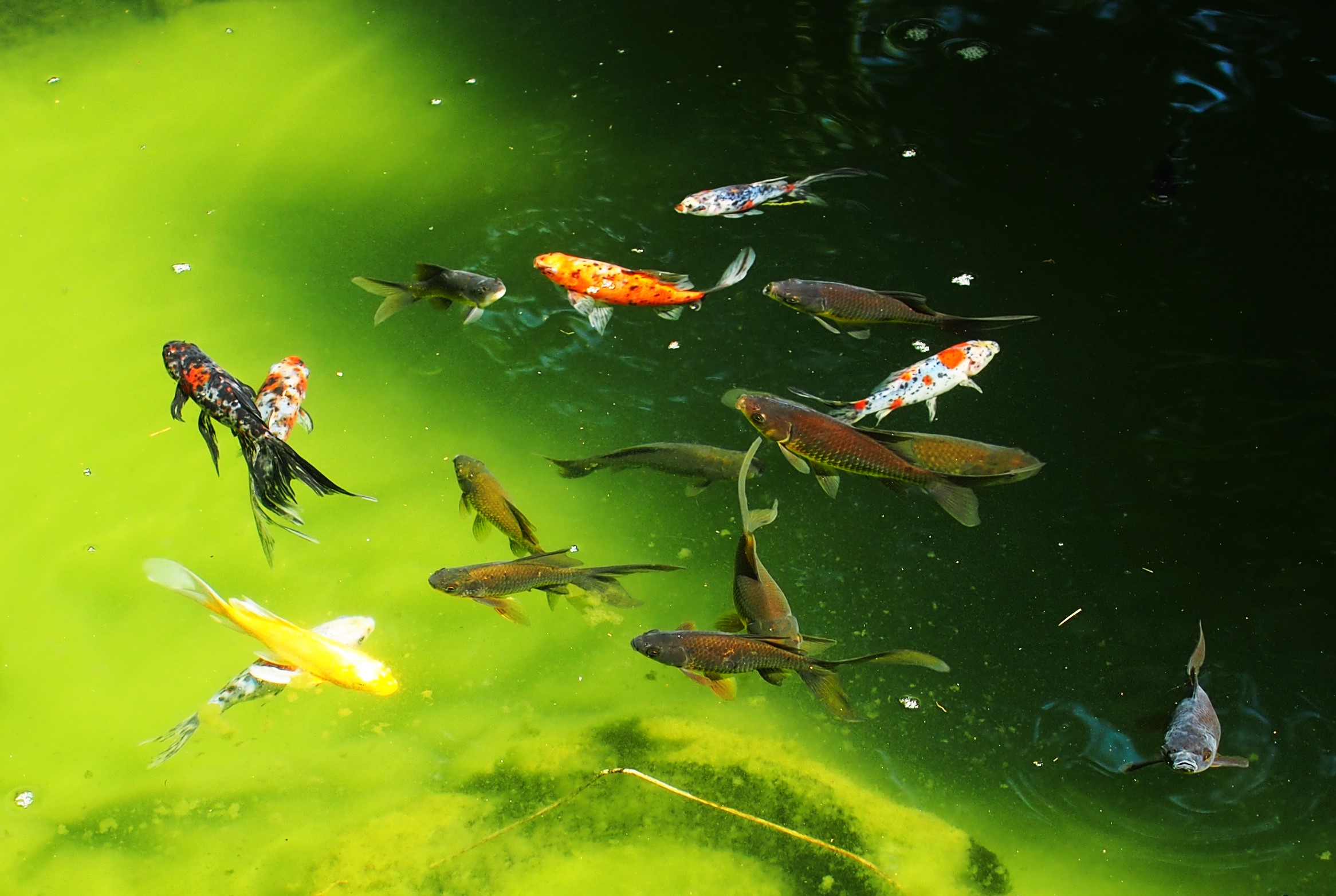
And the Frogs? Since each day seems to be starting out a bit cooler, they are taking longer in the morning to get moving. The smallest Frogs, the ones that I'm calling the Tinies, seem to be larger and hopefully stronger each day and so I'm hoping that they will make it through the winter if they can keep on eating and gaining weight. Here is one that seems to be making a funny face at us; our big male Tonguey; and a couple, one right over the other. That top one is a beautiful female who has filled out over the summer and seems ready for the winter. Click on her a couple of times. You can also scroll to the bottom and see the other fellow. How different they seem!

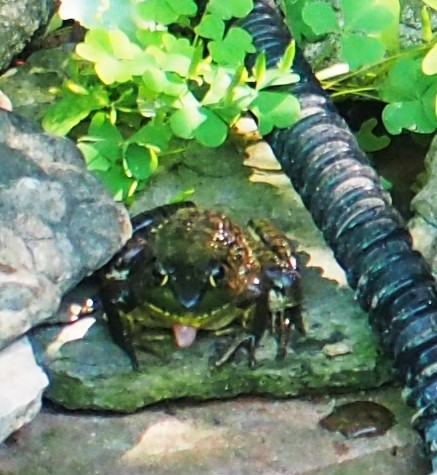
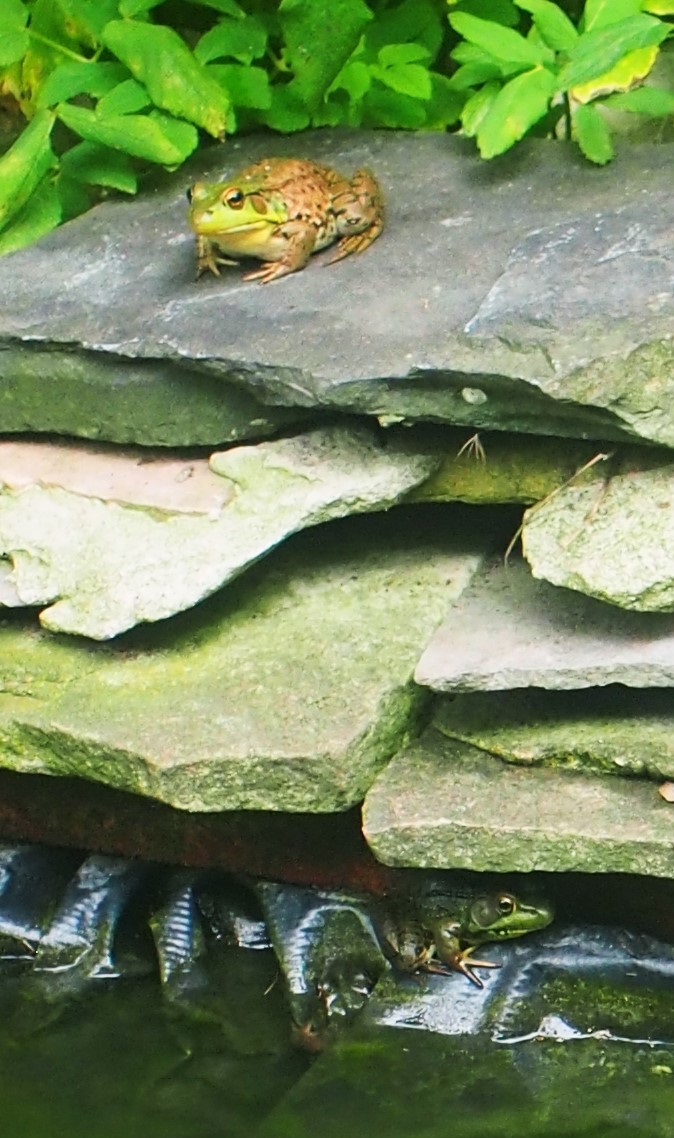
Let's see some more of the beautiful scenery with several colors mixed together so handsomely. I especially love the mixtures of Aster and Goldenrod.
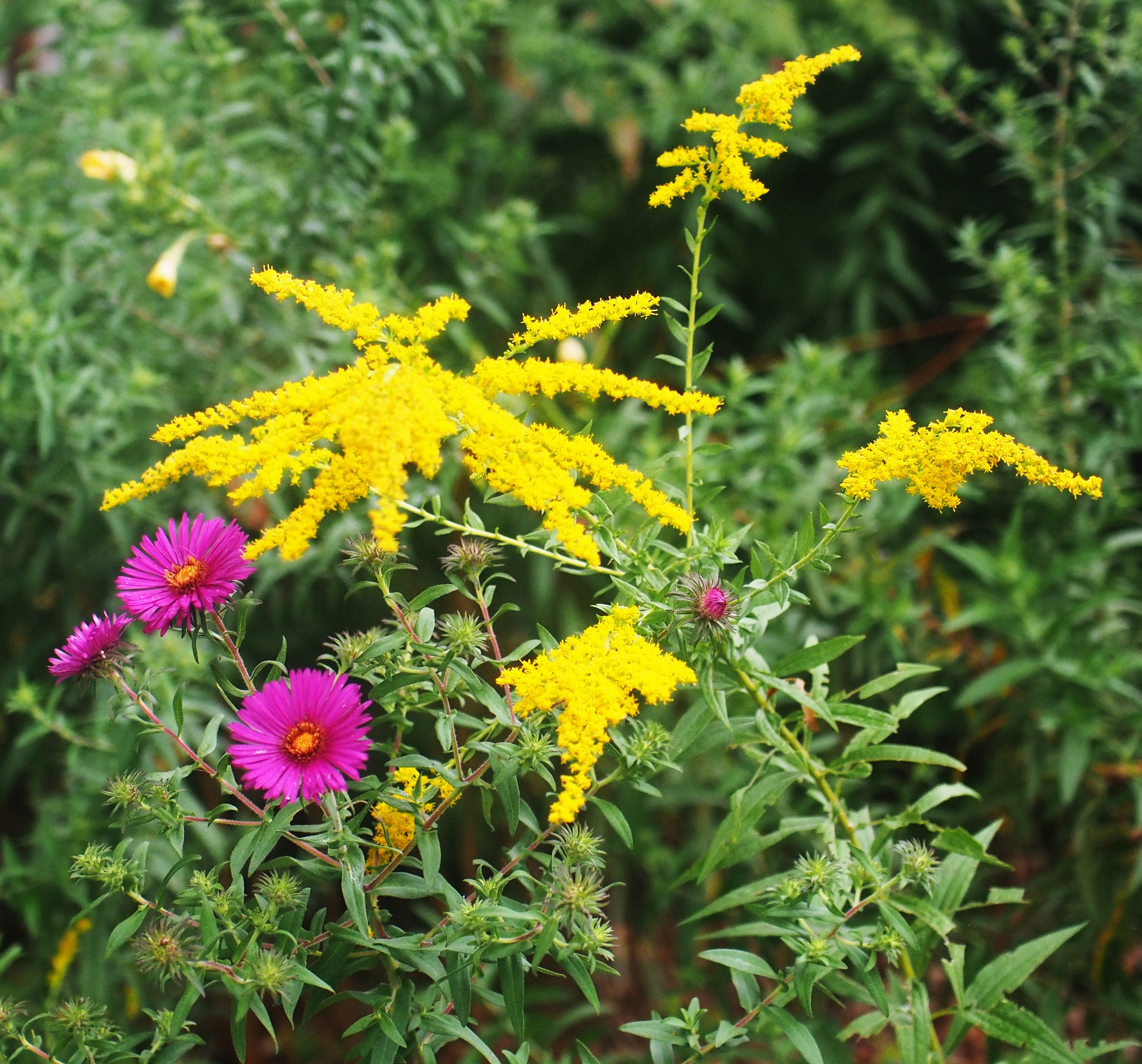
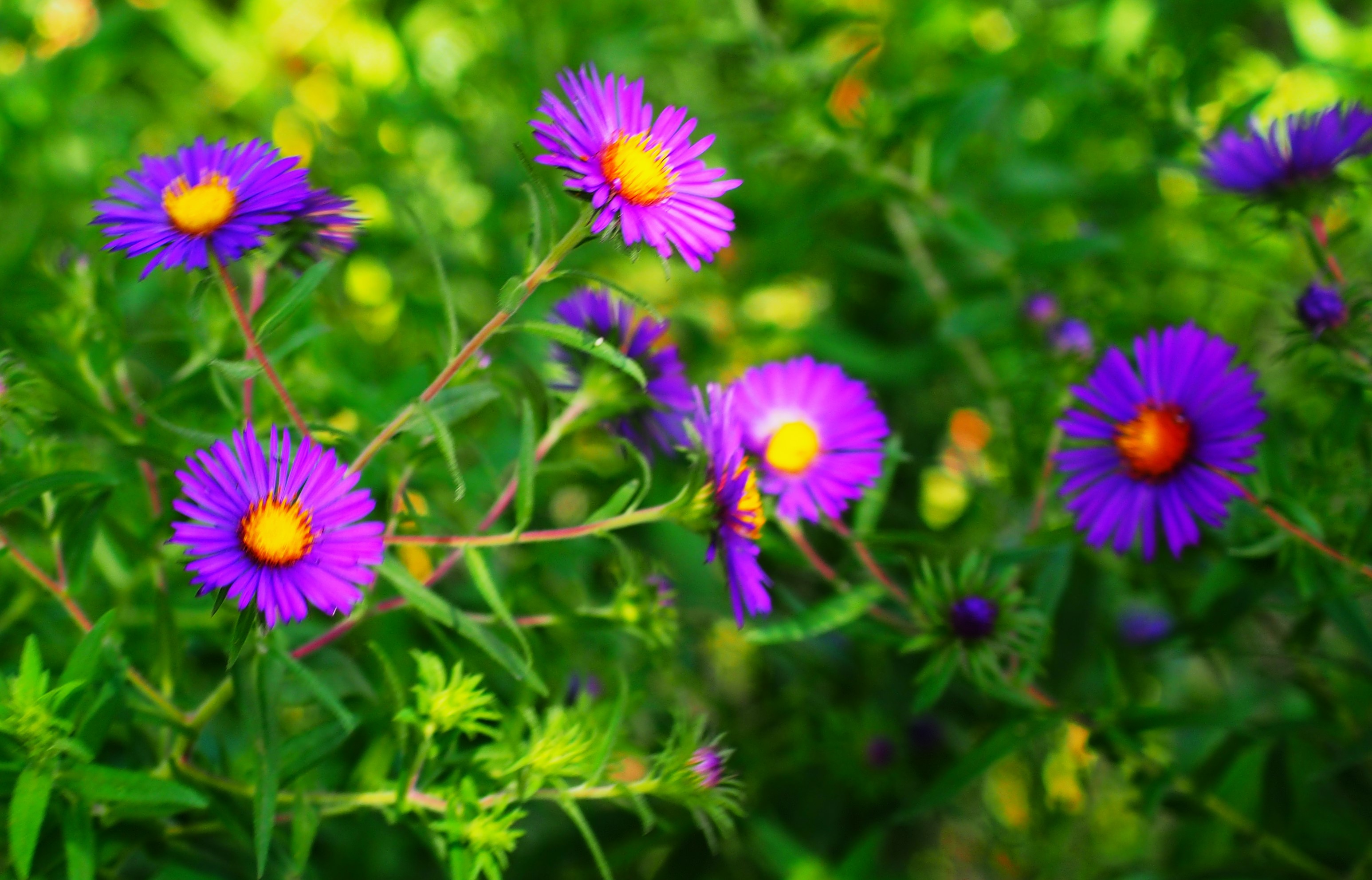
Another of my favorite pictures.
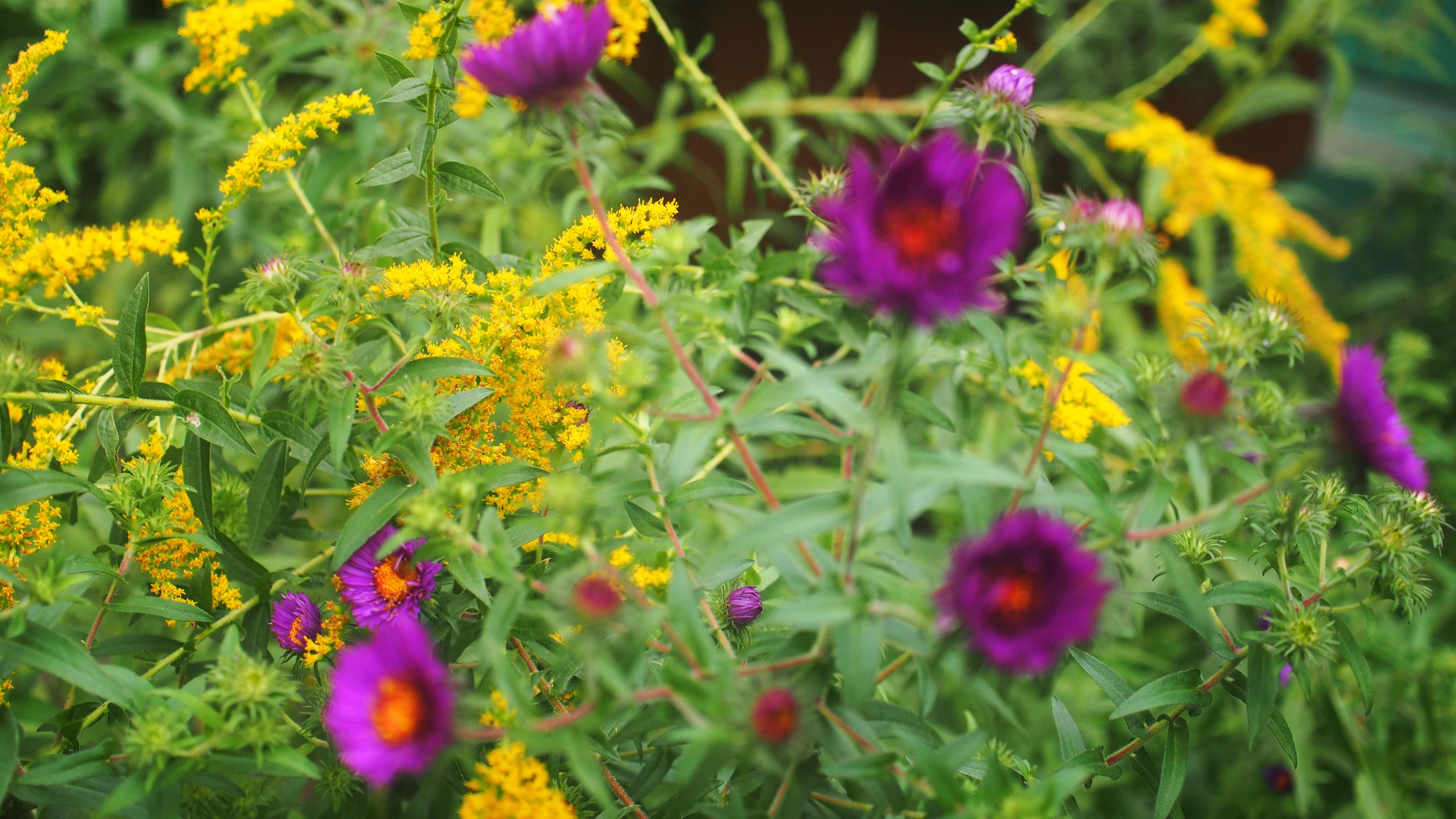
Another favorite scene, this from the afternoon of September 5.
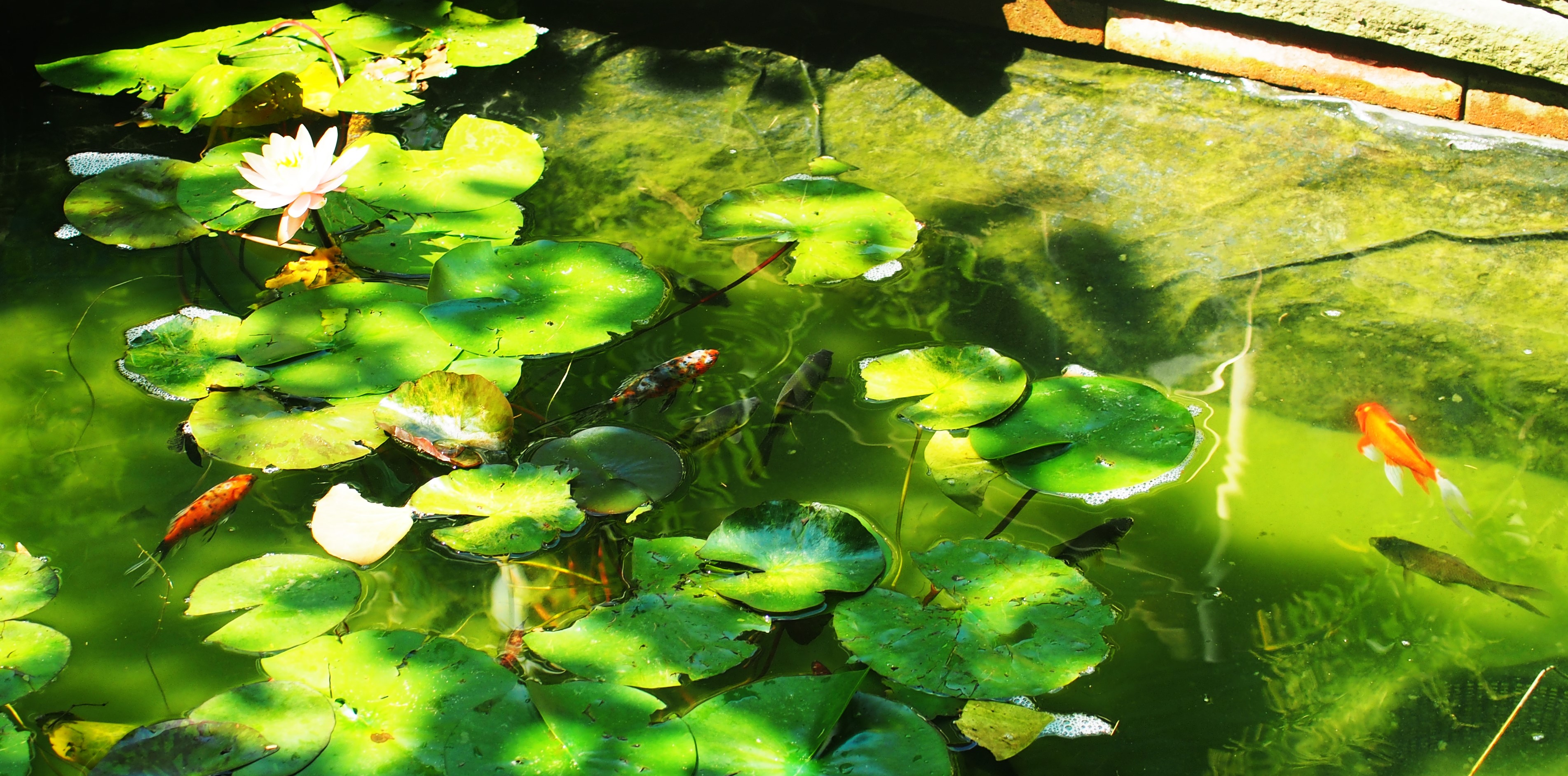
Thanks for visiting my yard again. I hope that gardens, ponds, rivers, and other scenes of beauty mean a lot to you. This is our only most beautiful earth. Let's keep it that way for ourselves and others.
Love, Martha
Back to August 27, 2023
Forward to September 17, 2023
Back to main menu
copyright Martha O'Kennon 2023













































































































